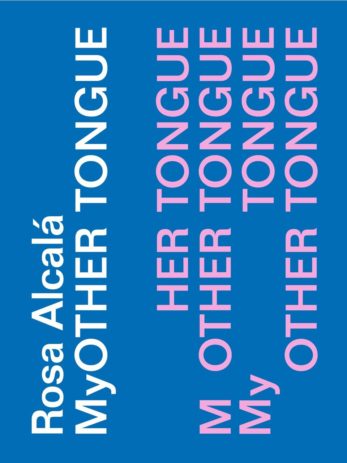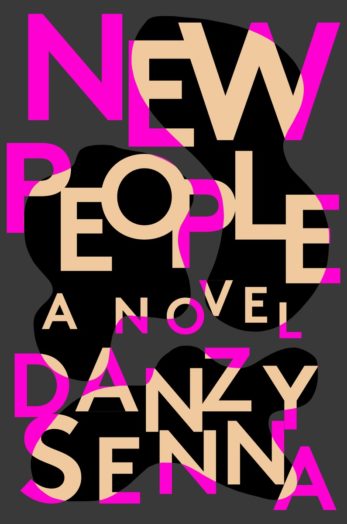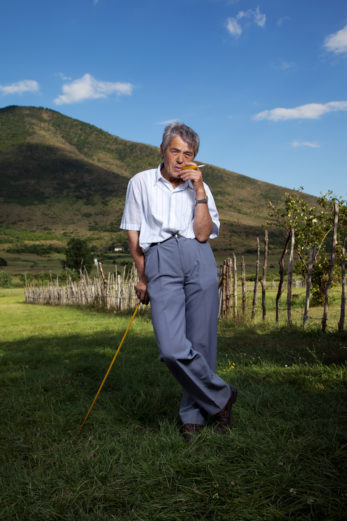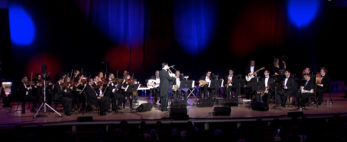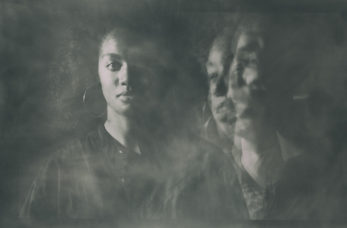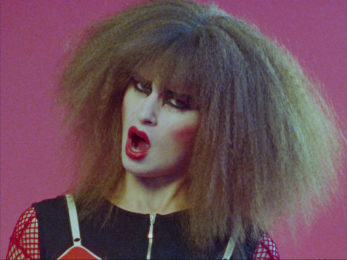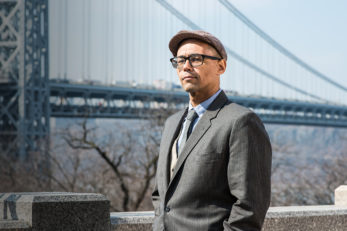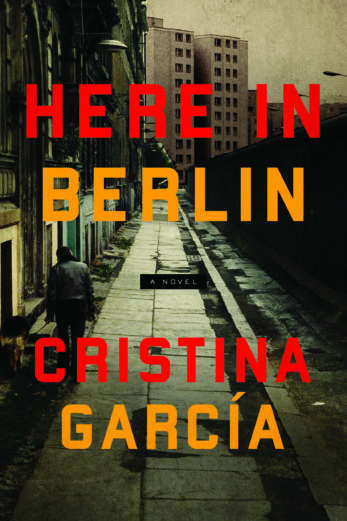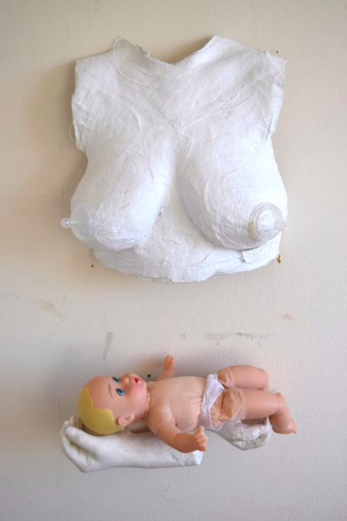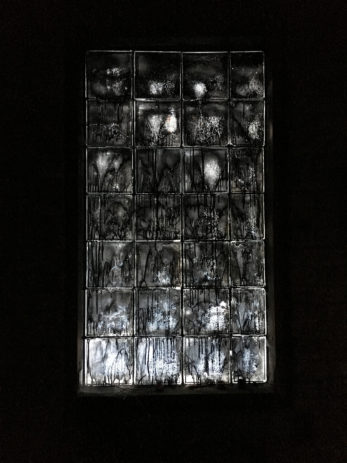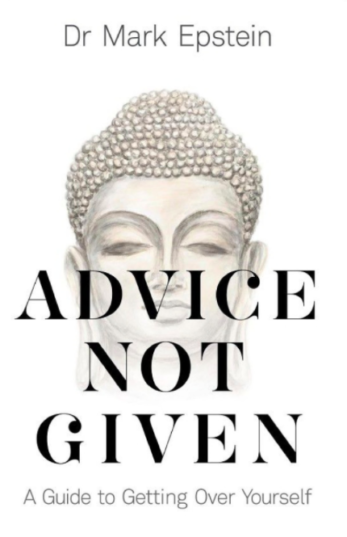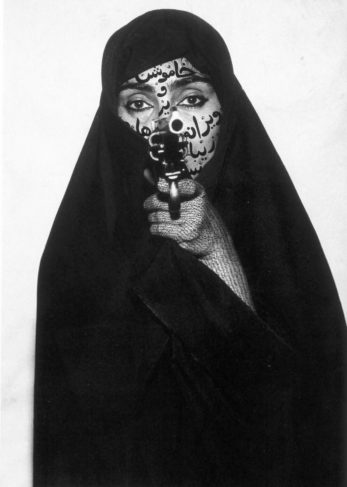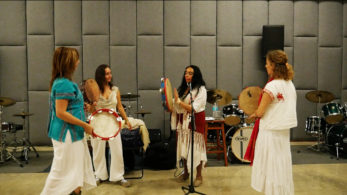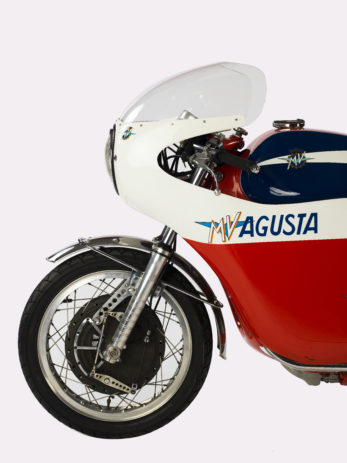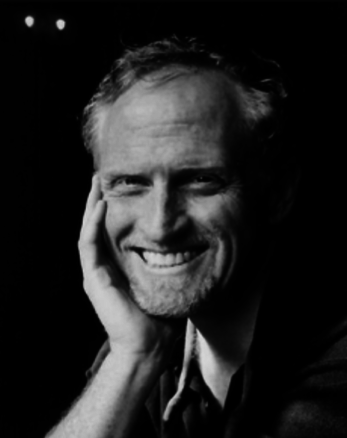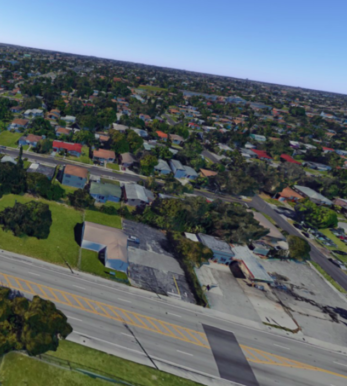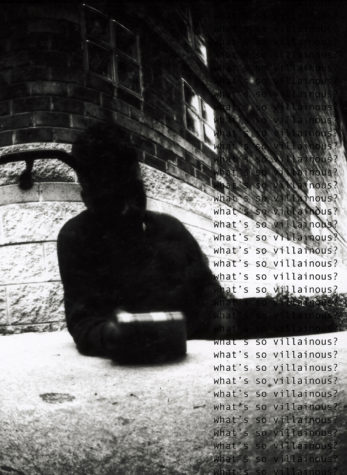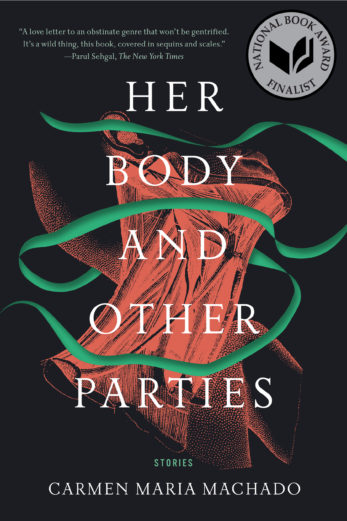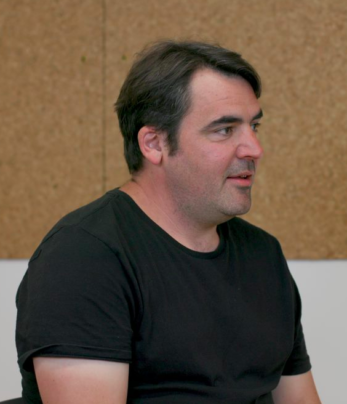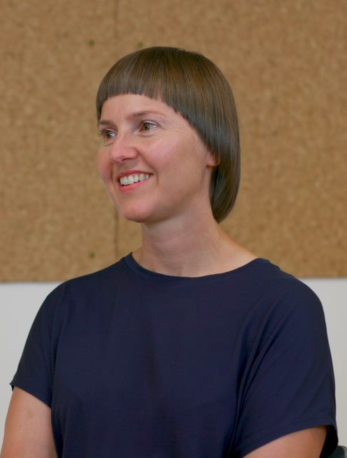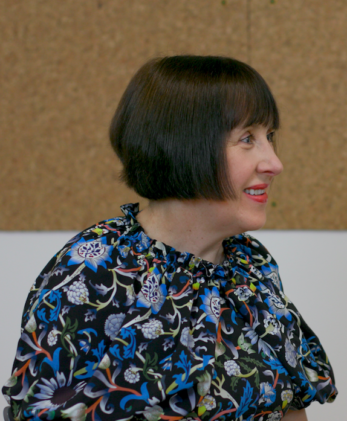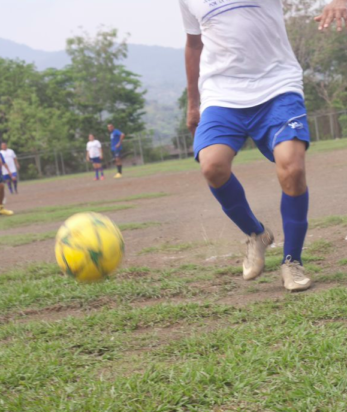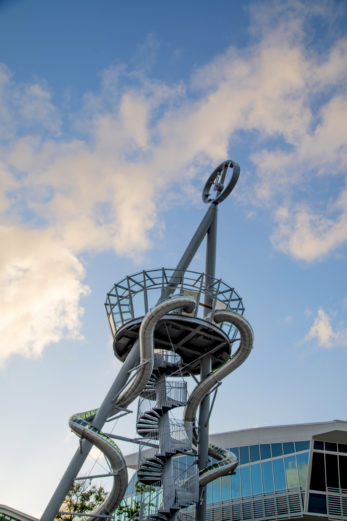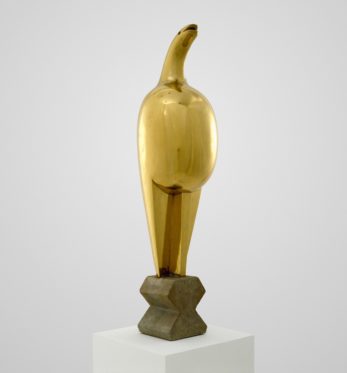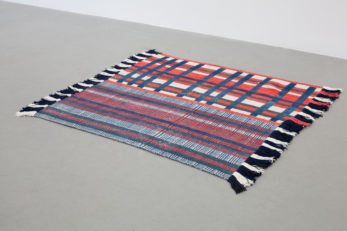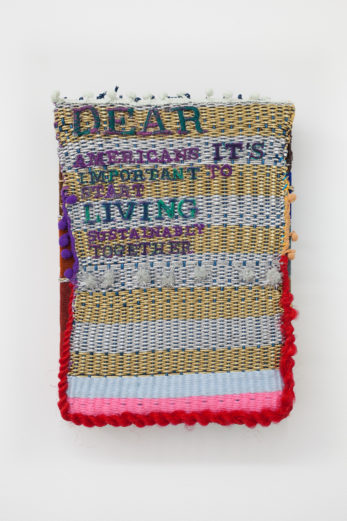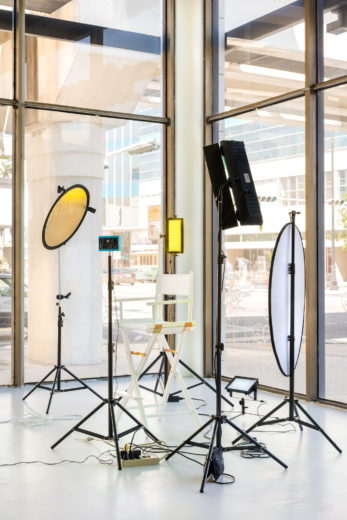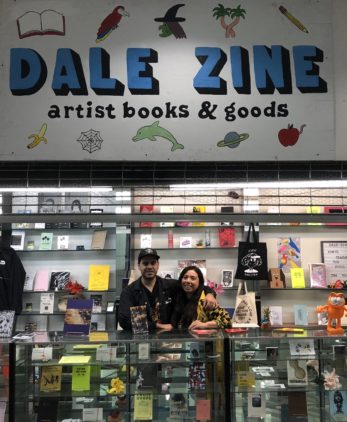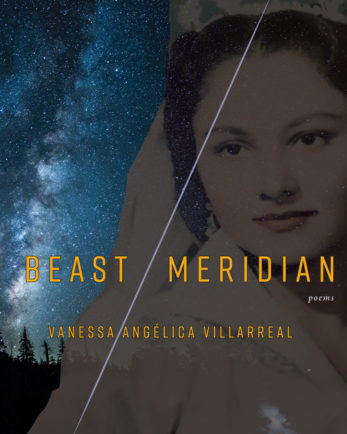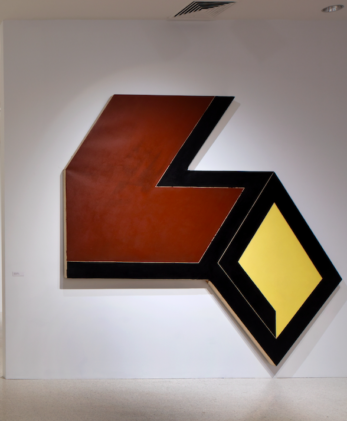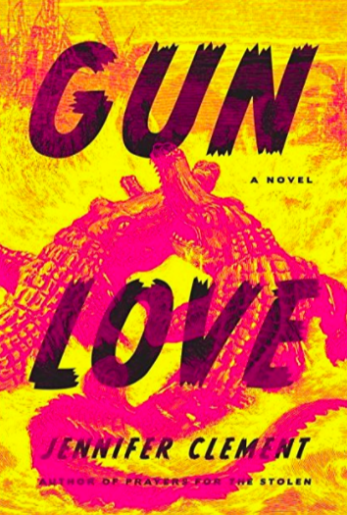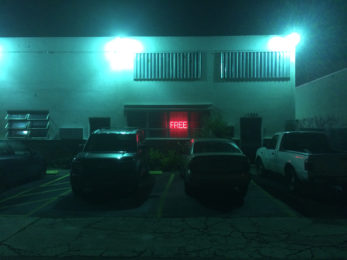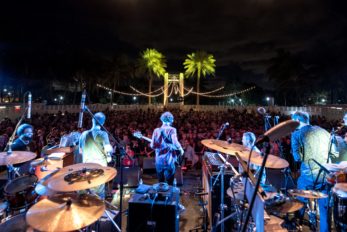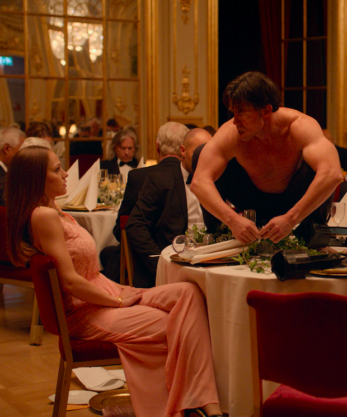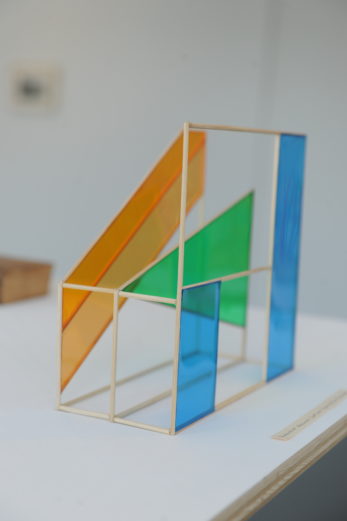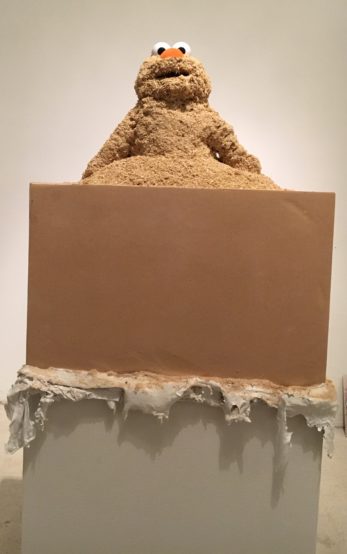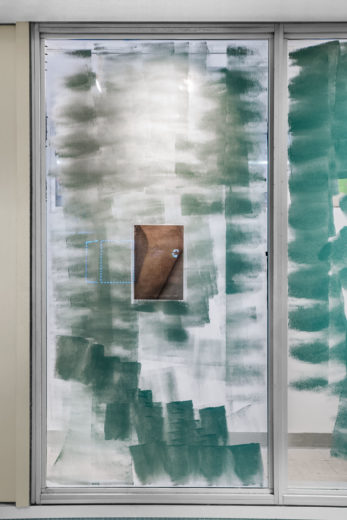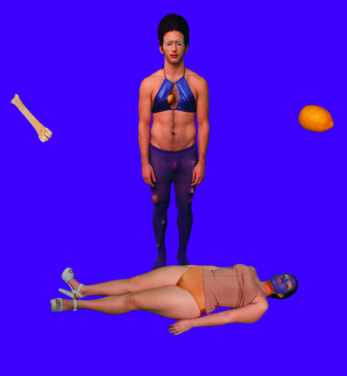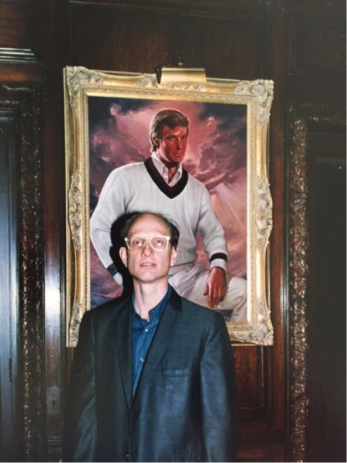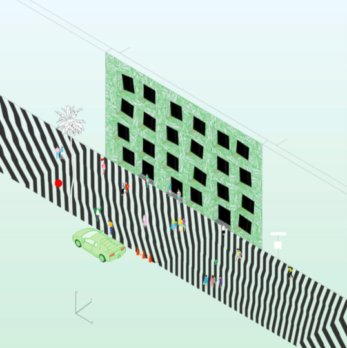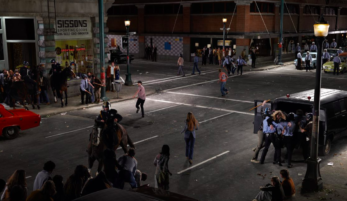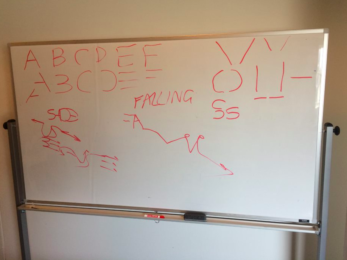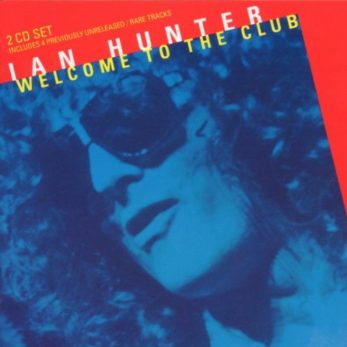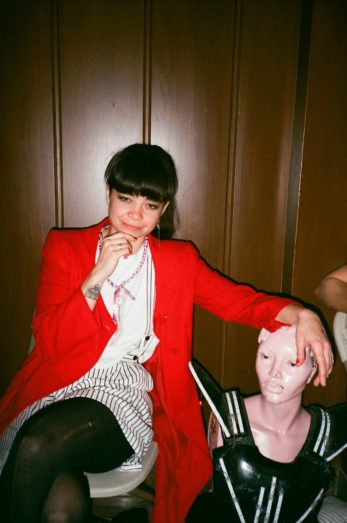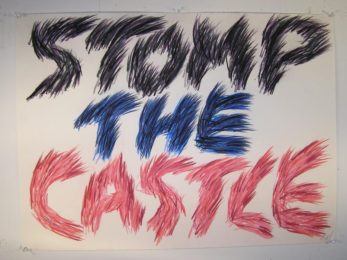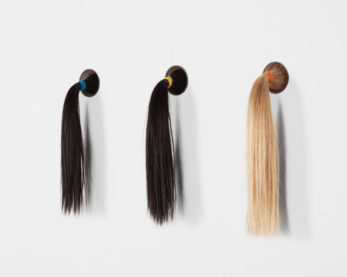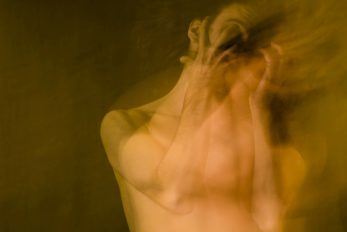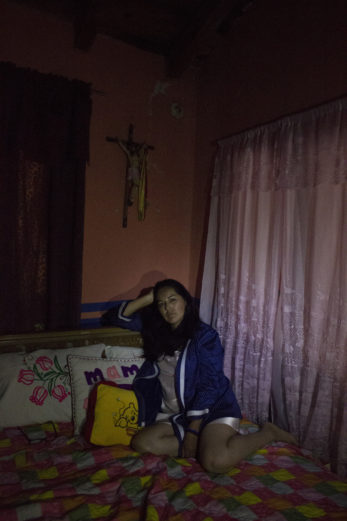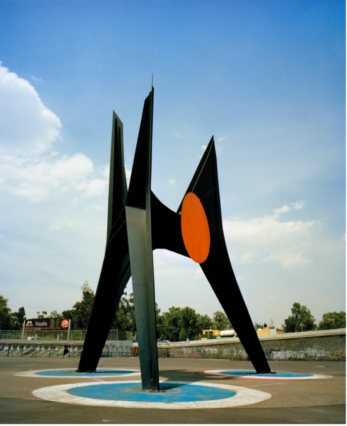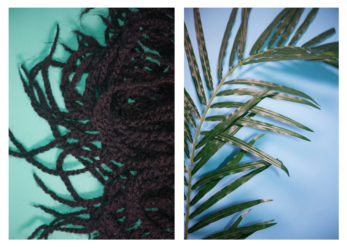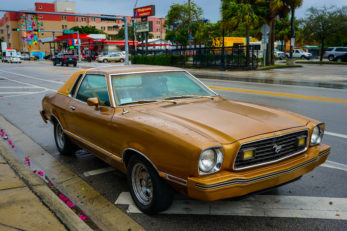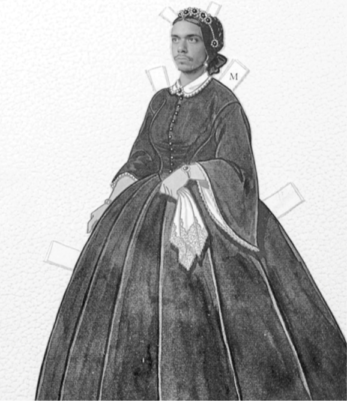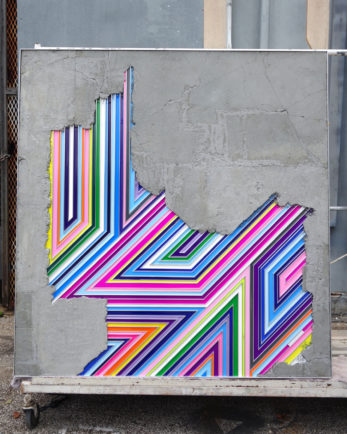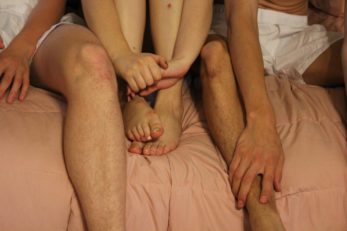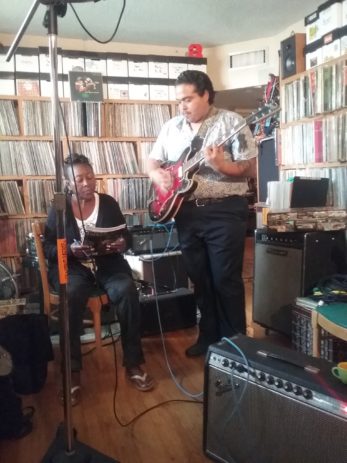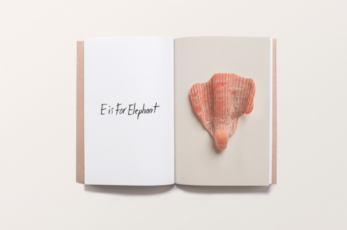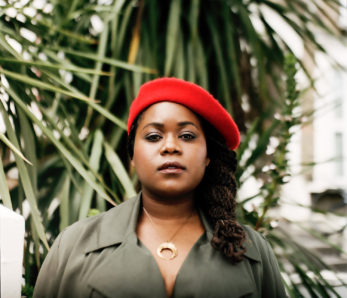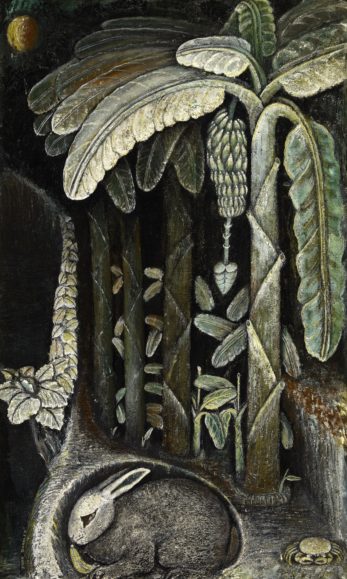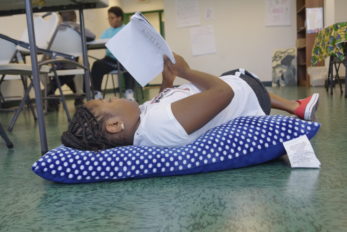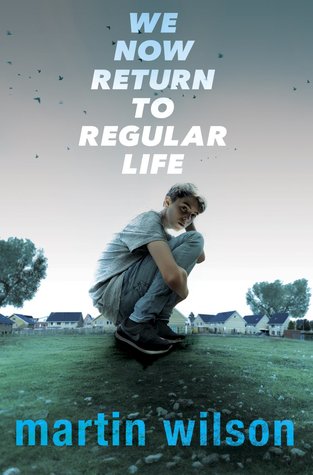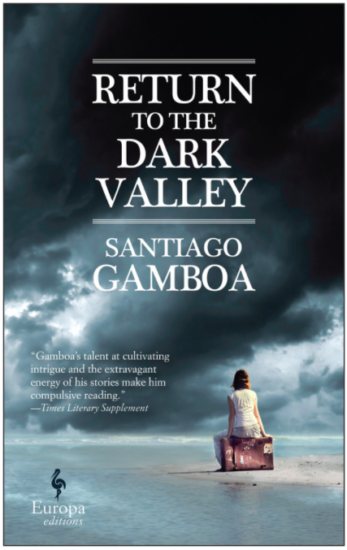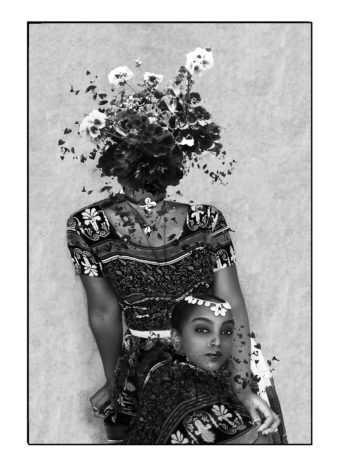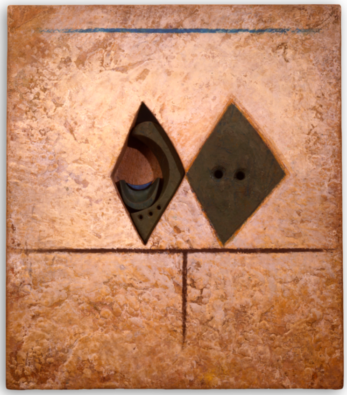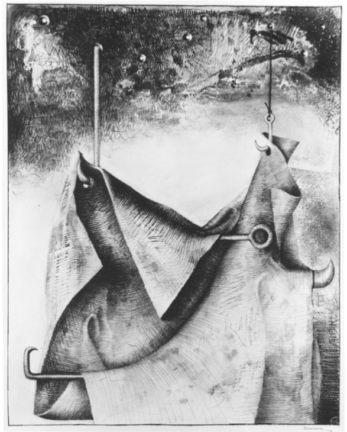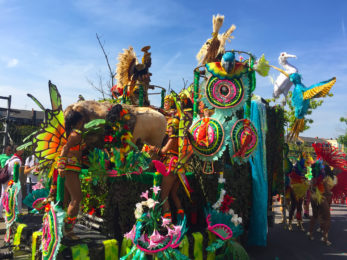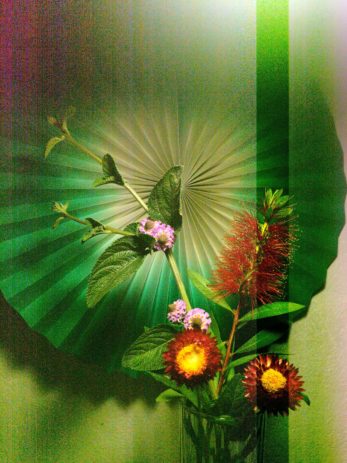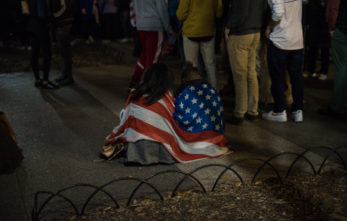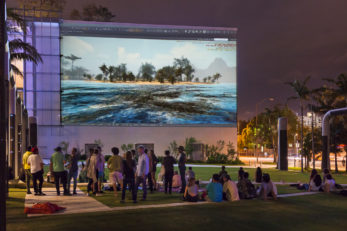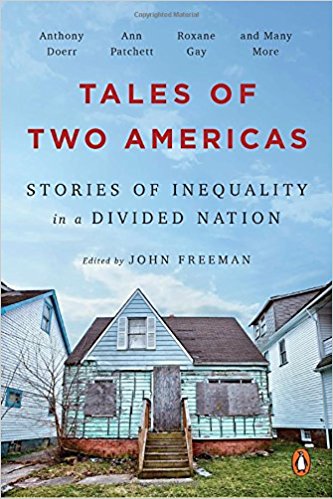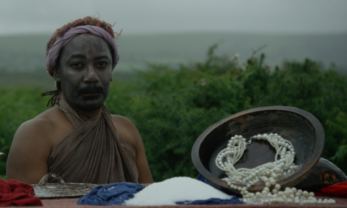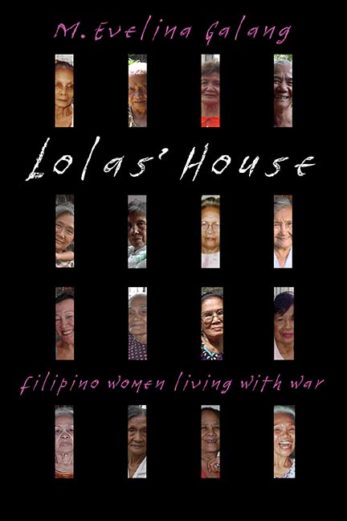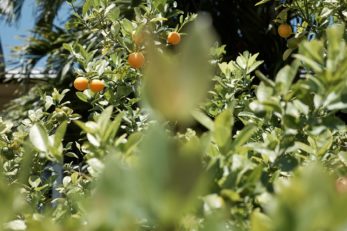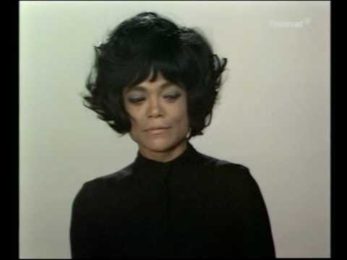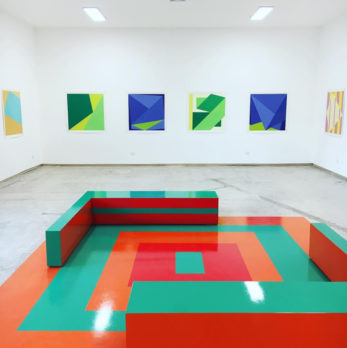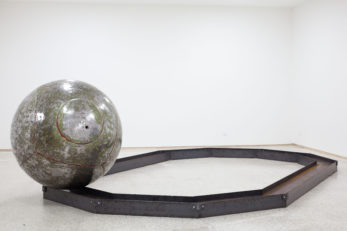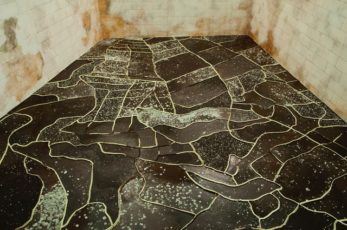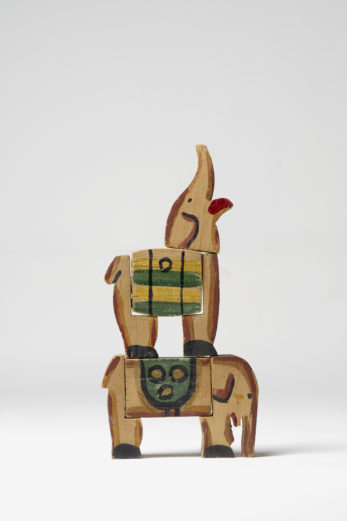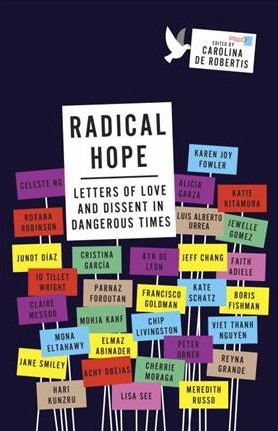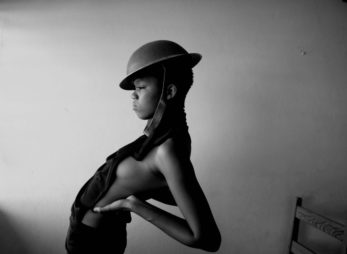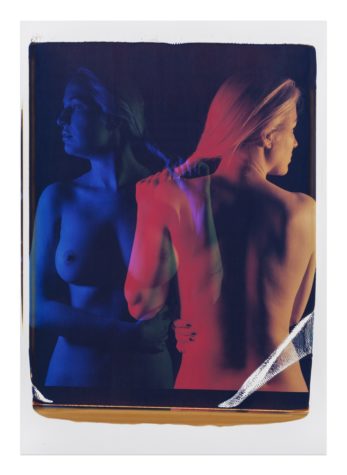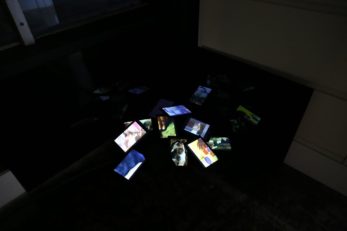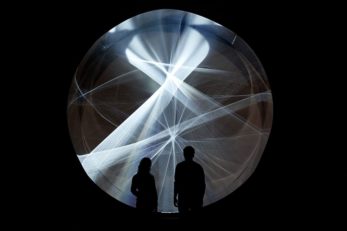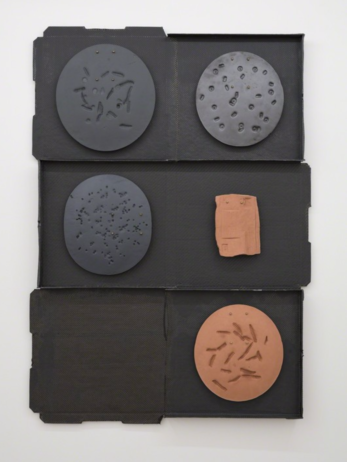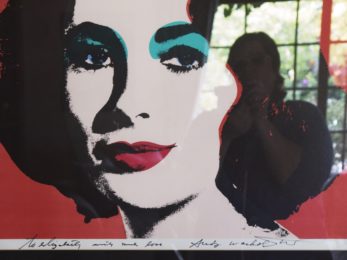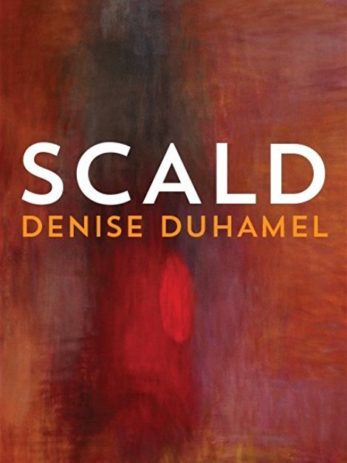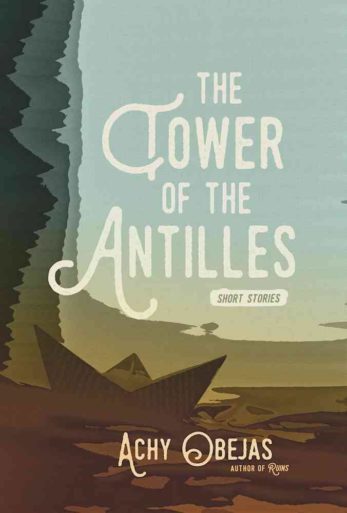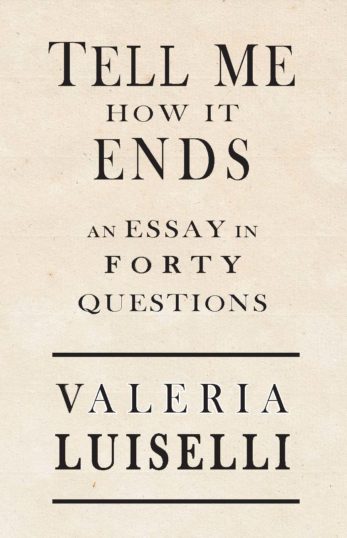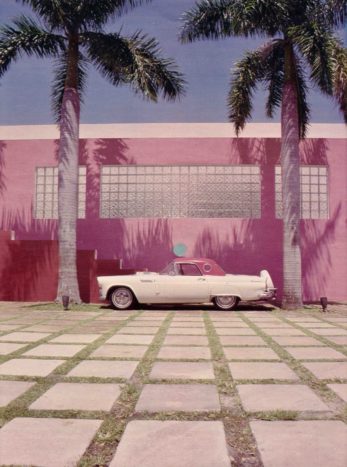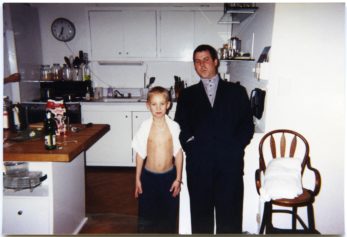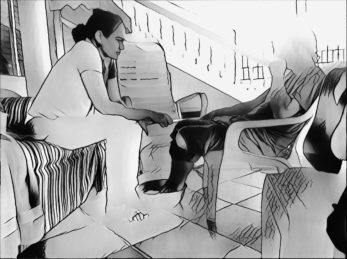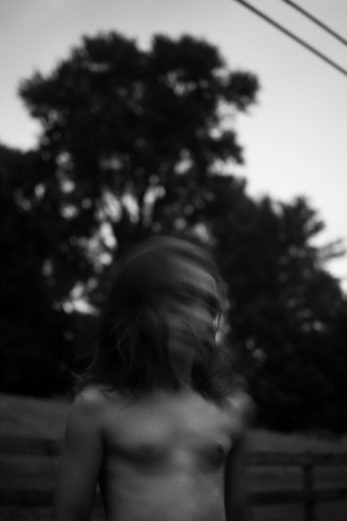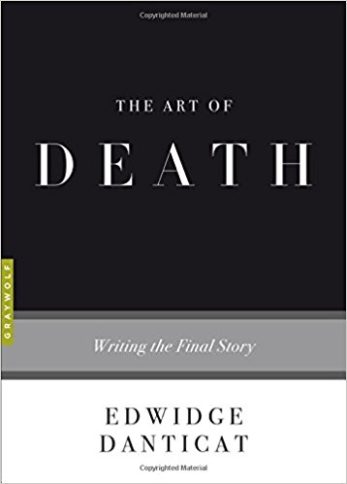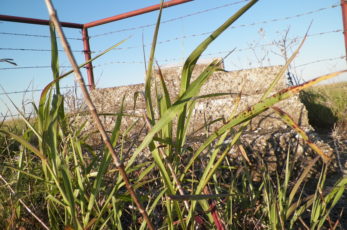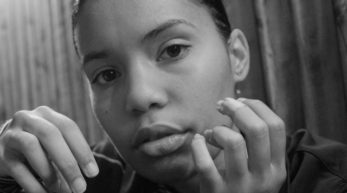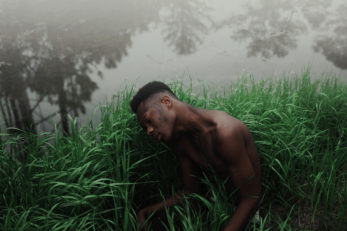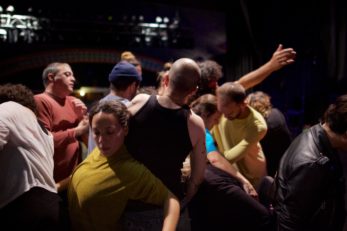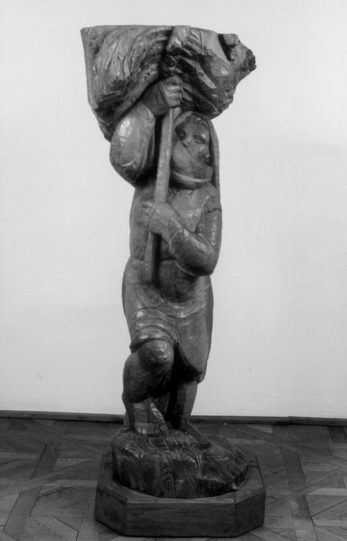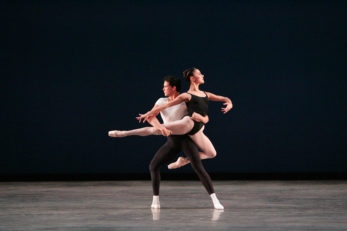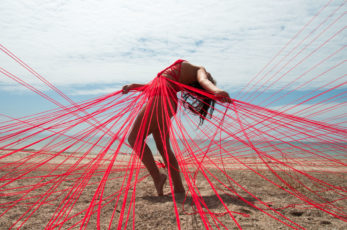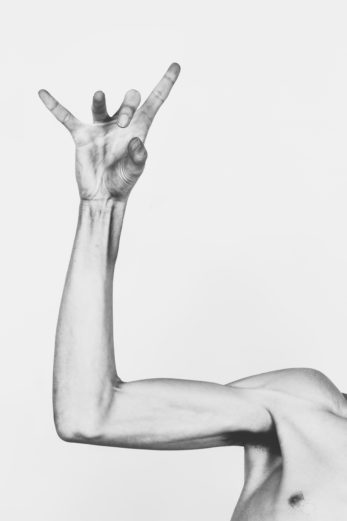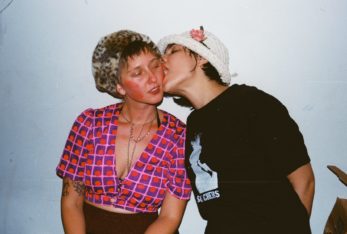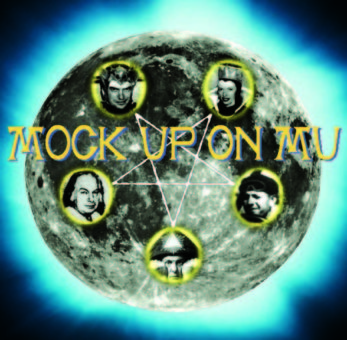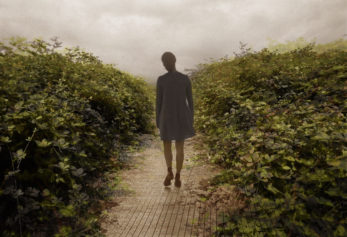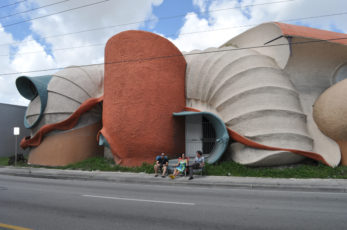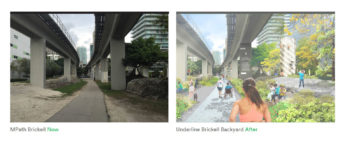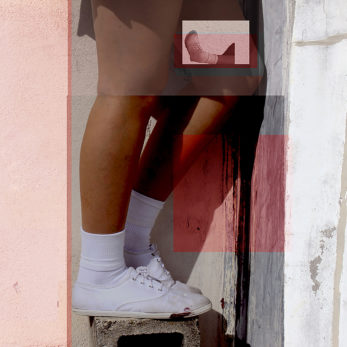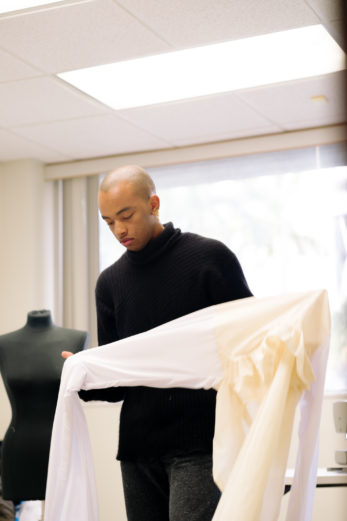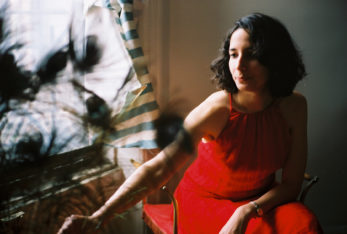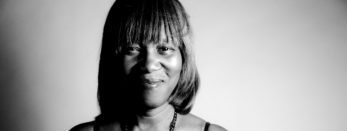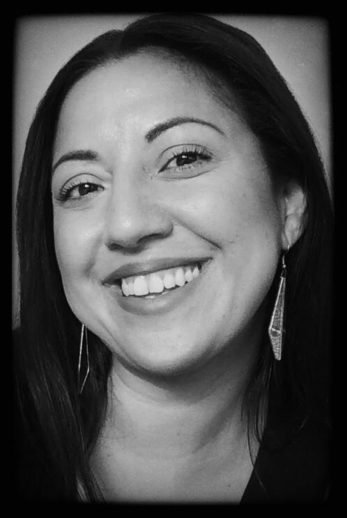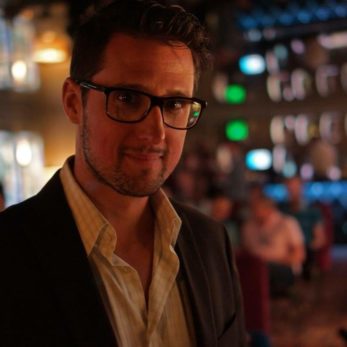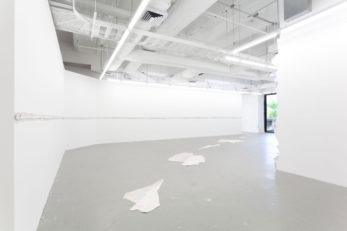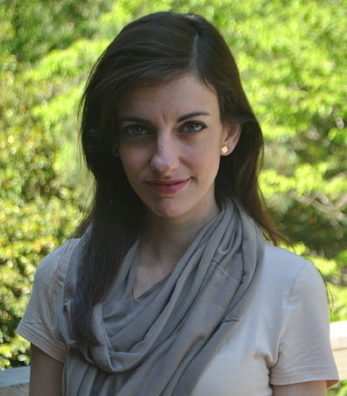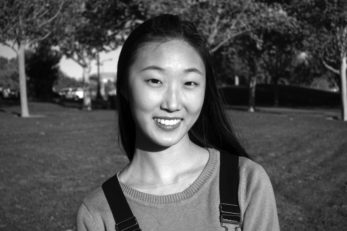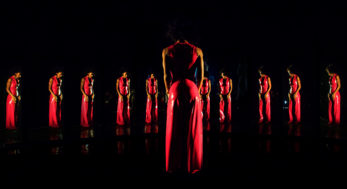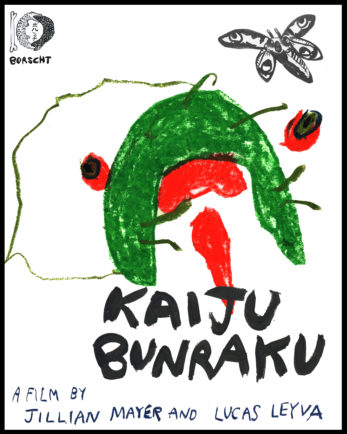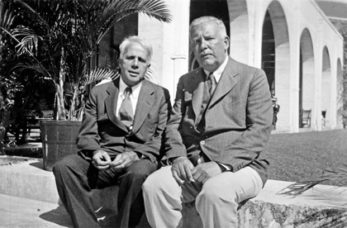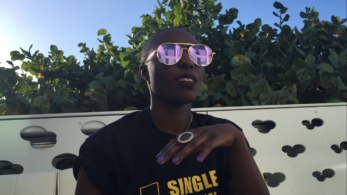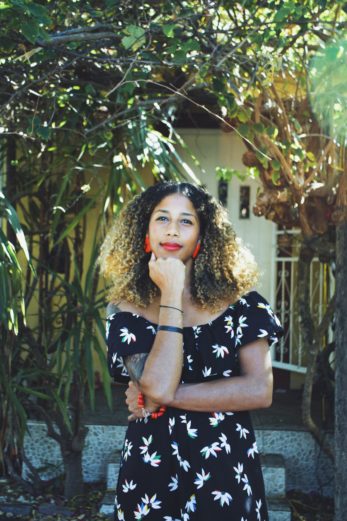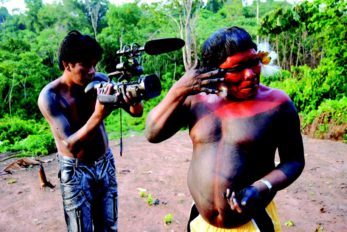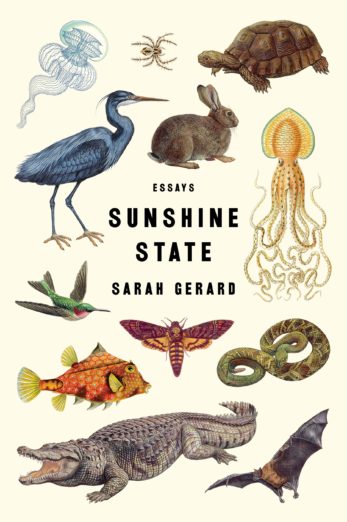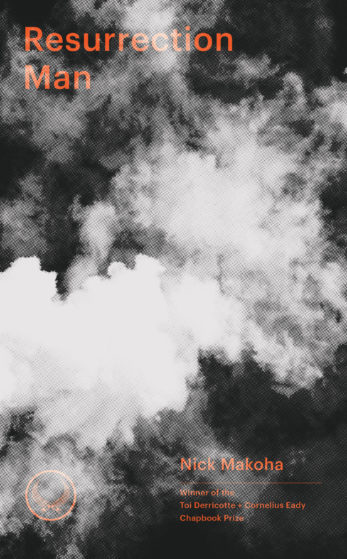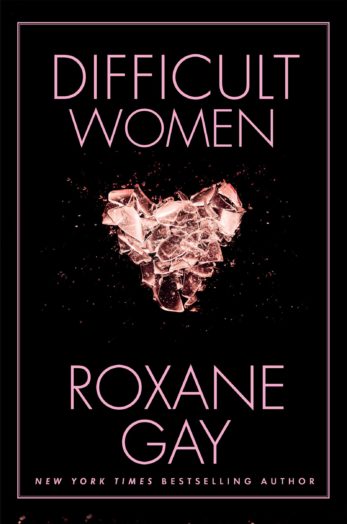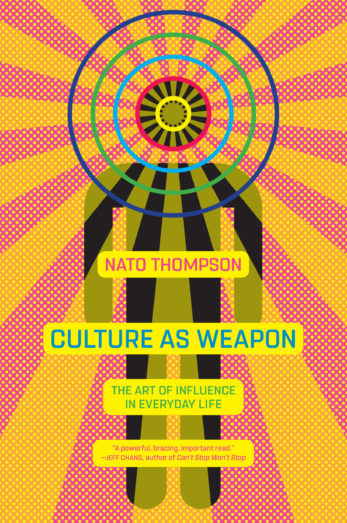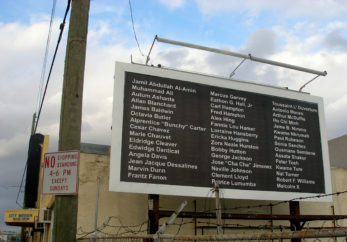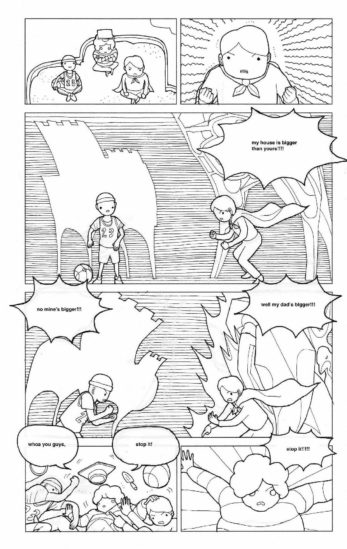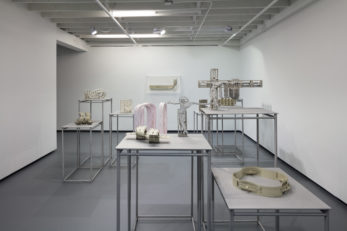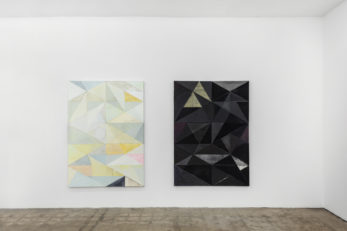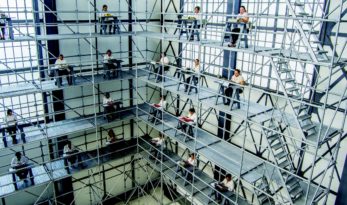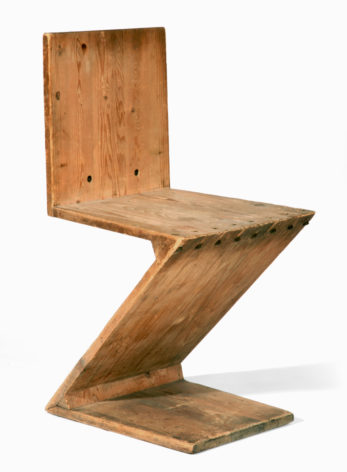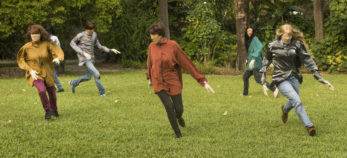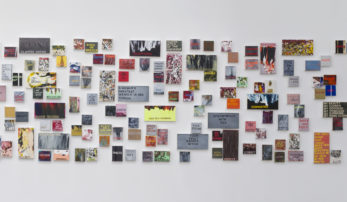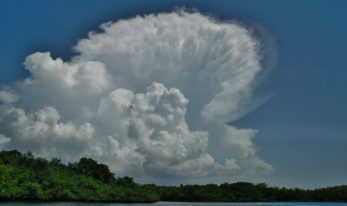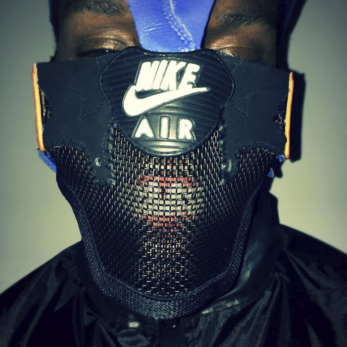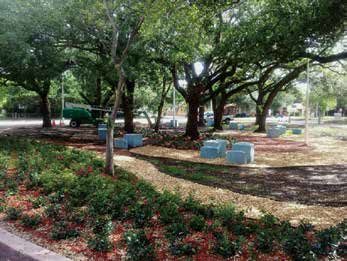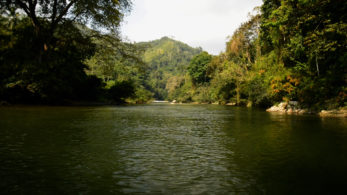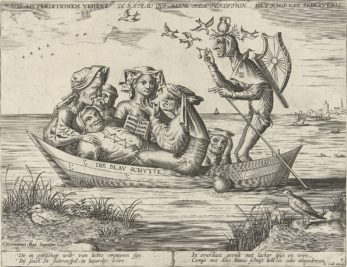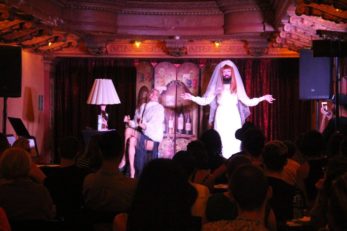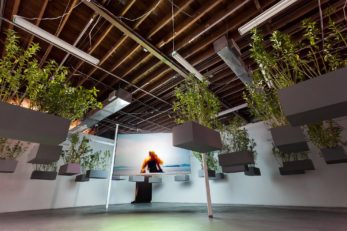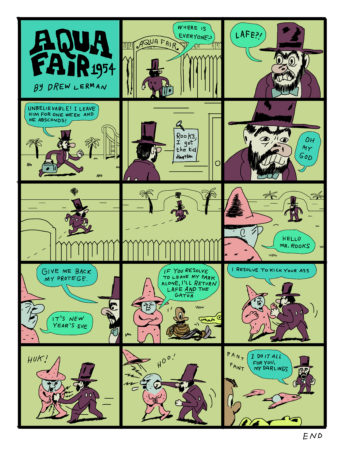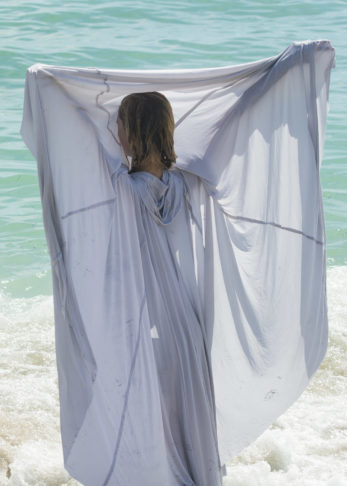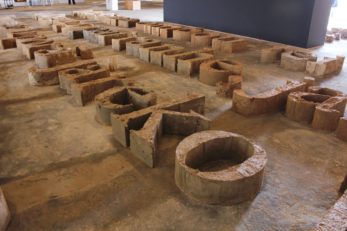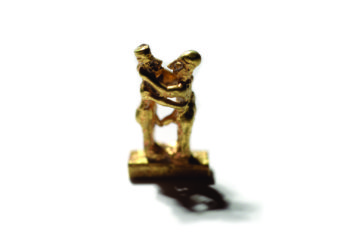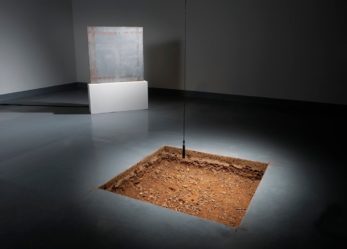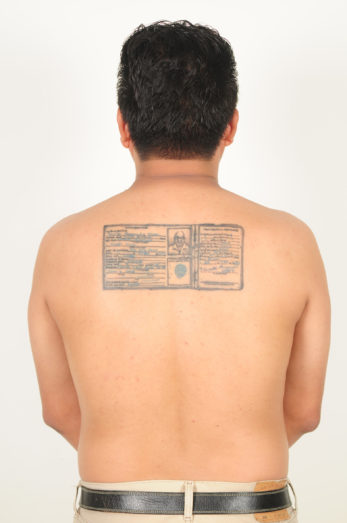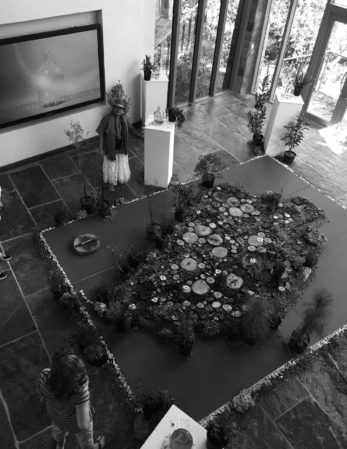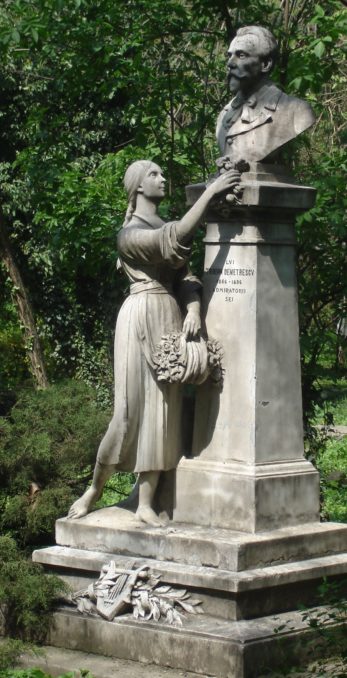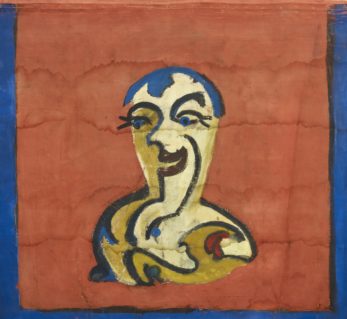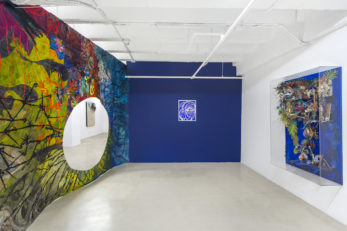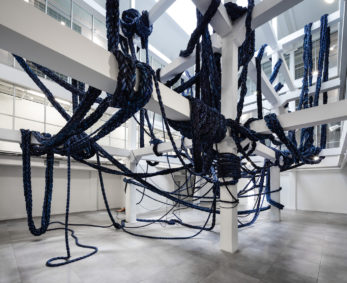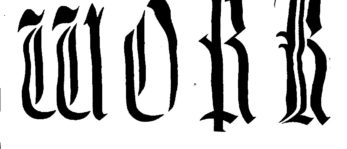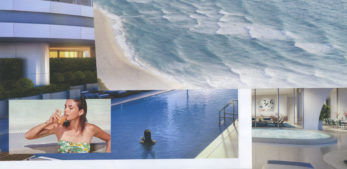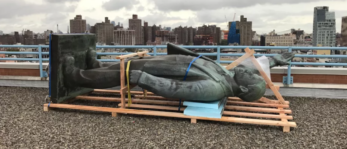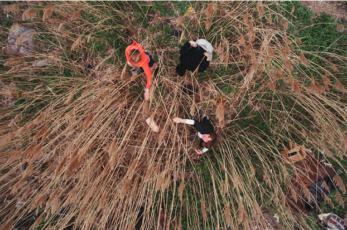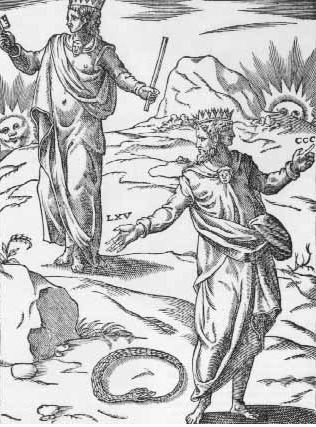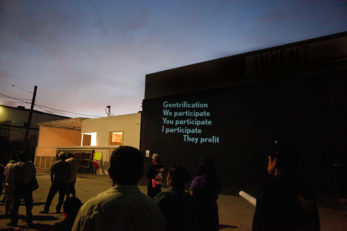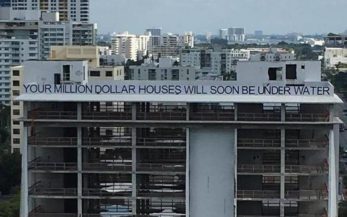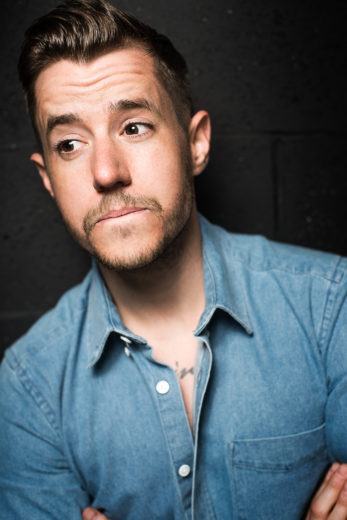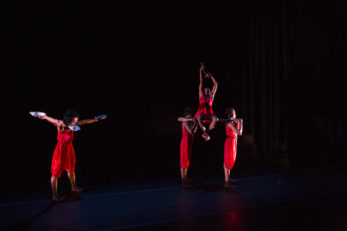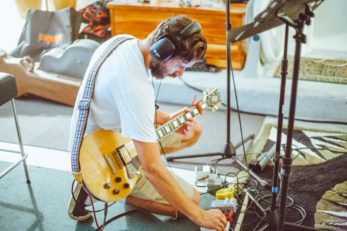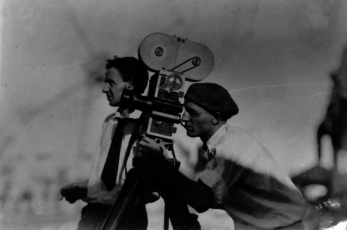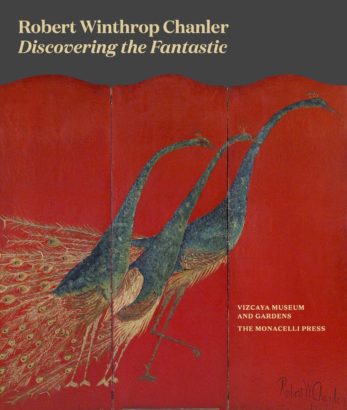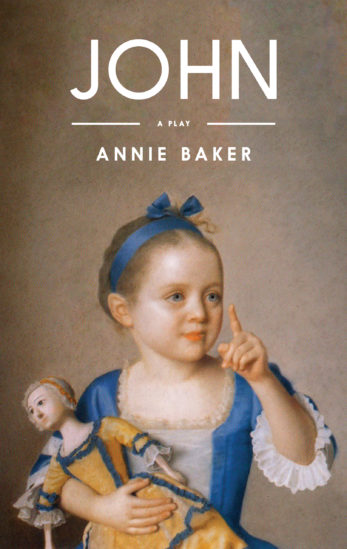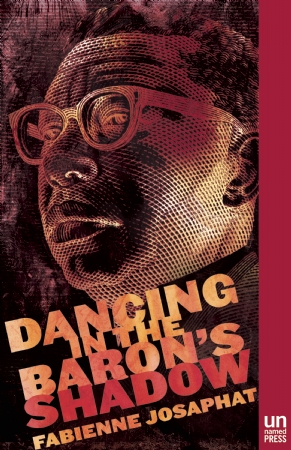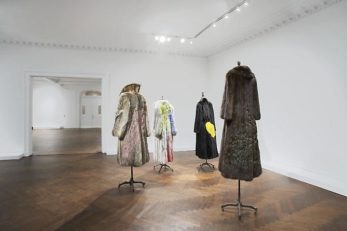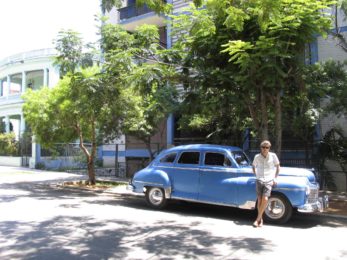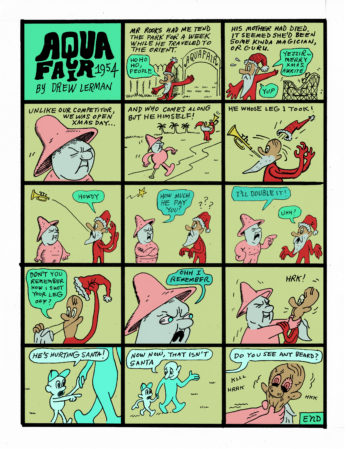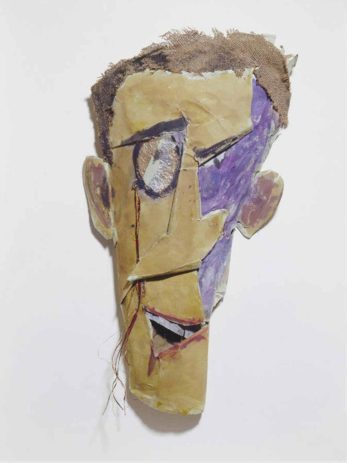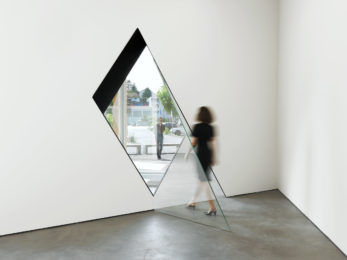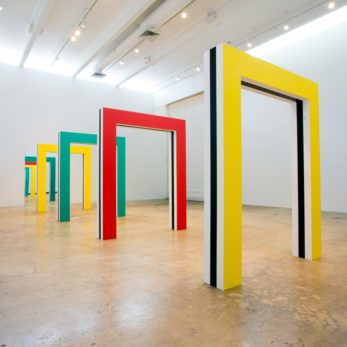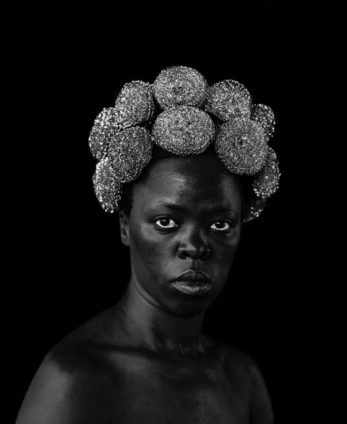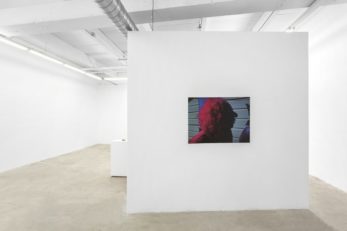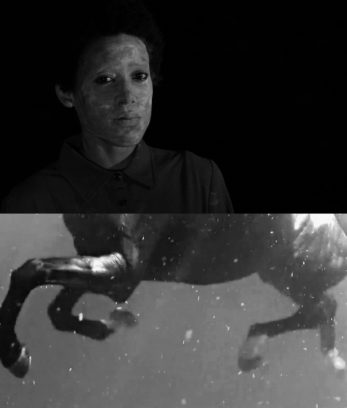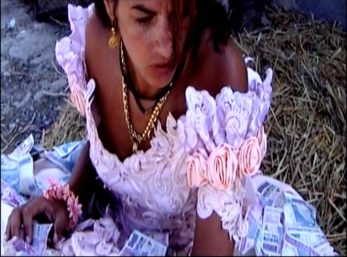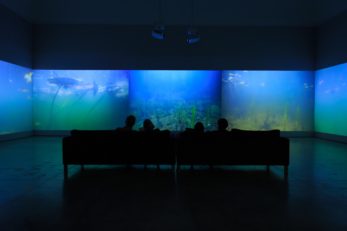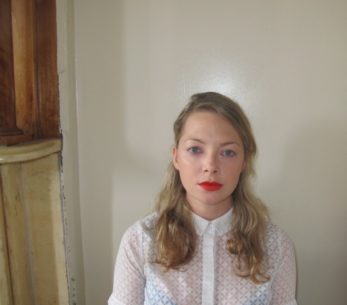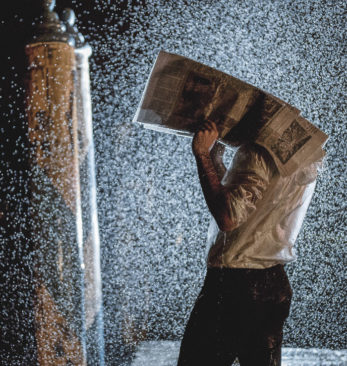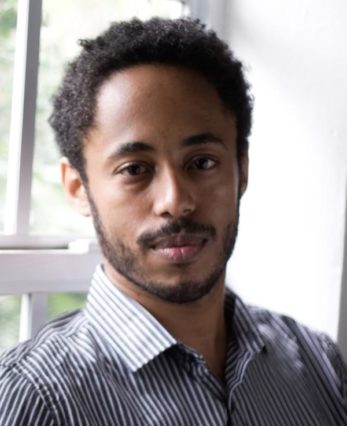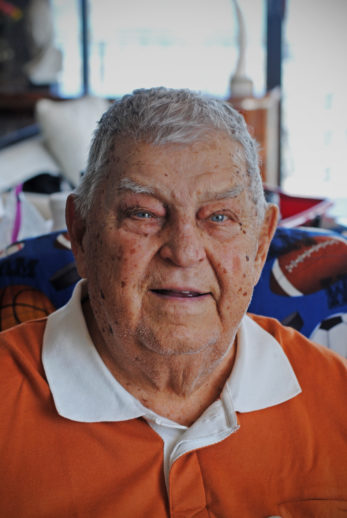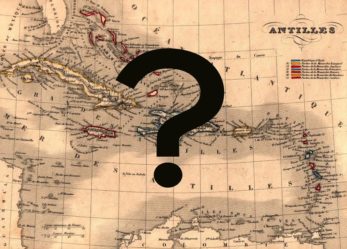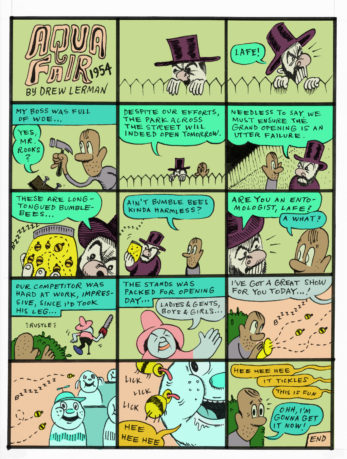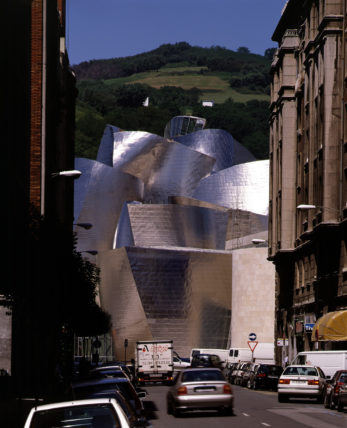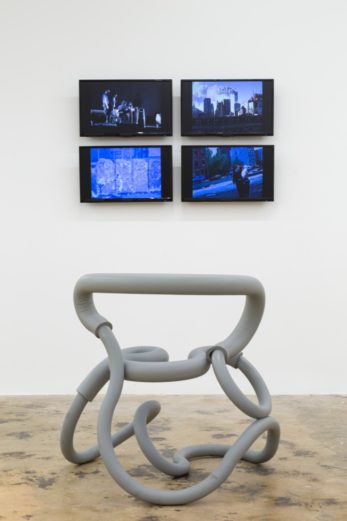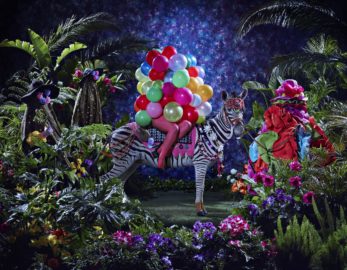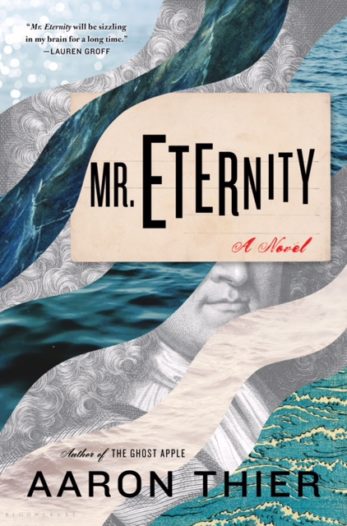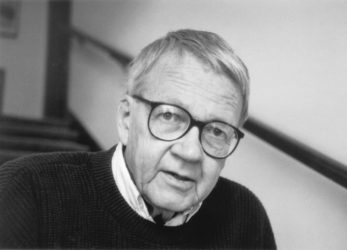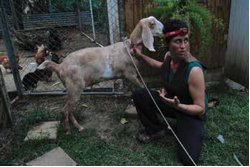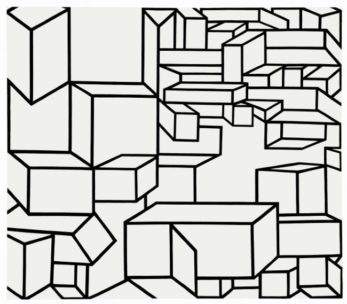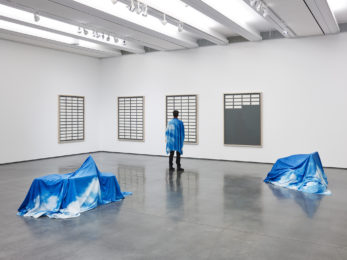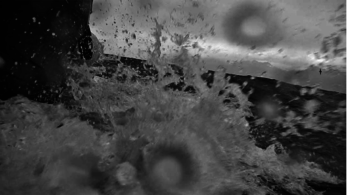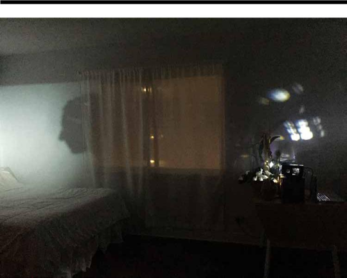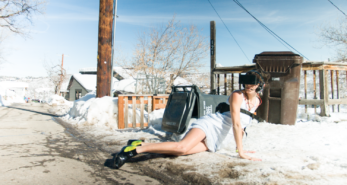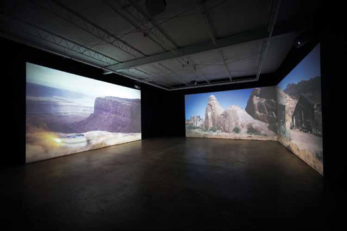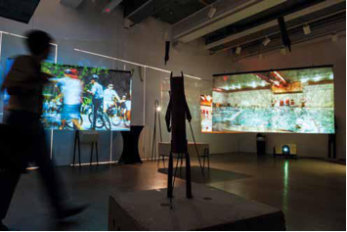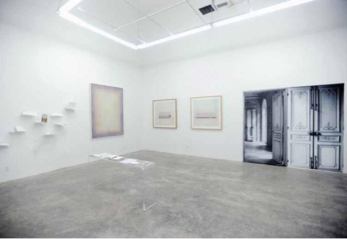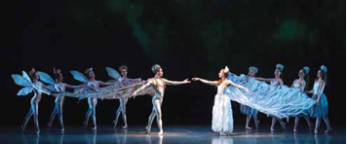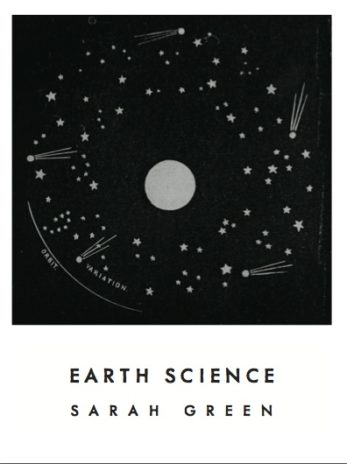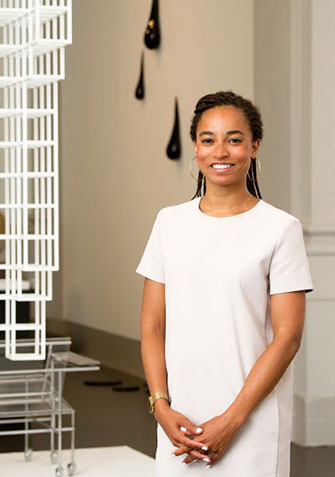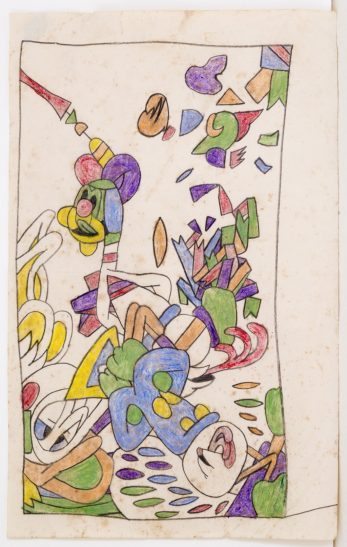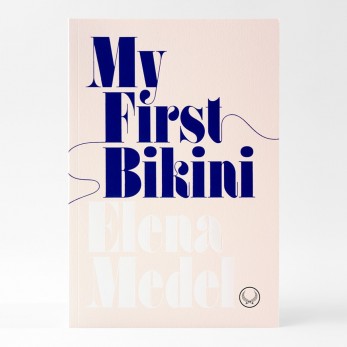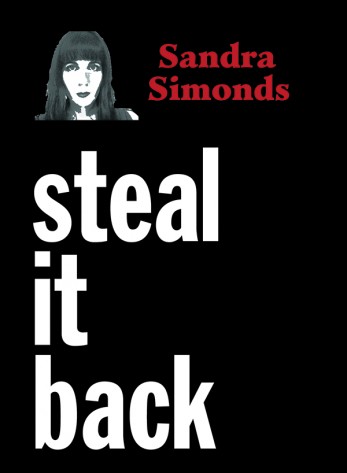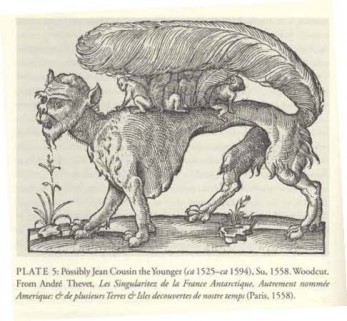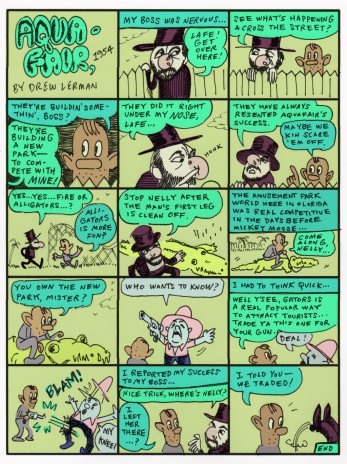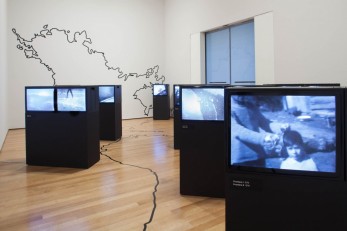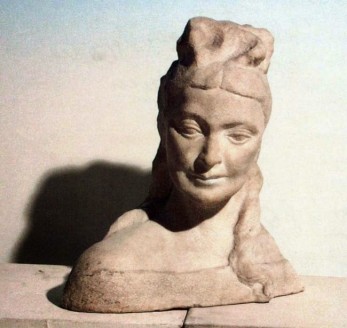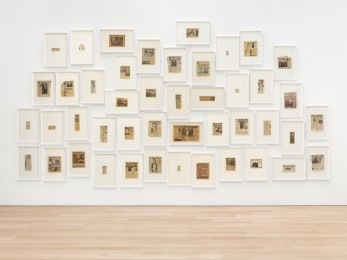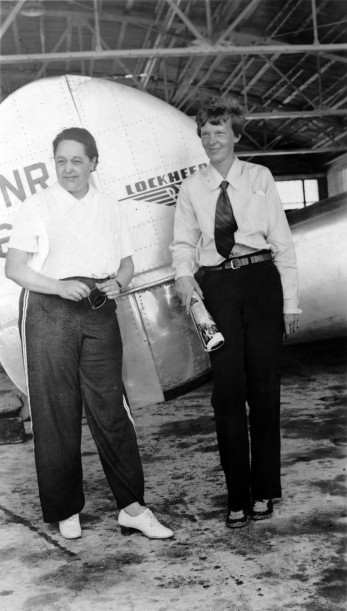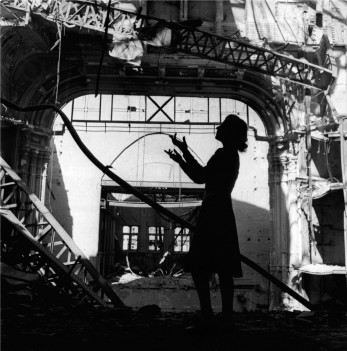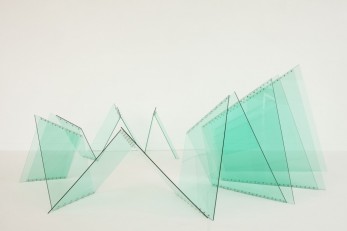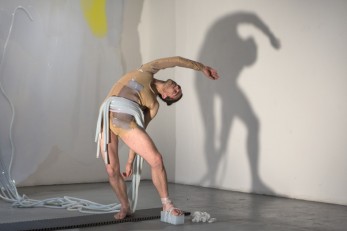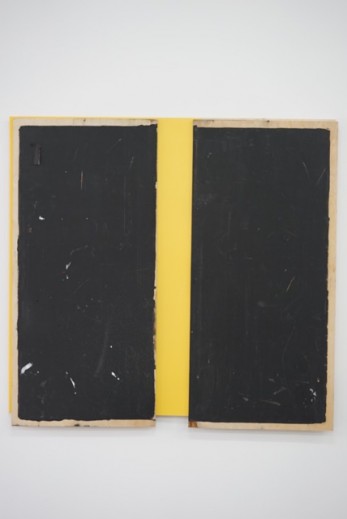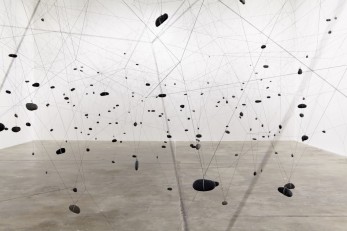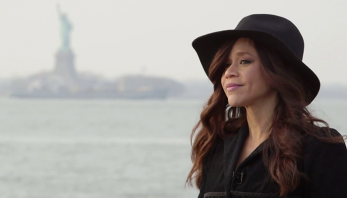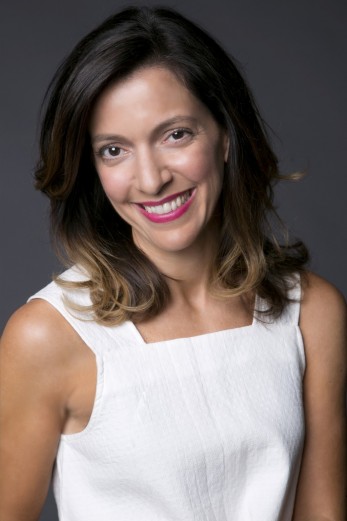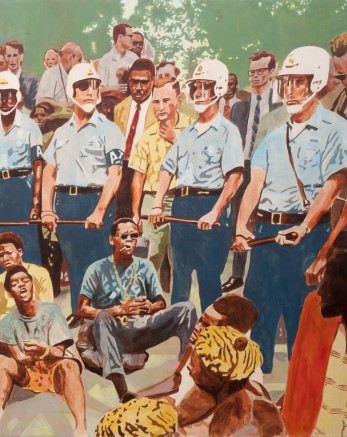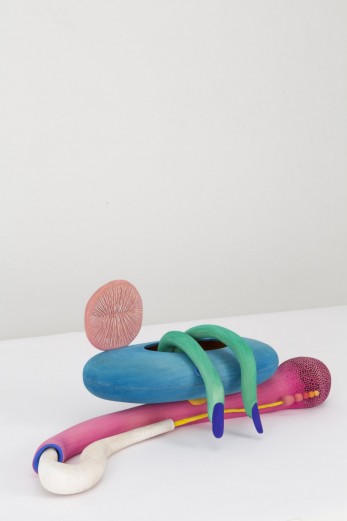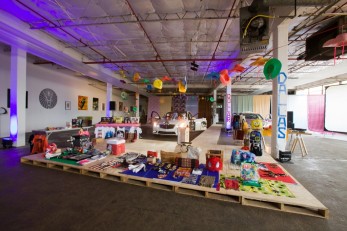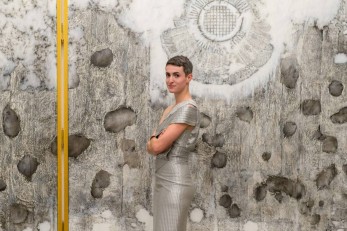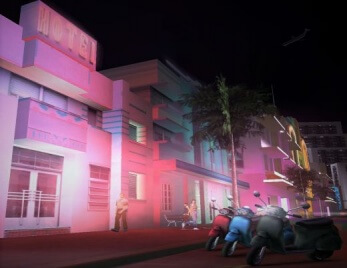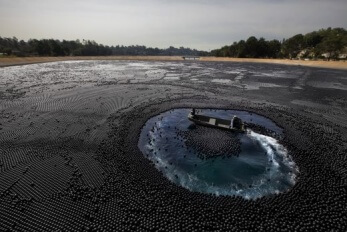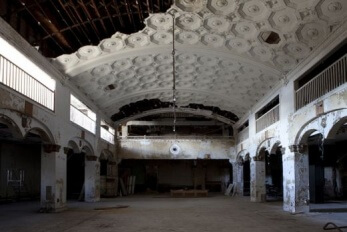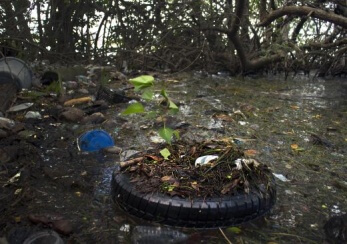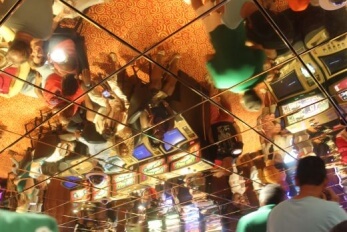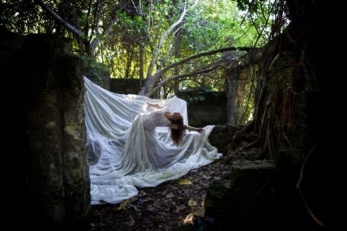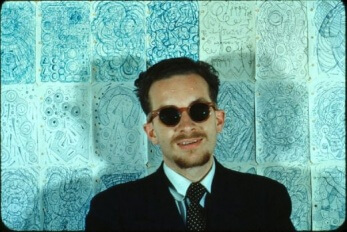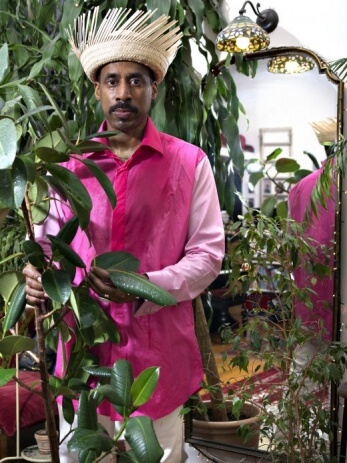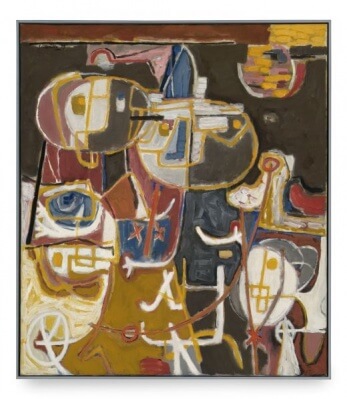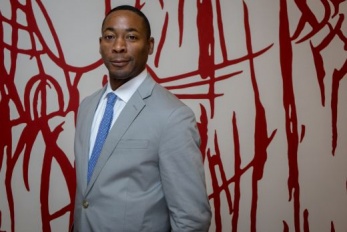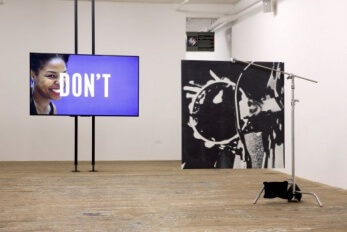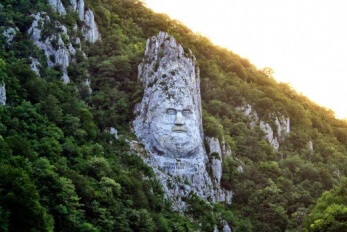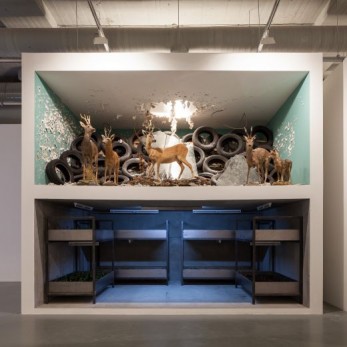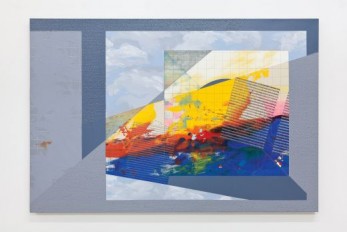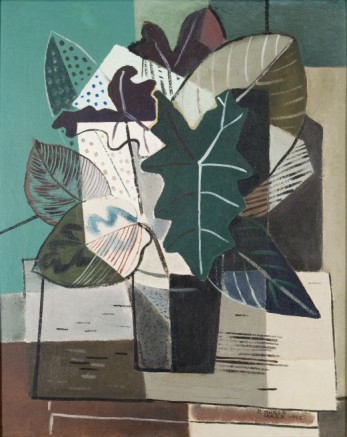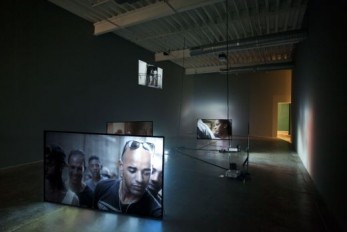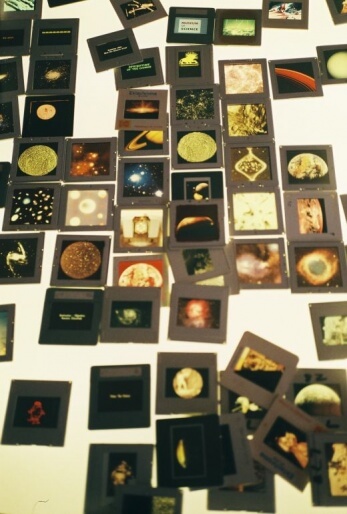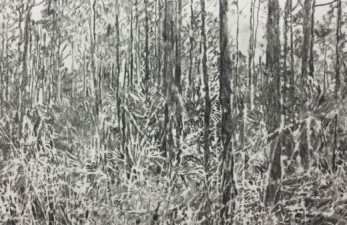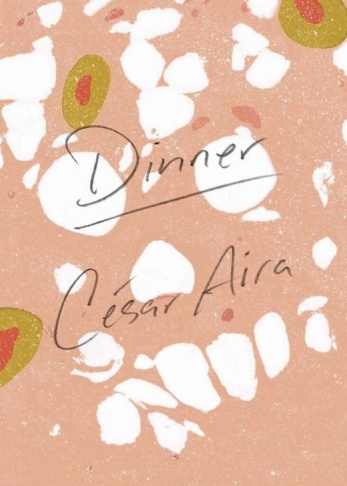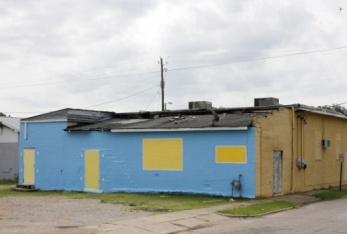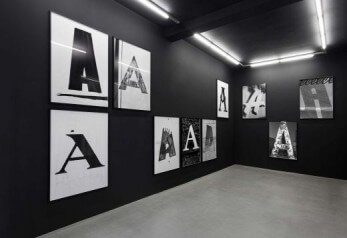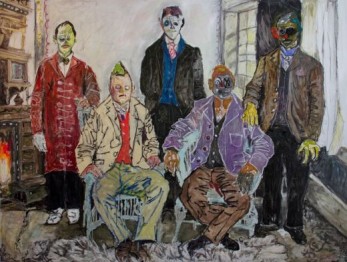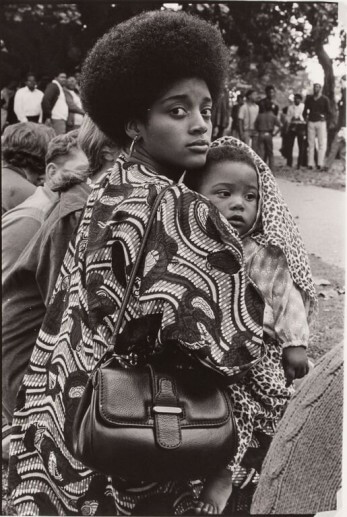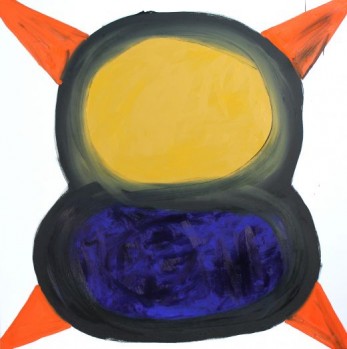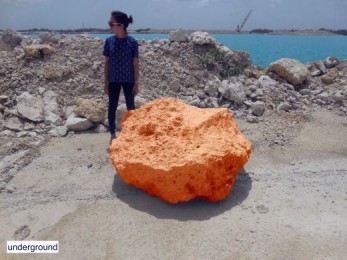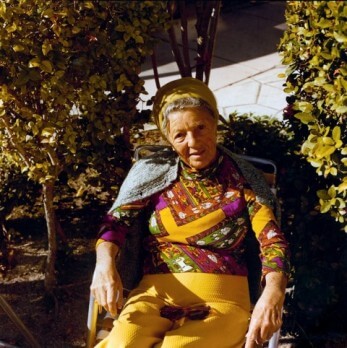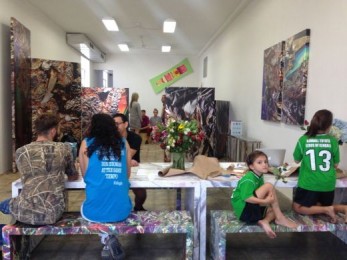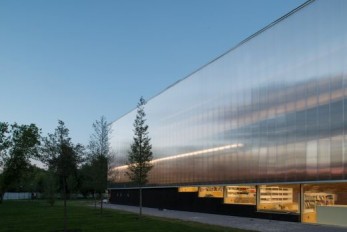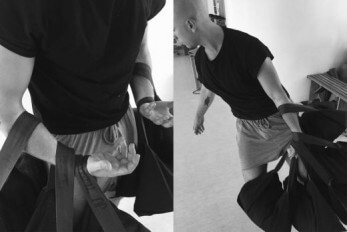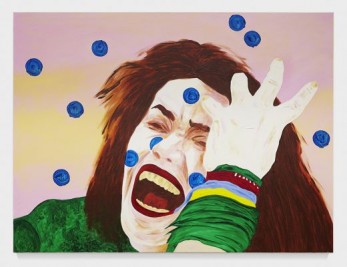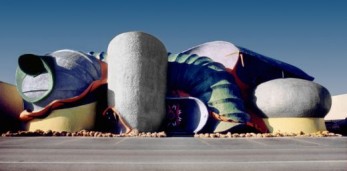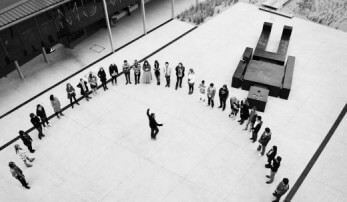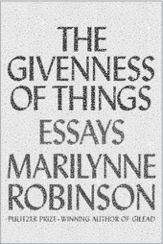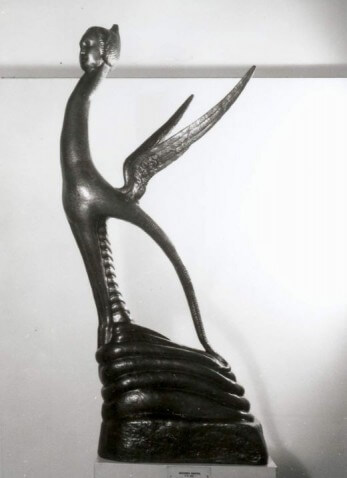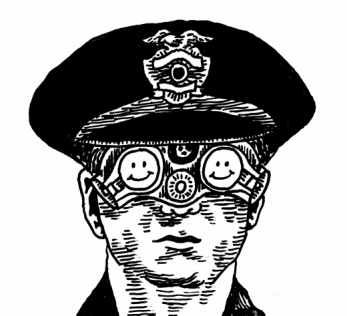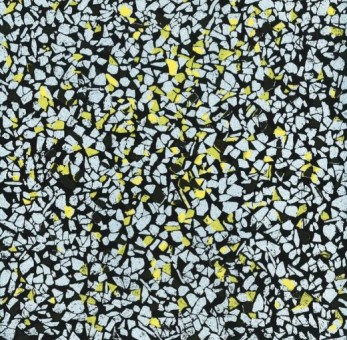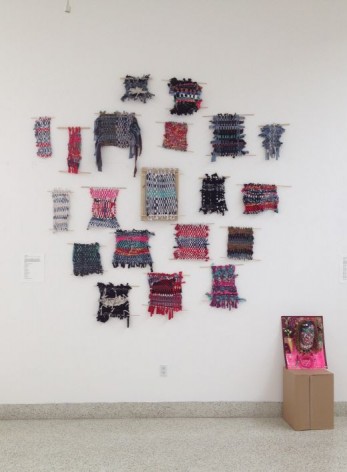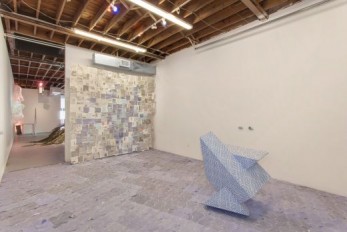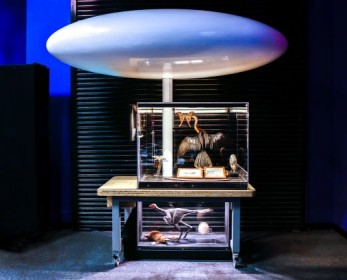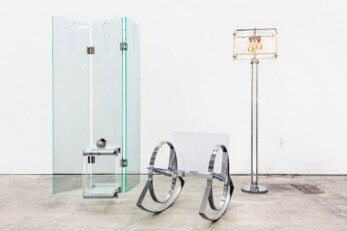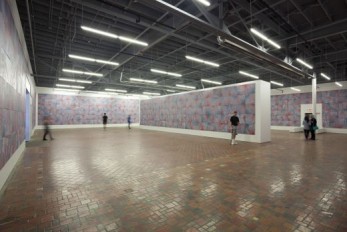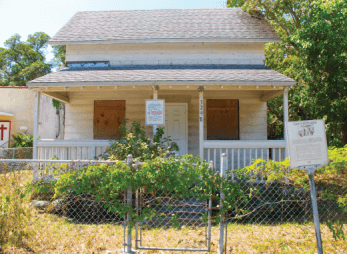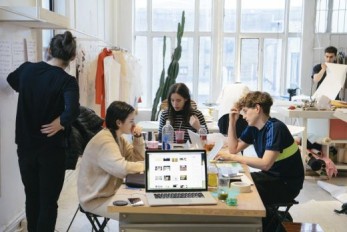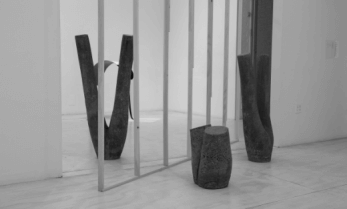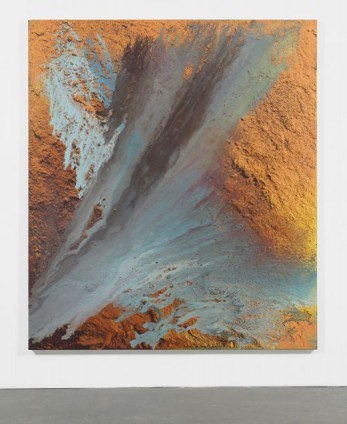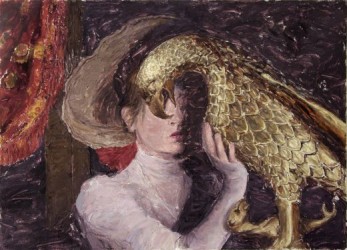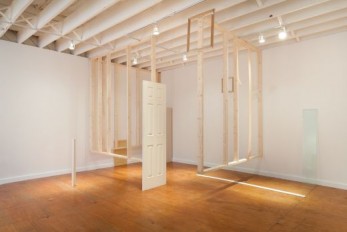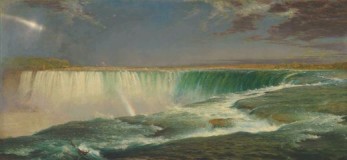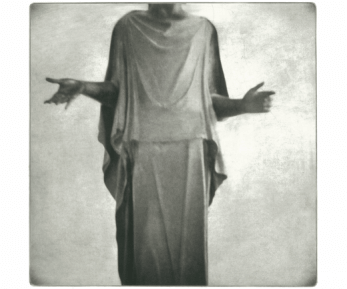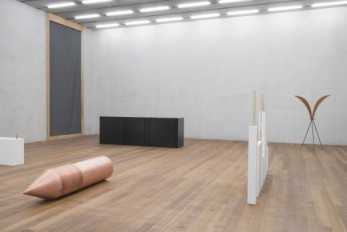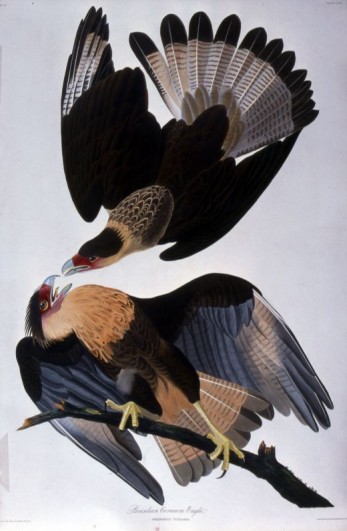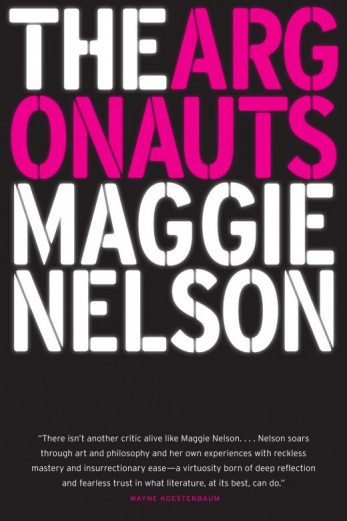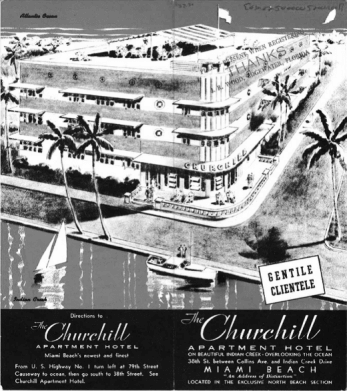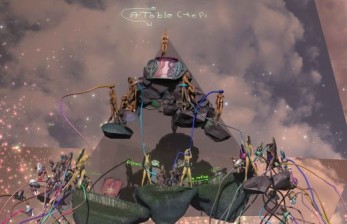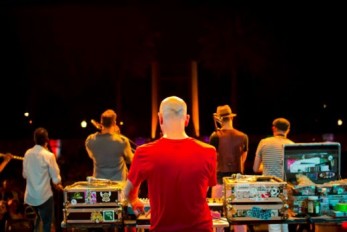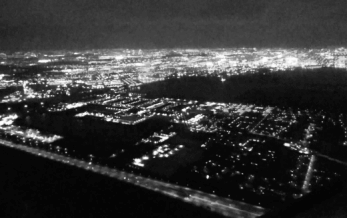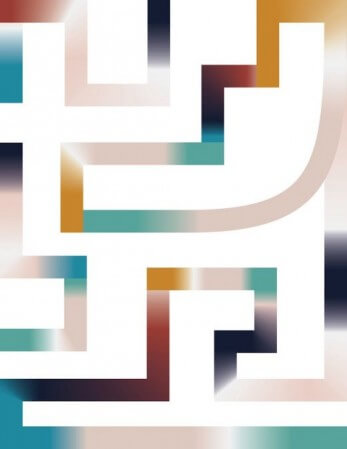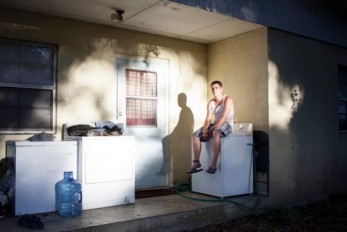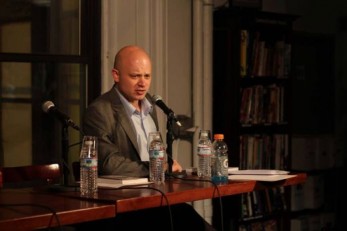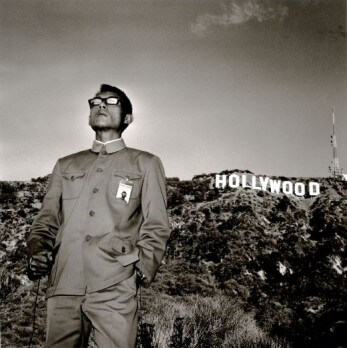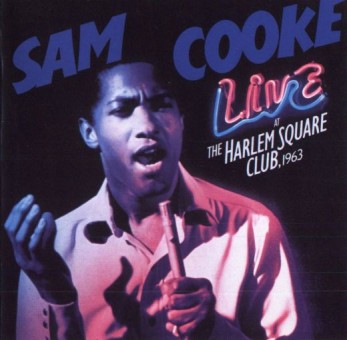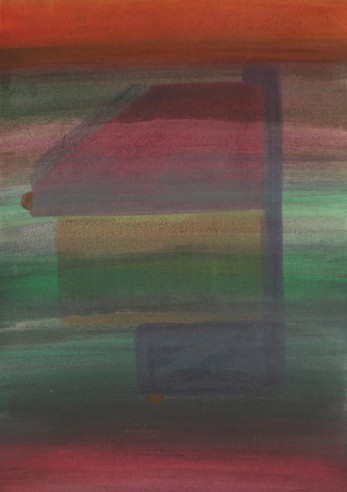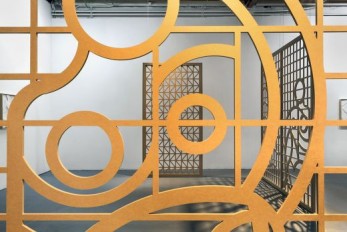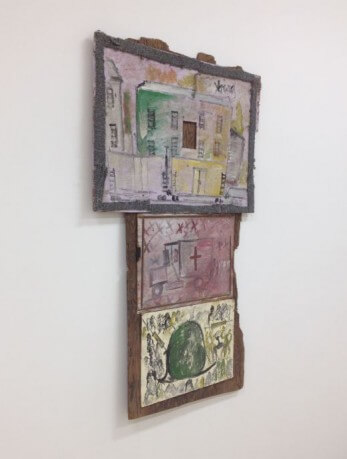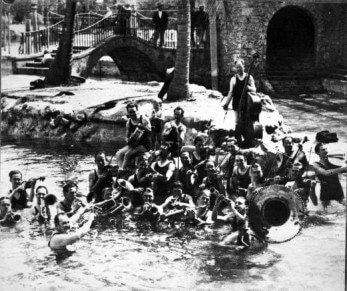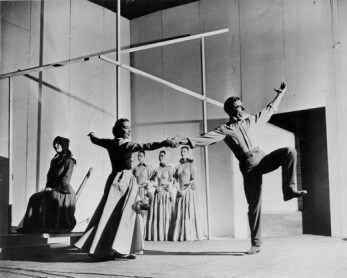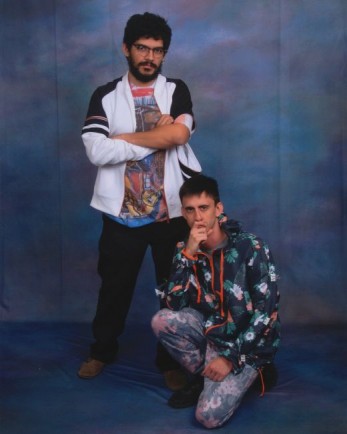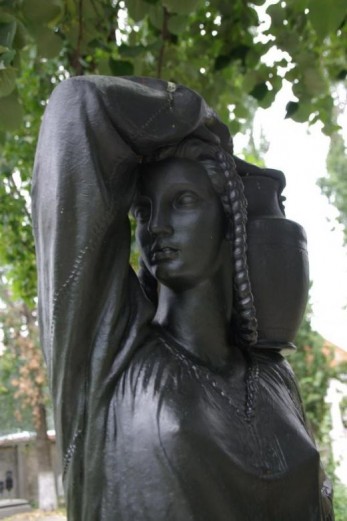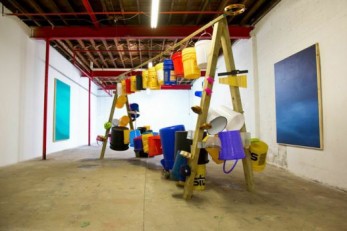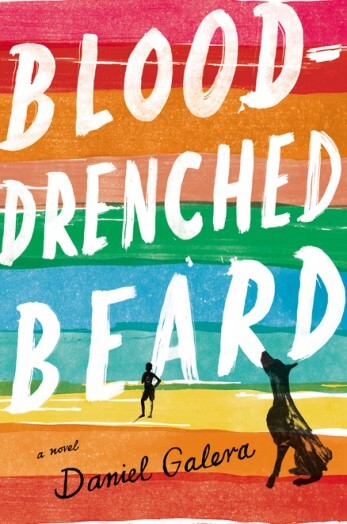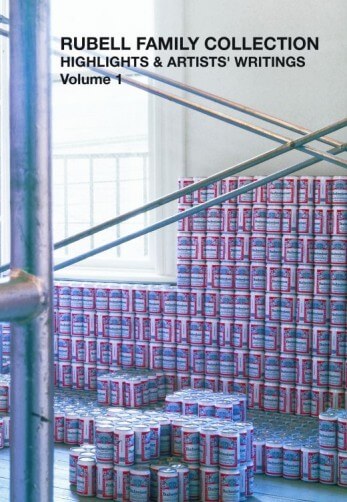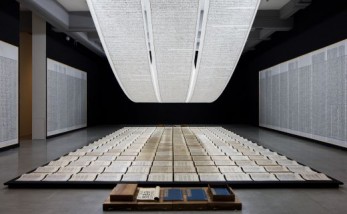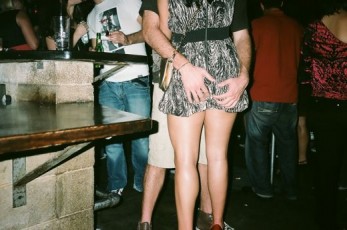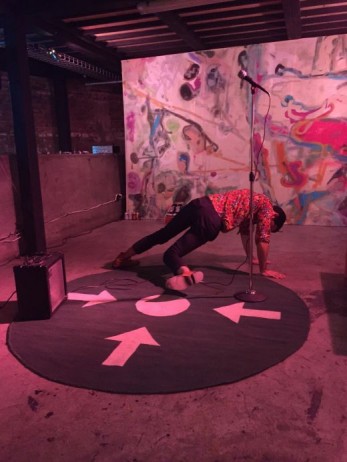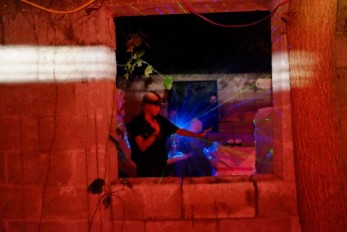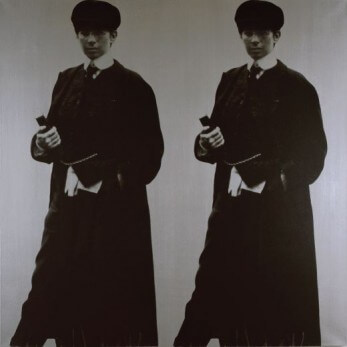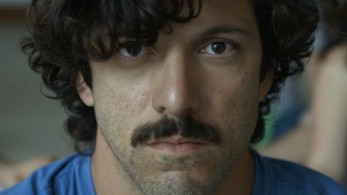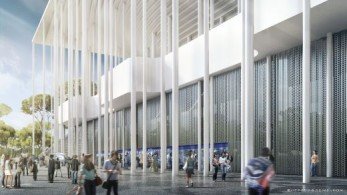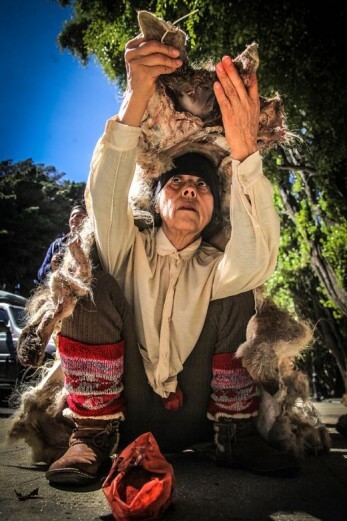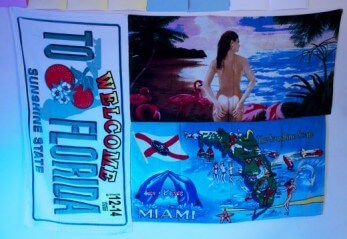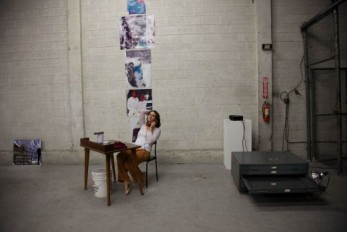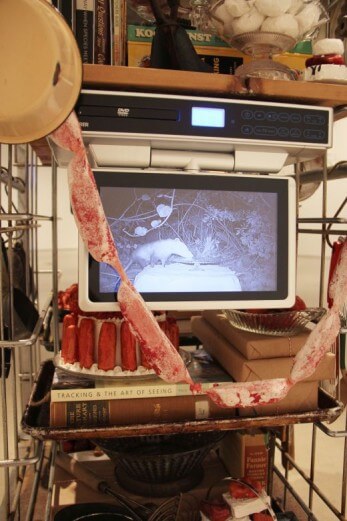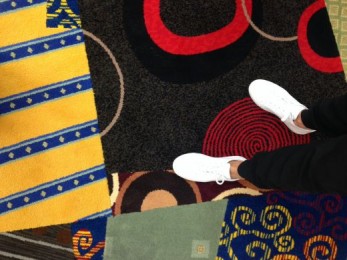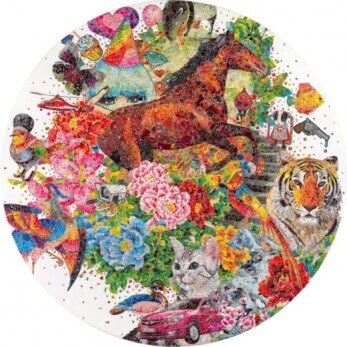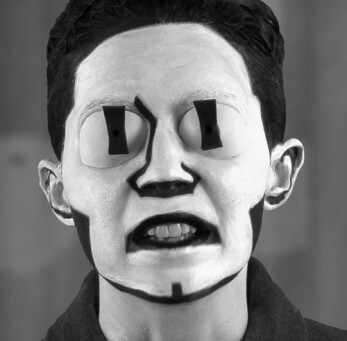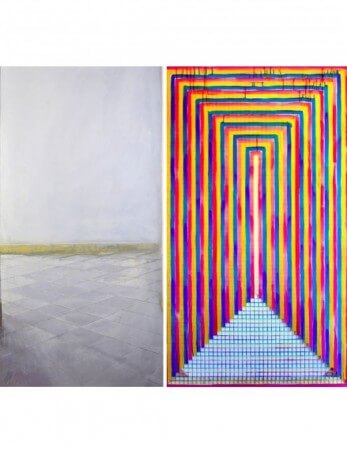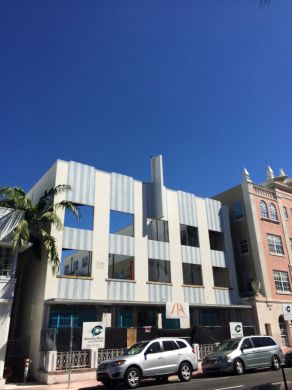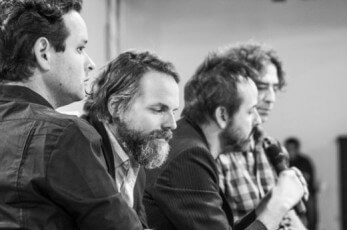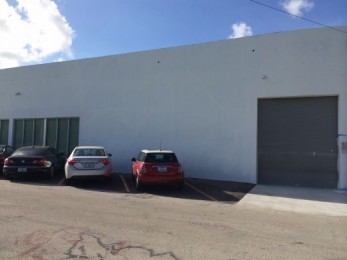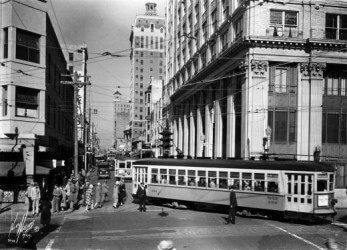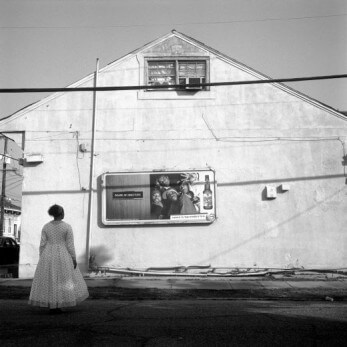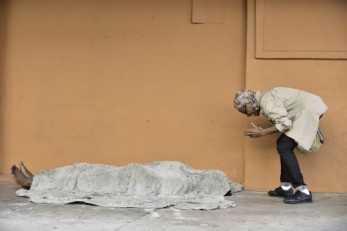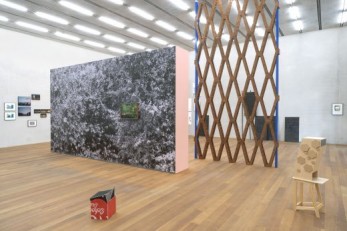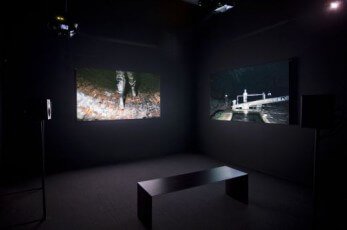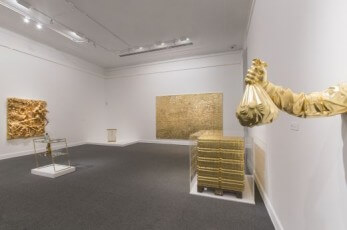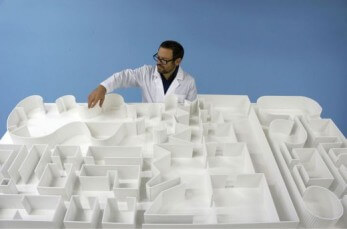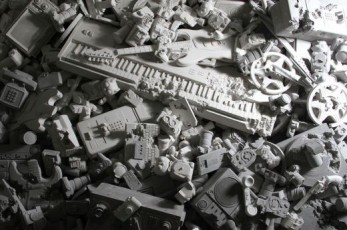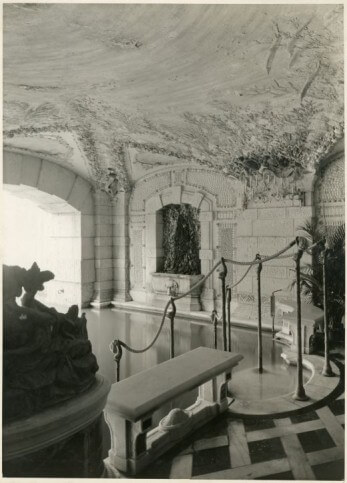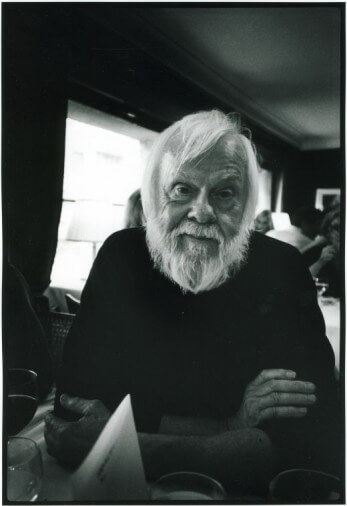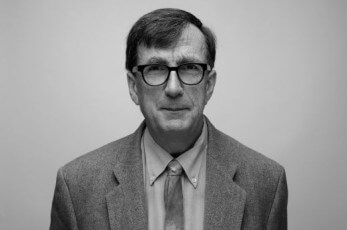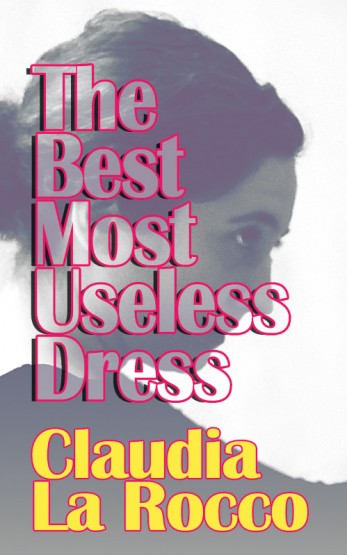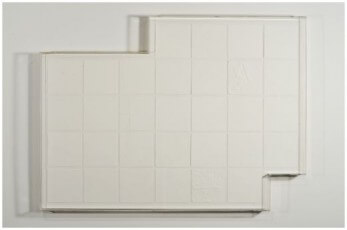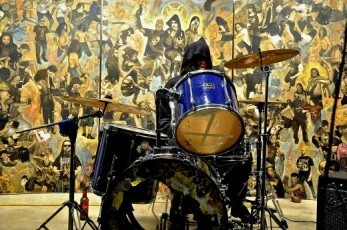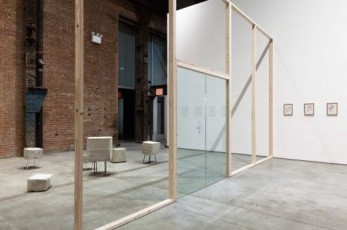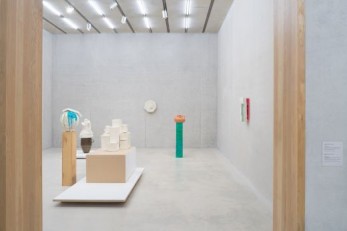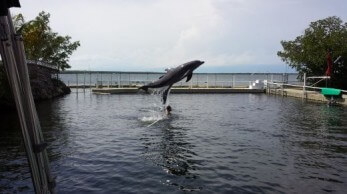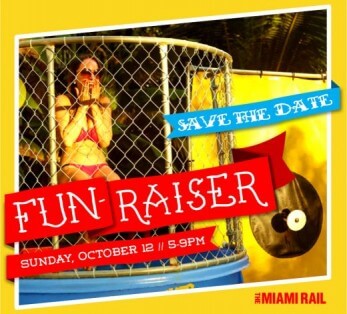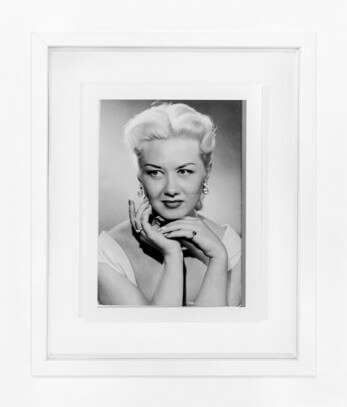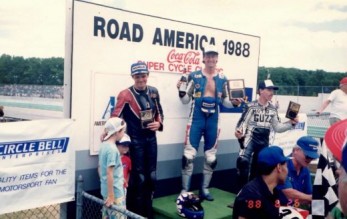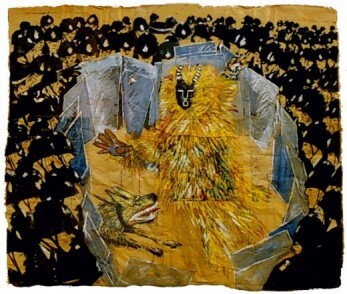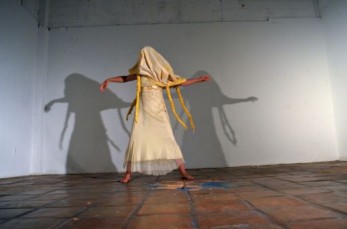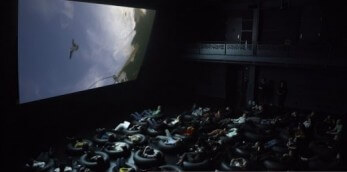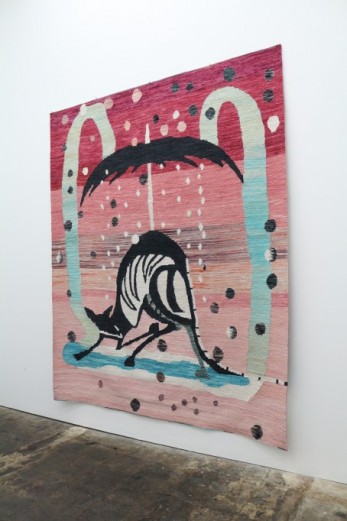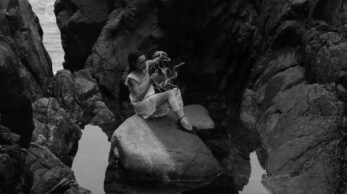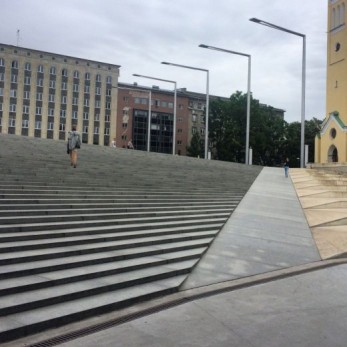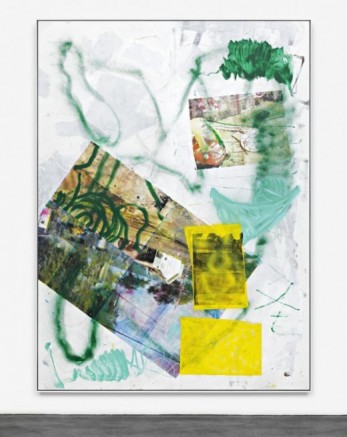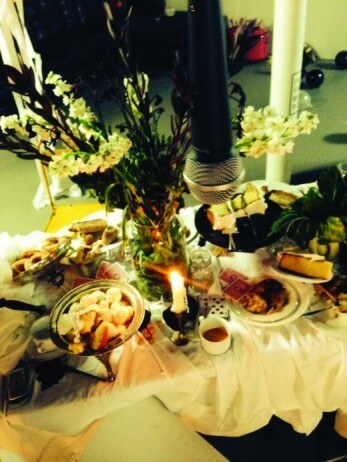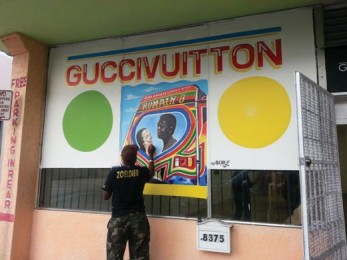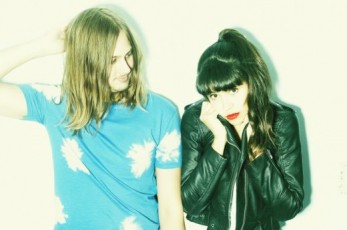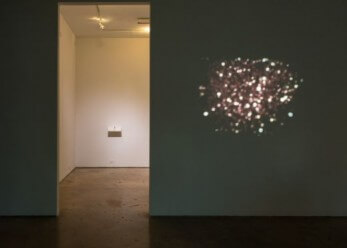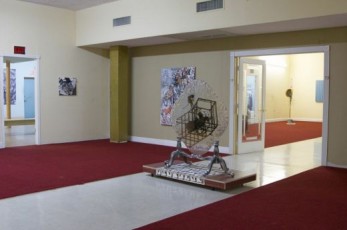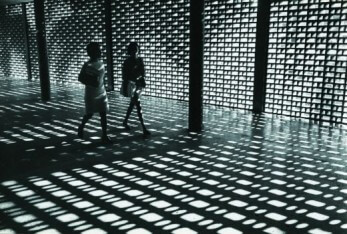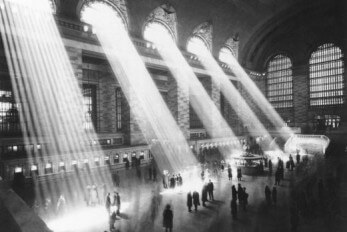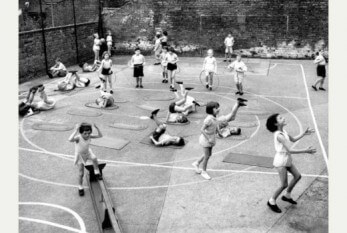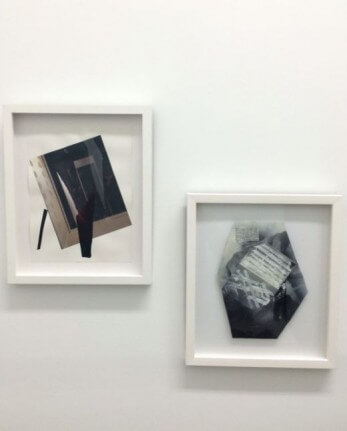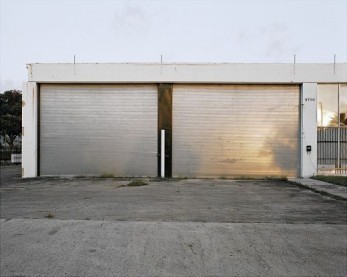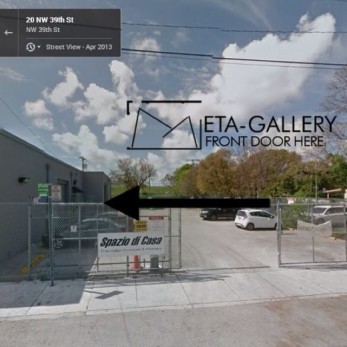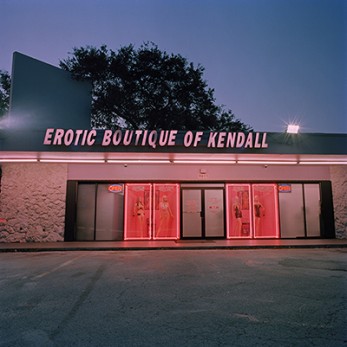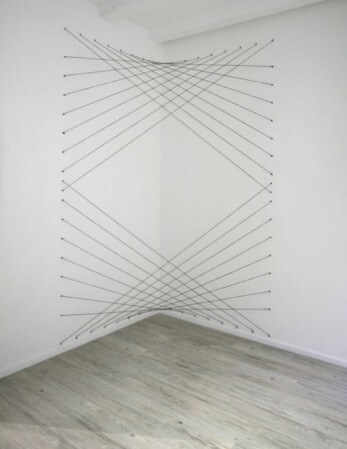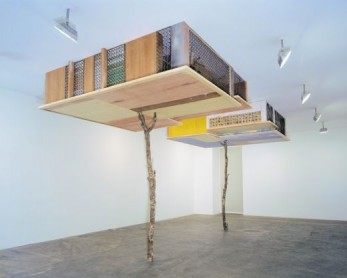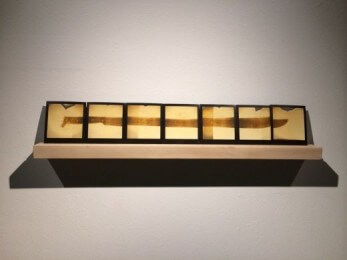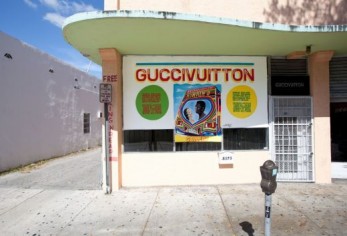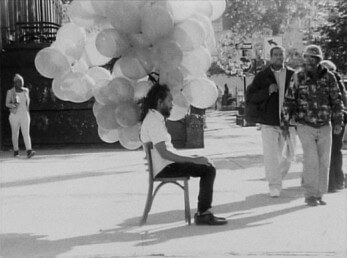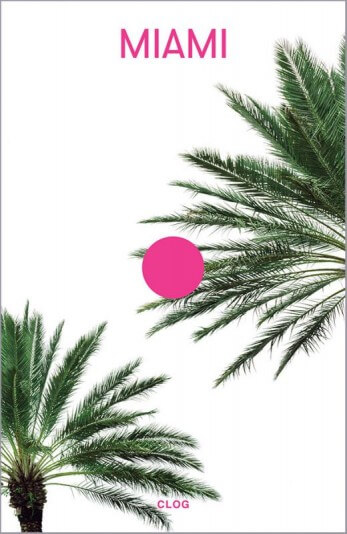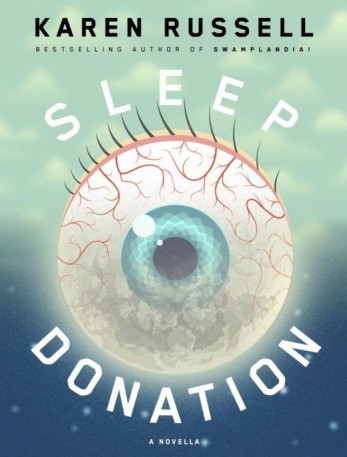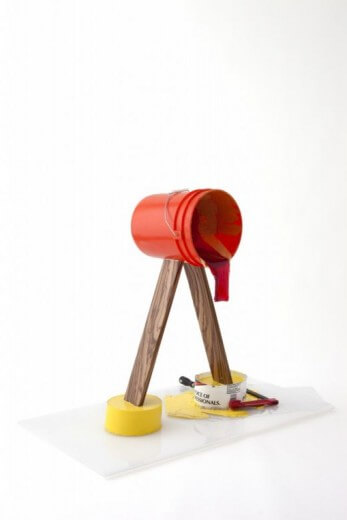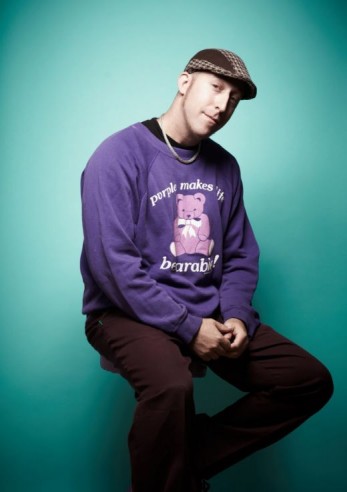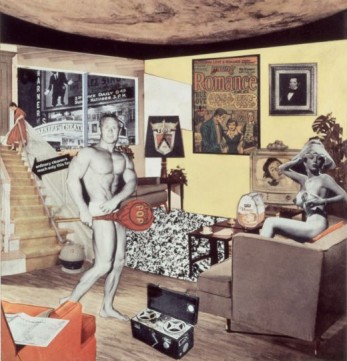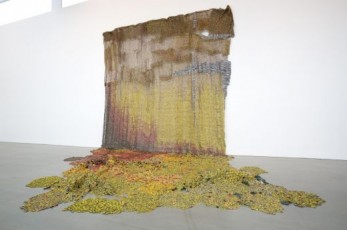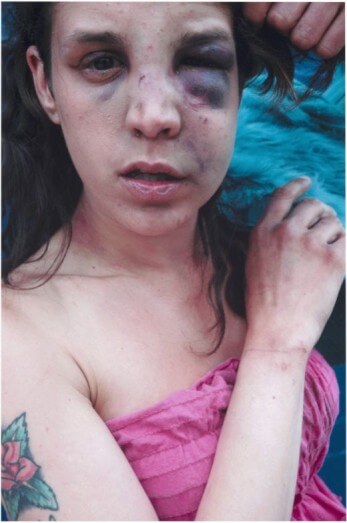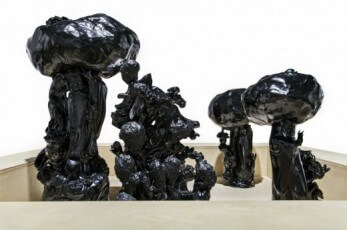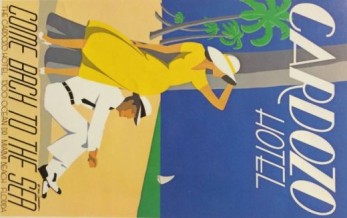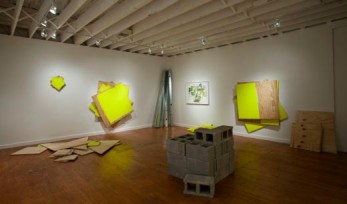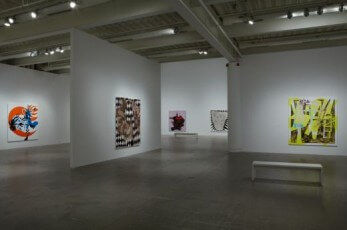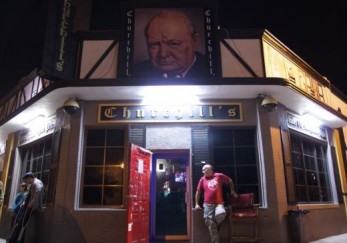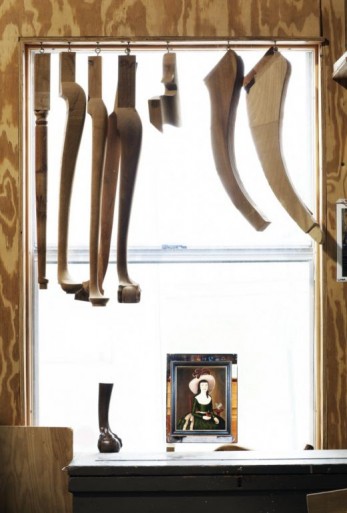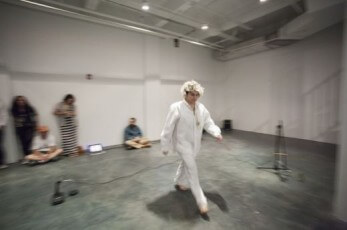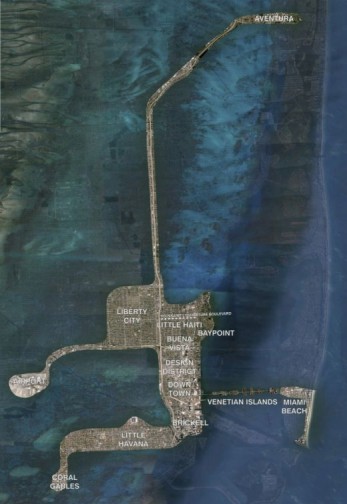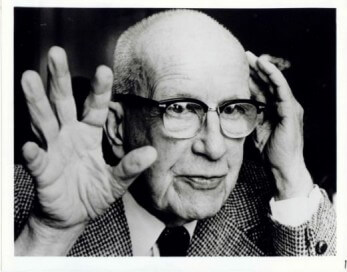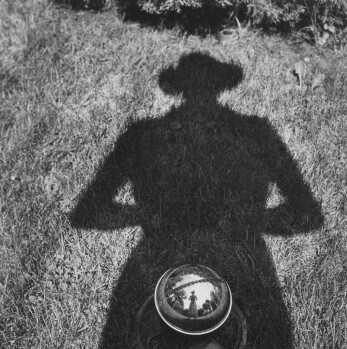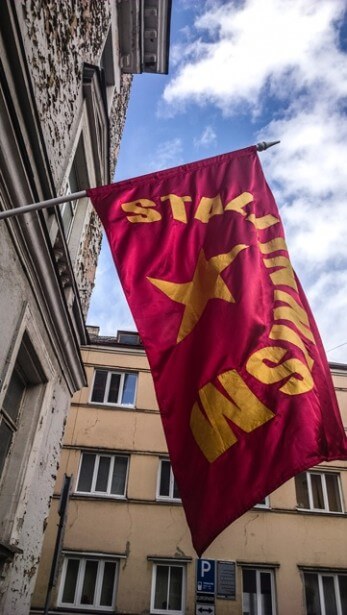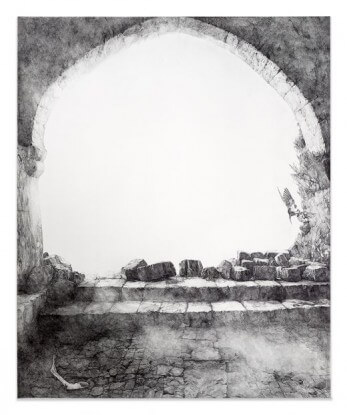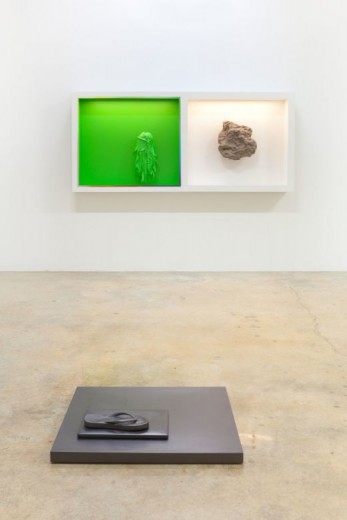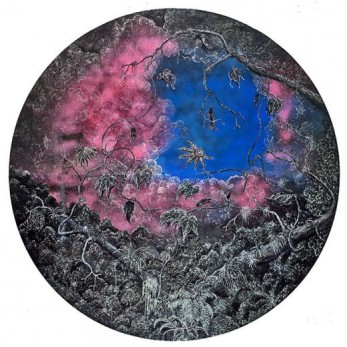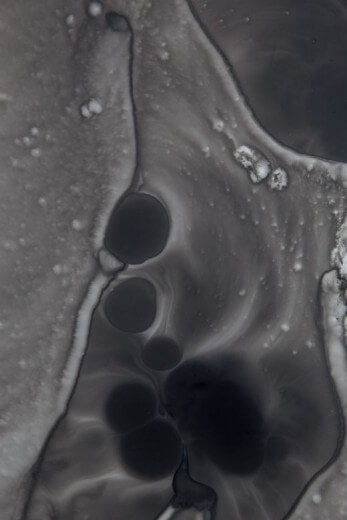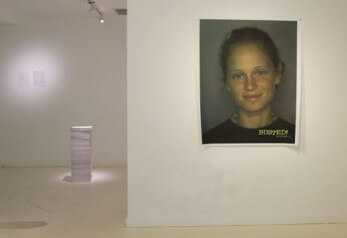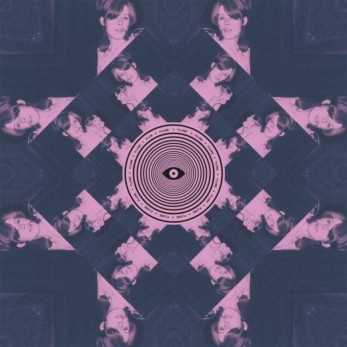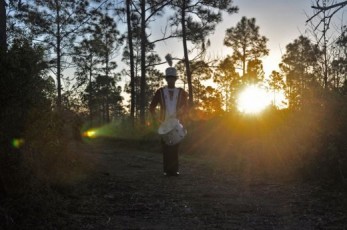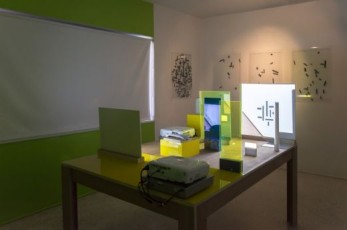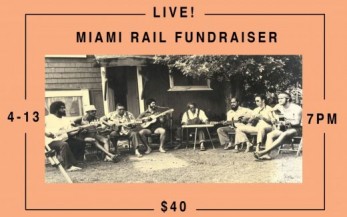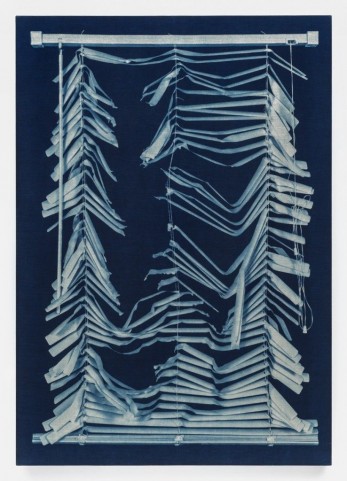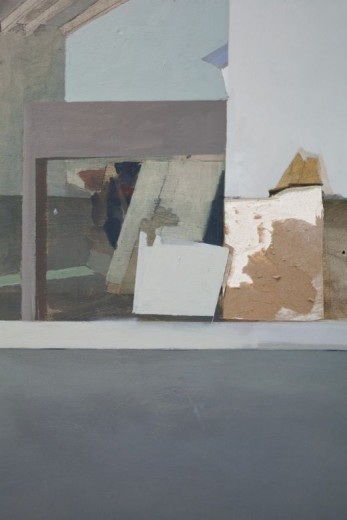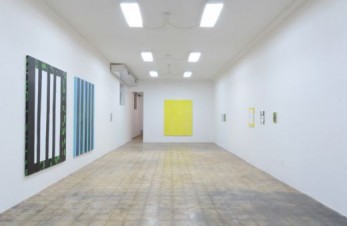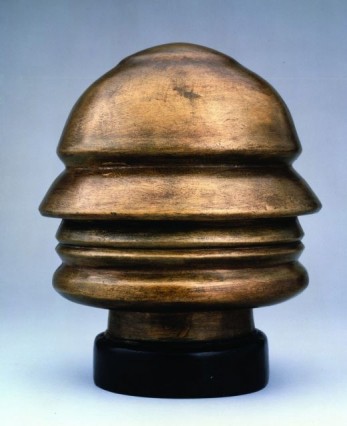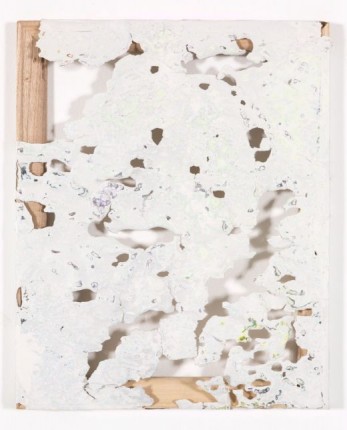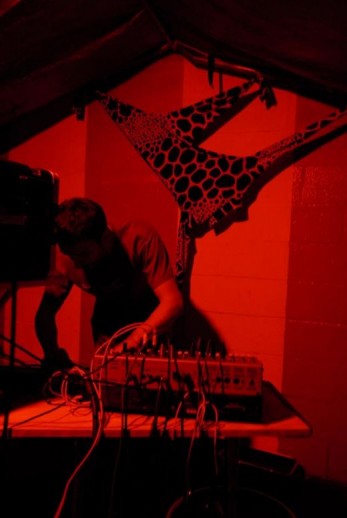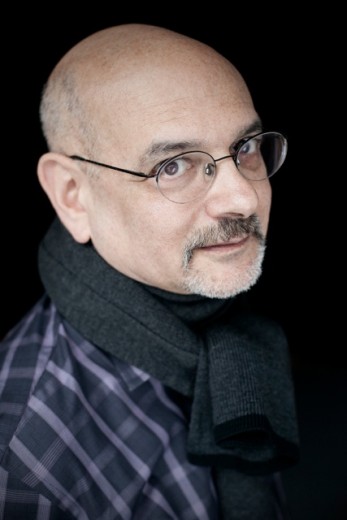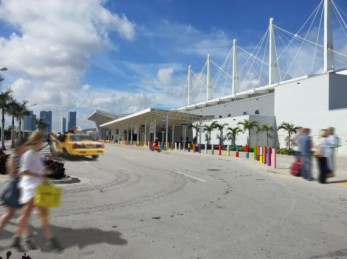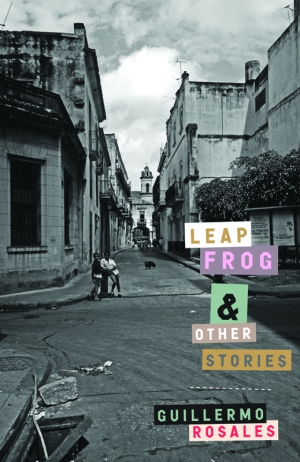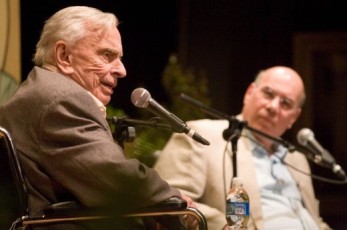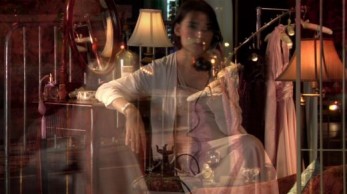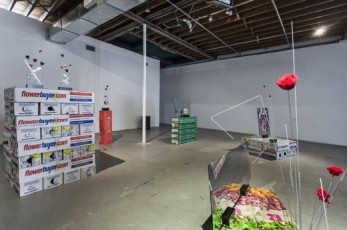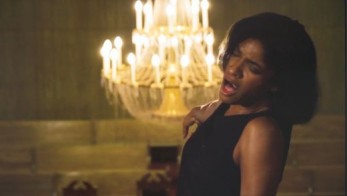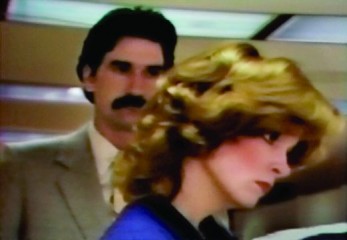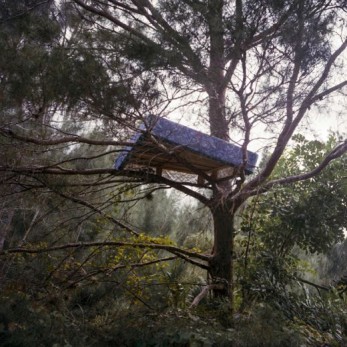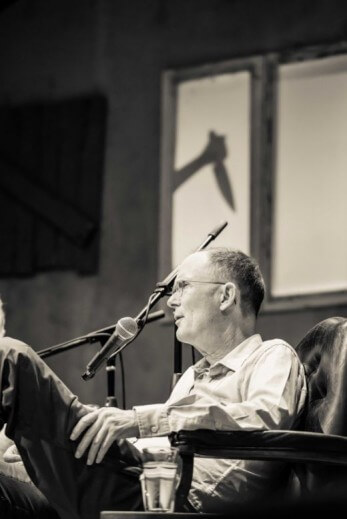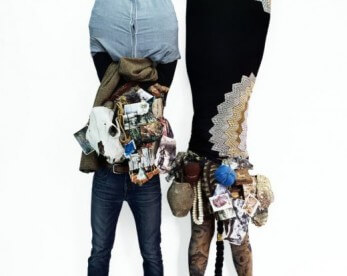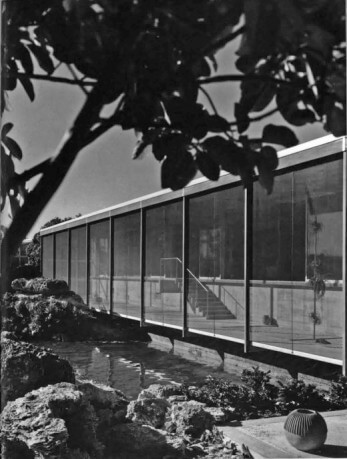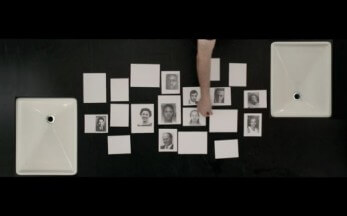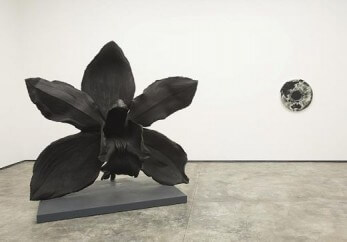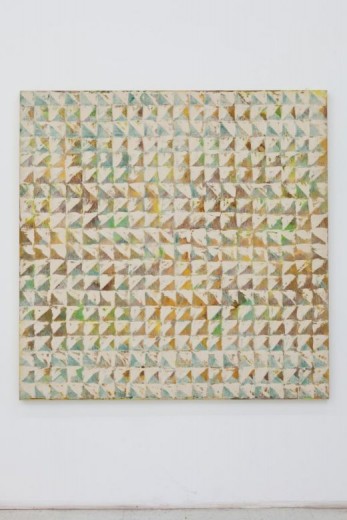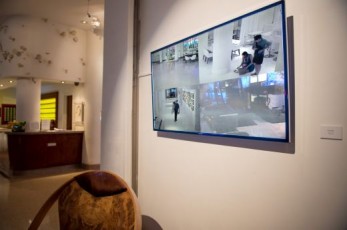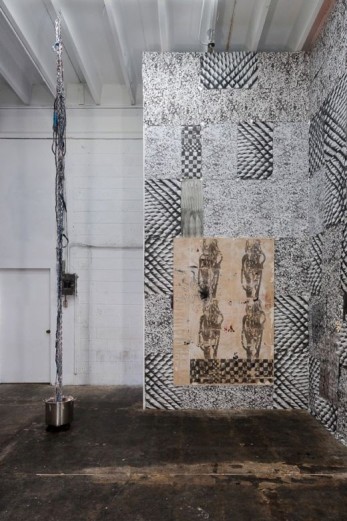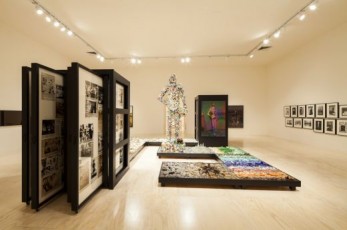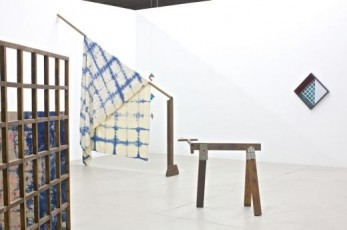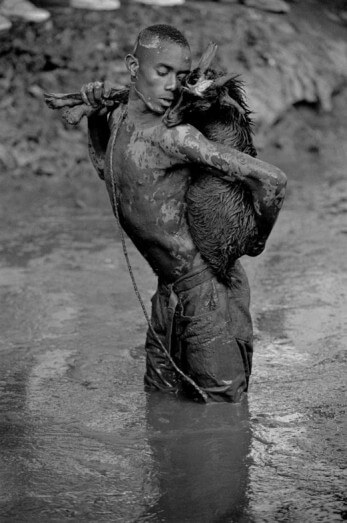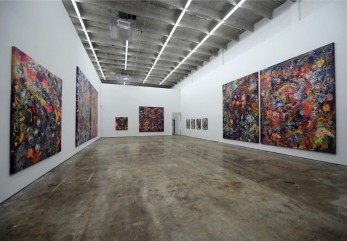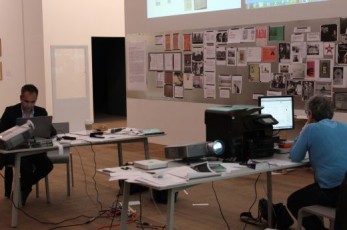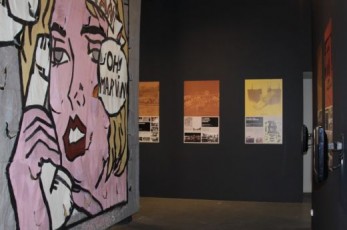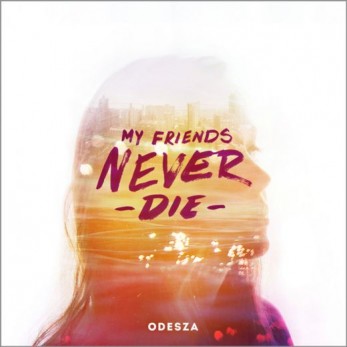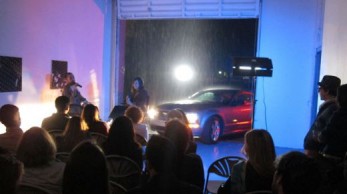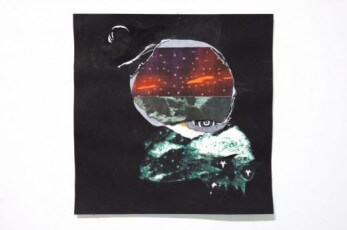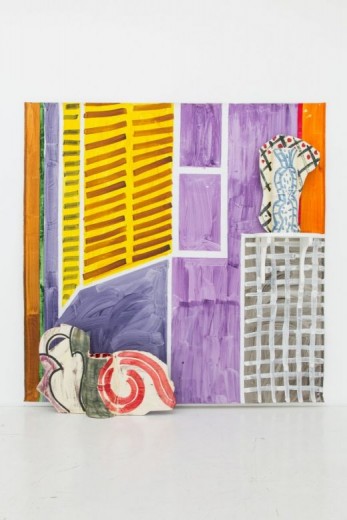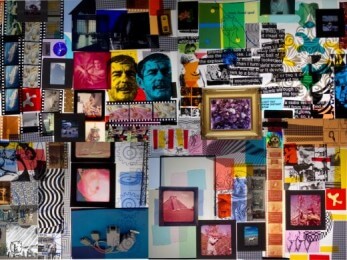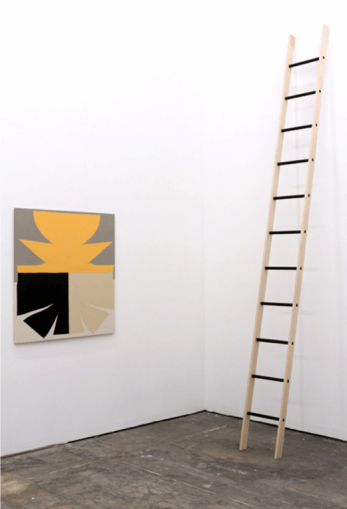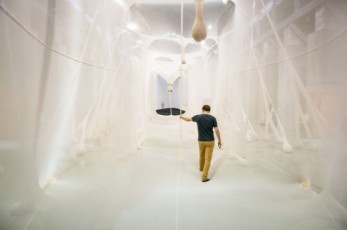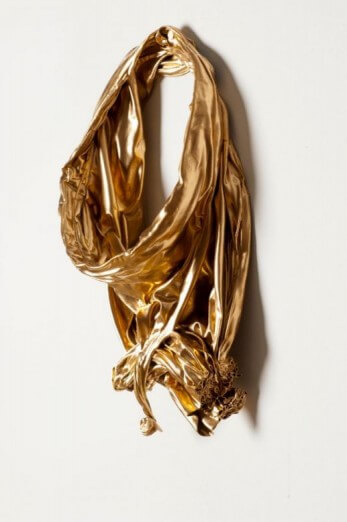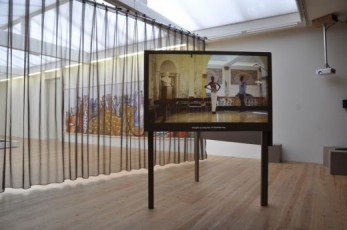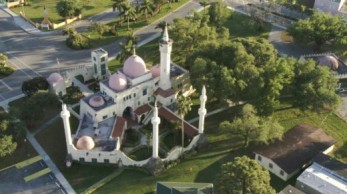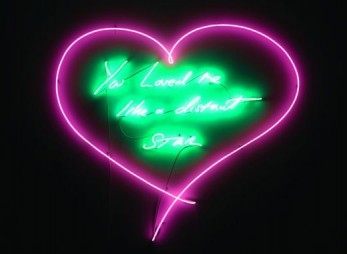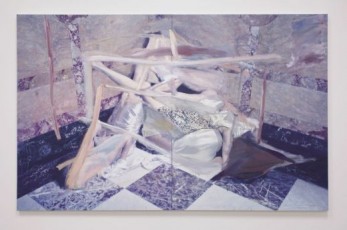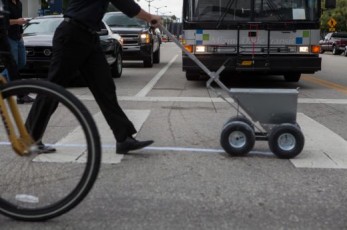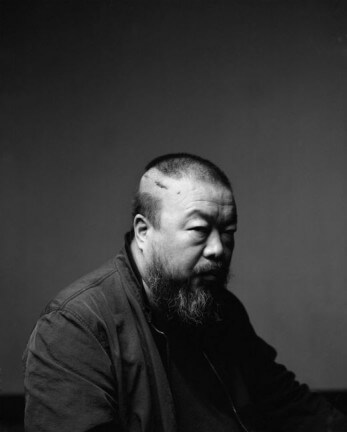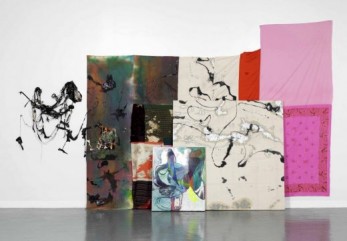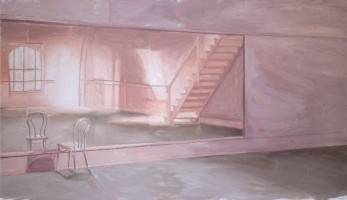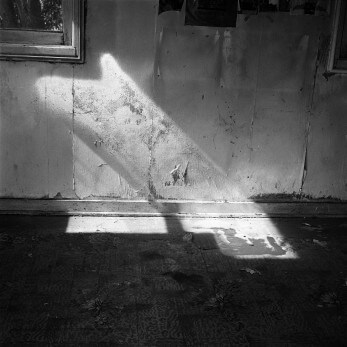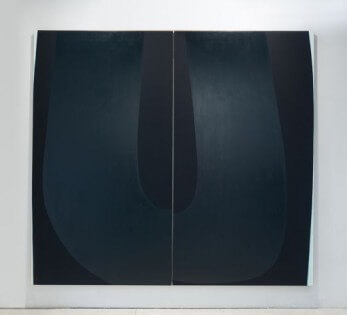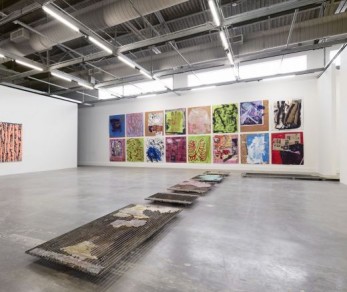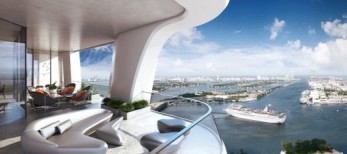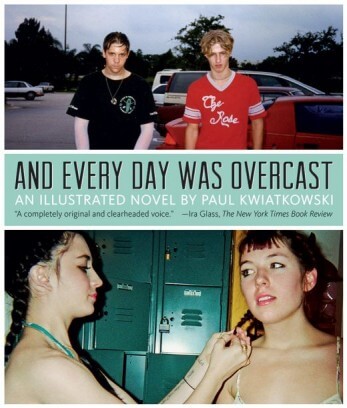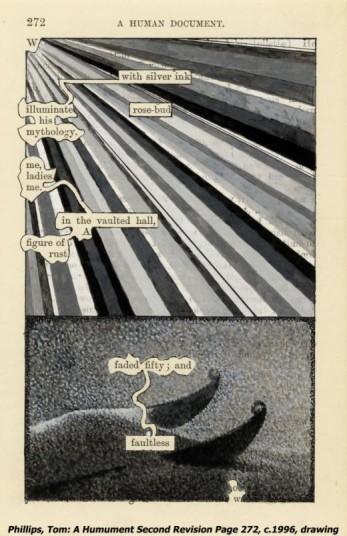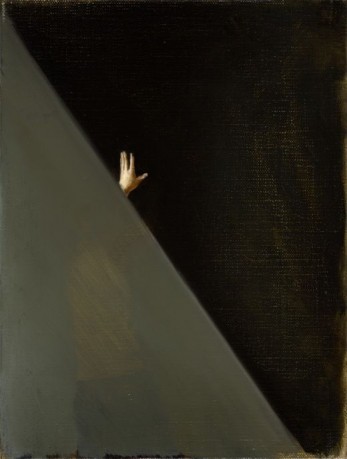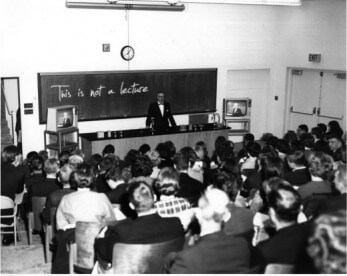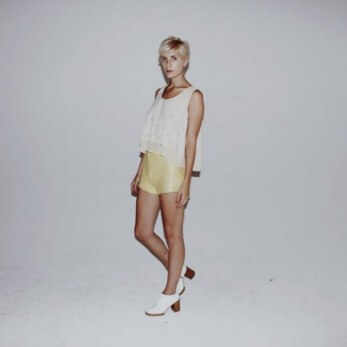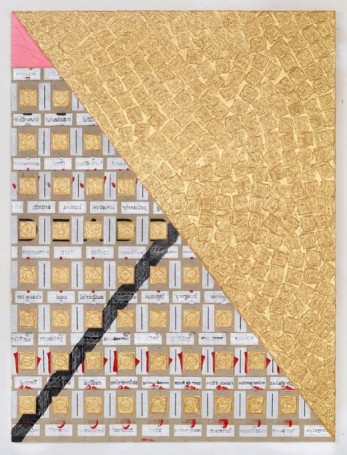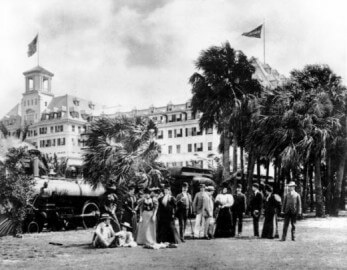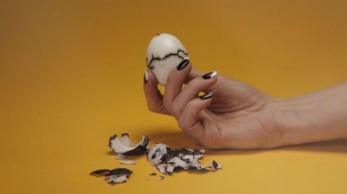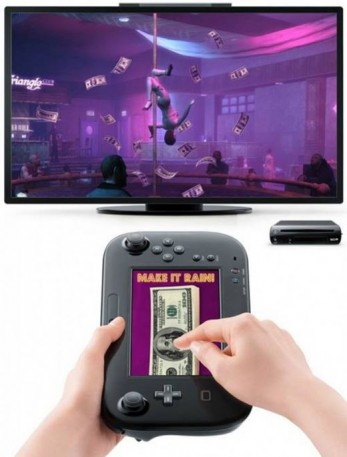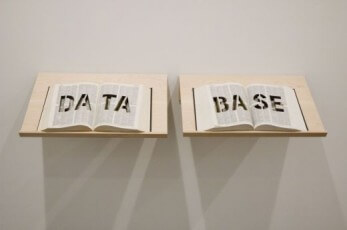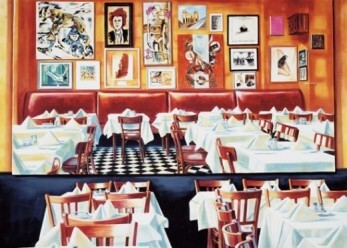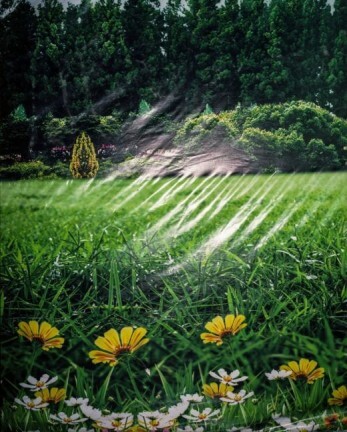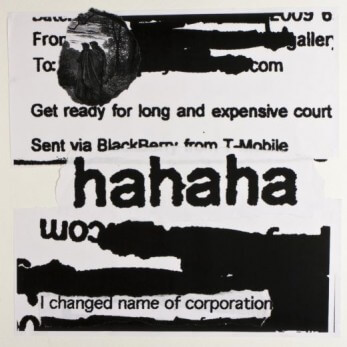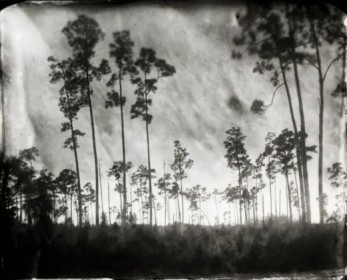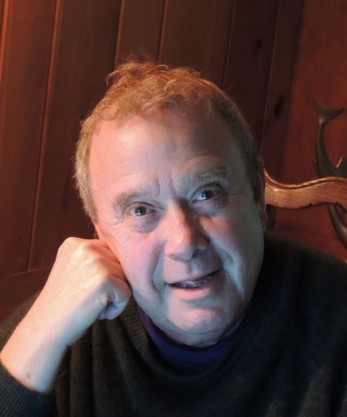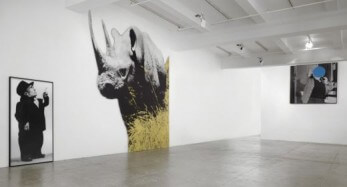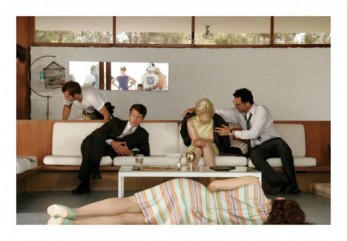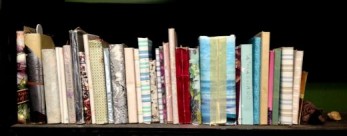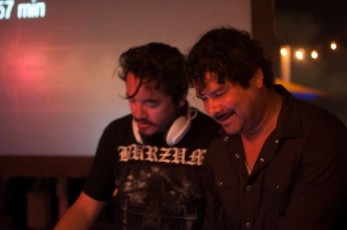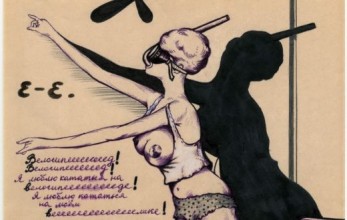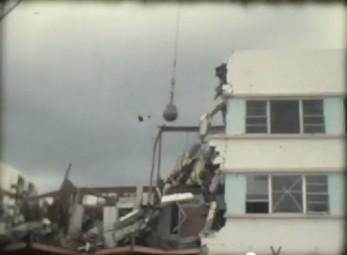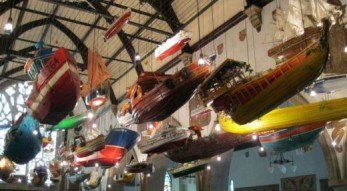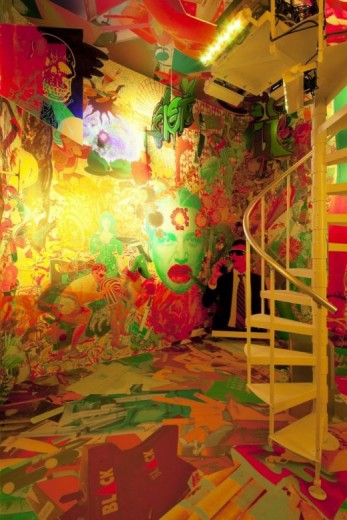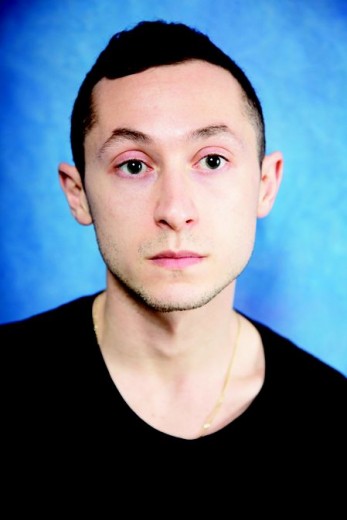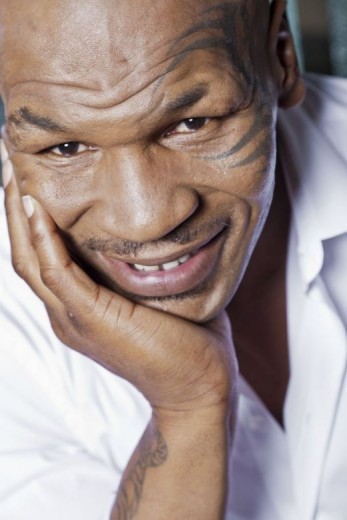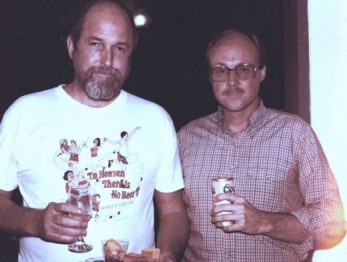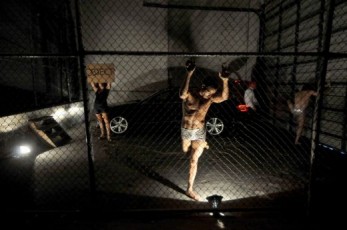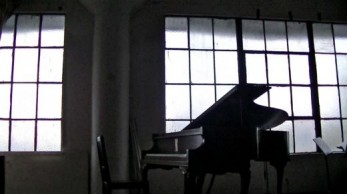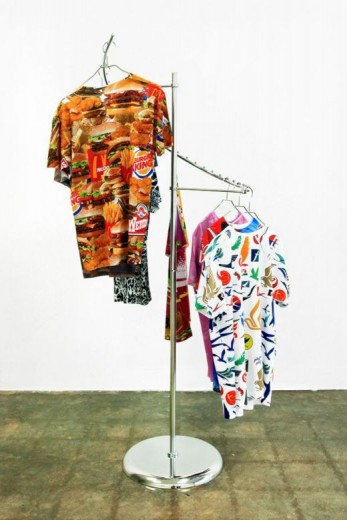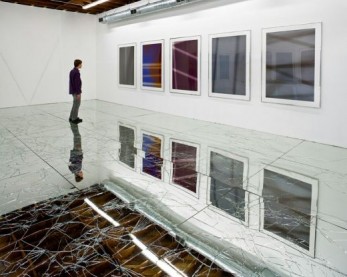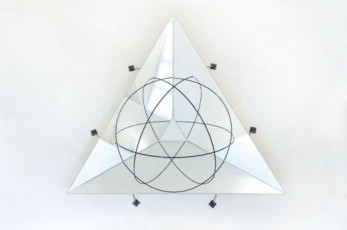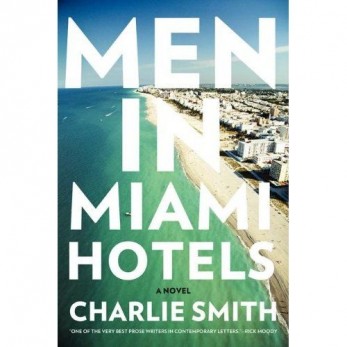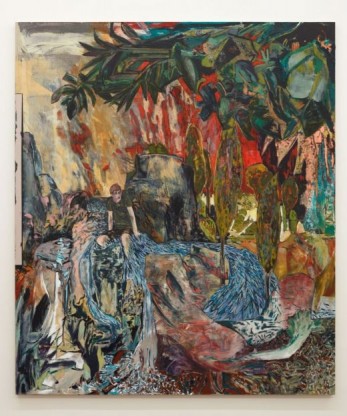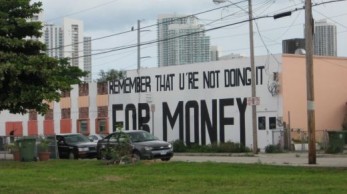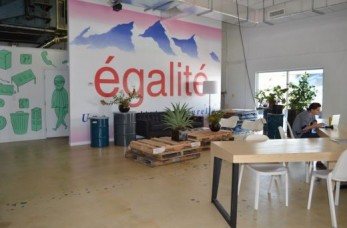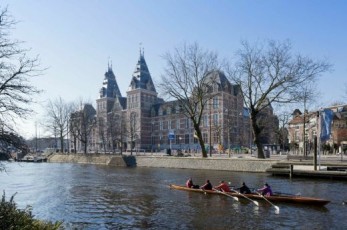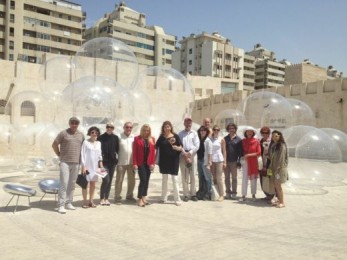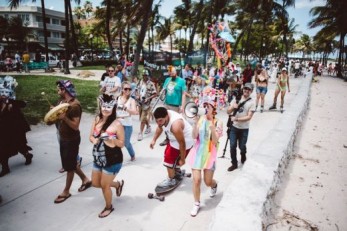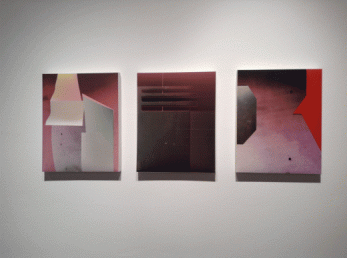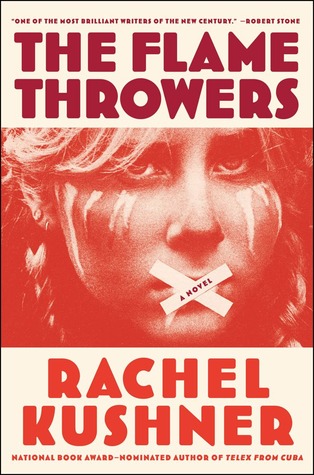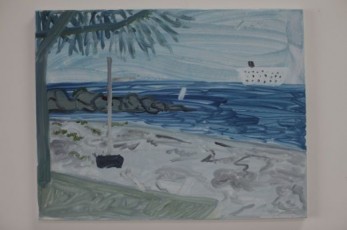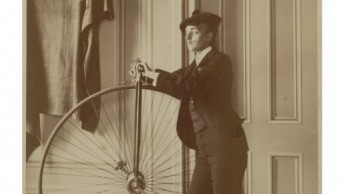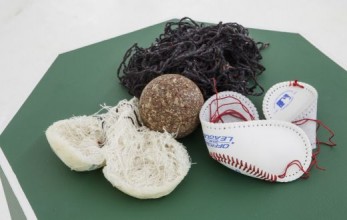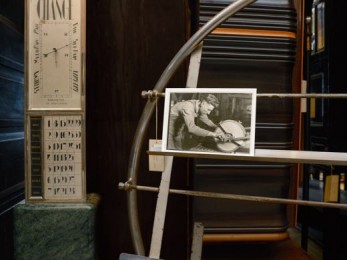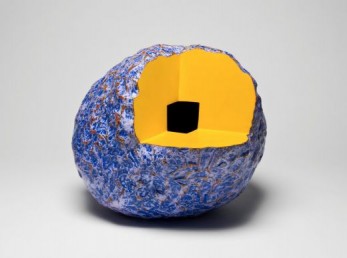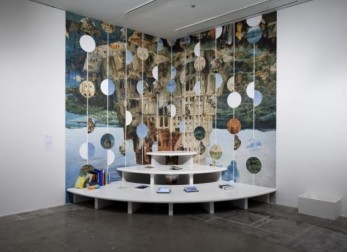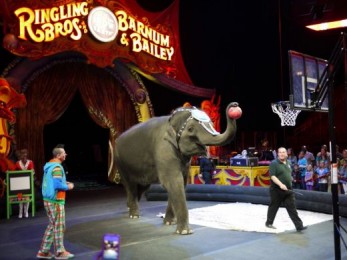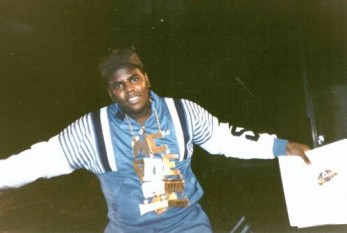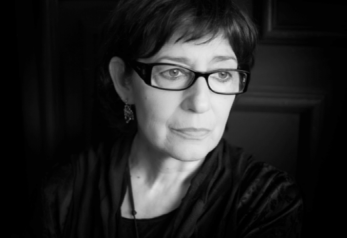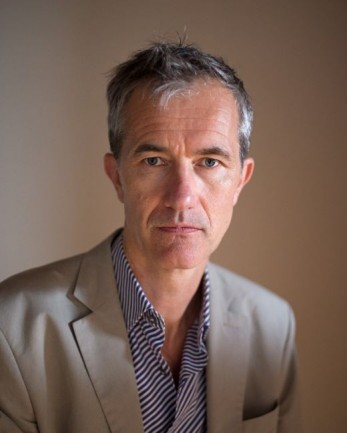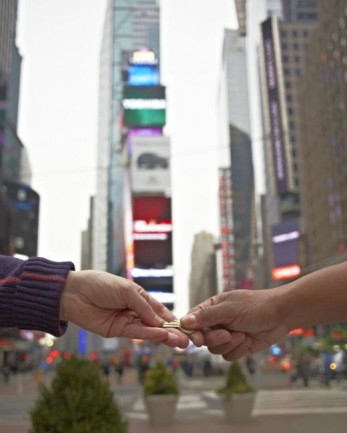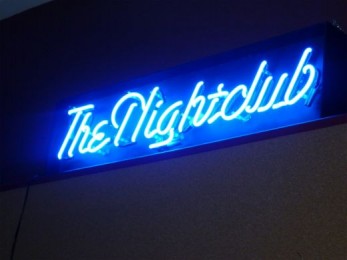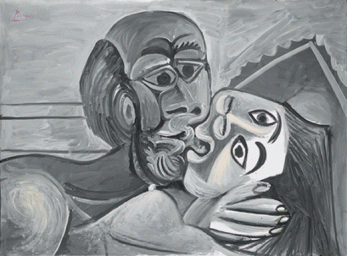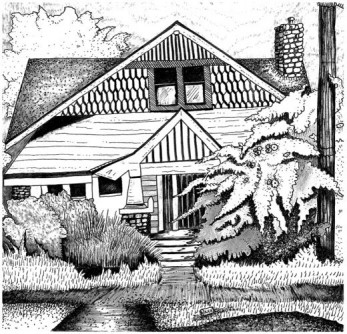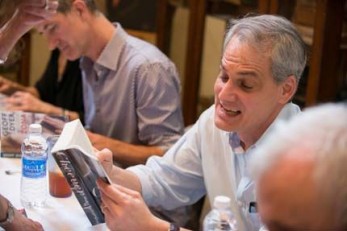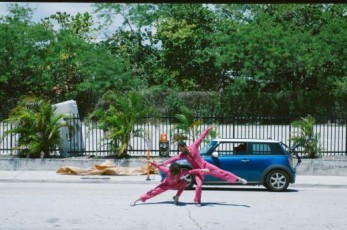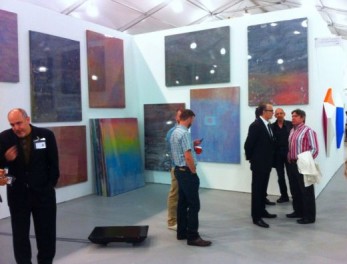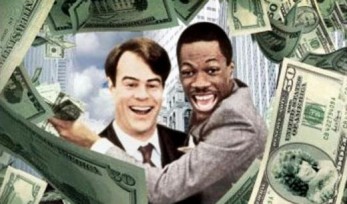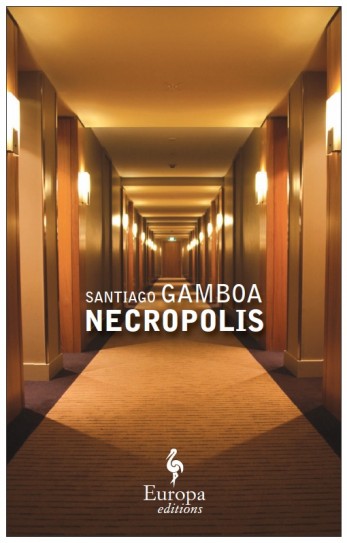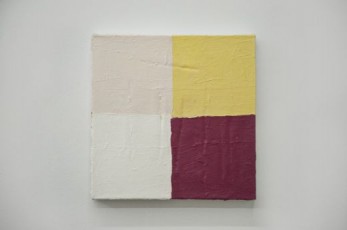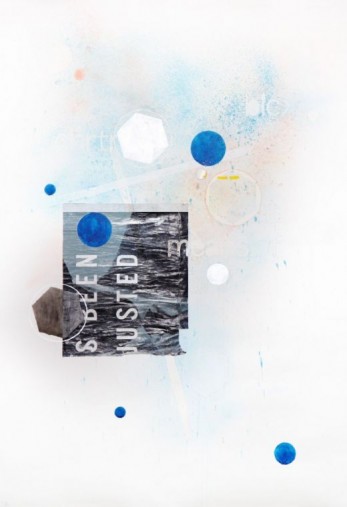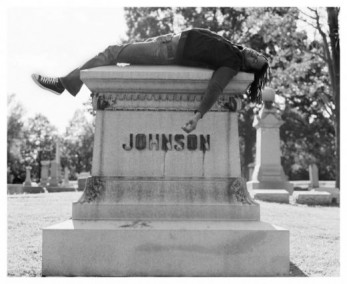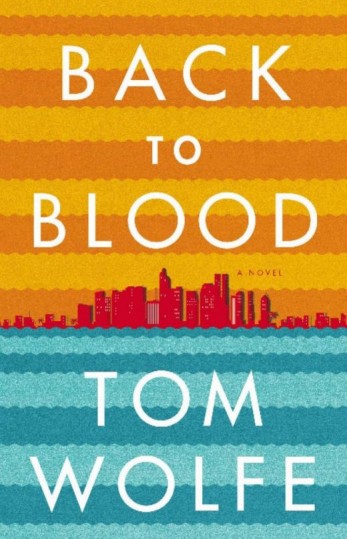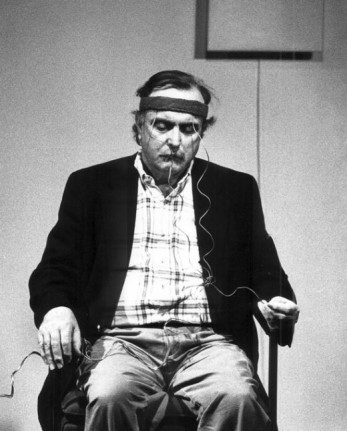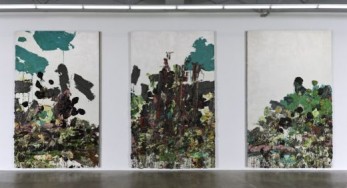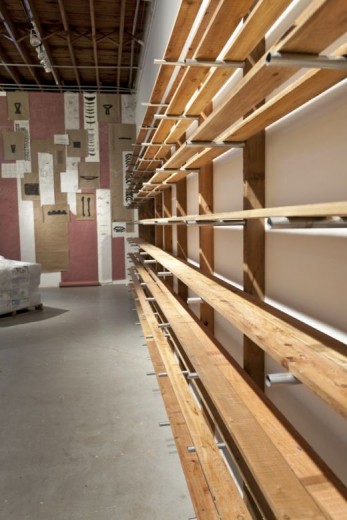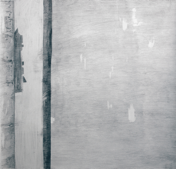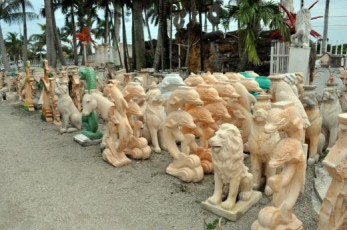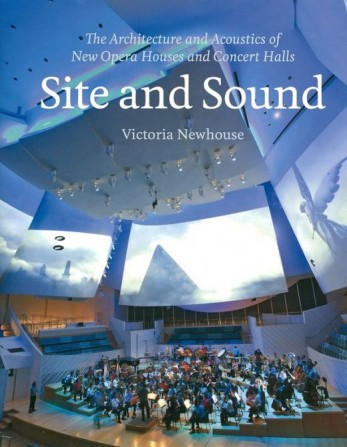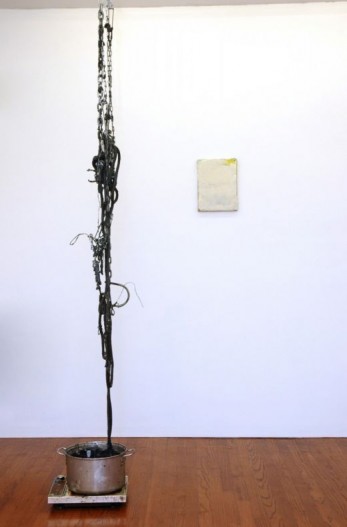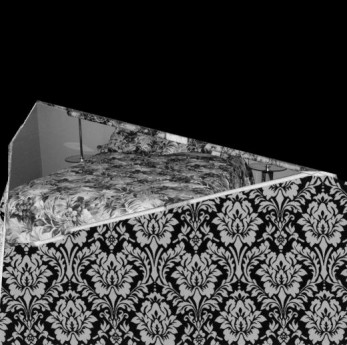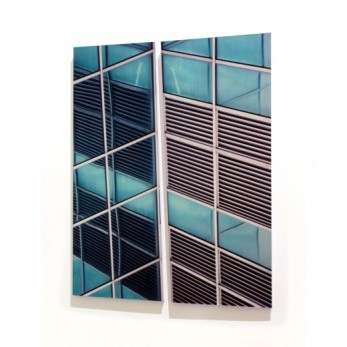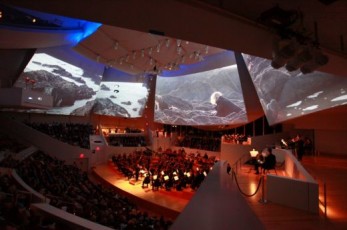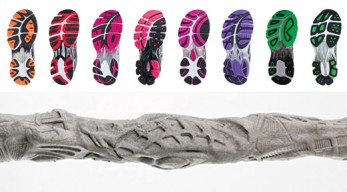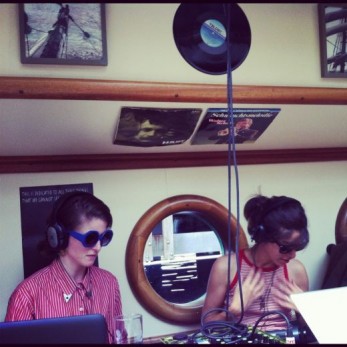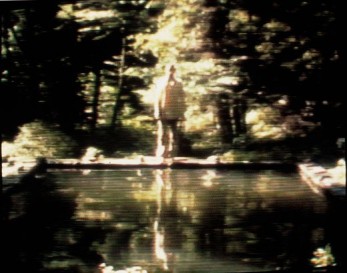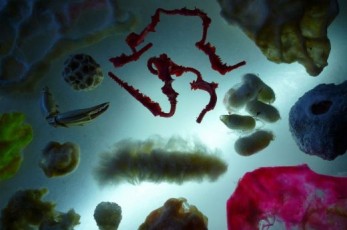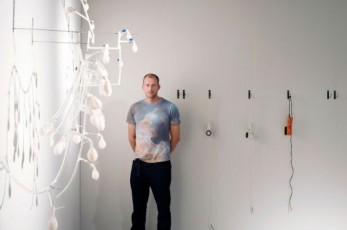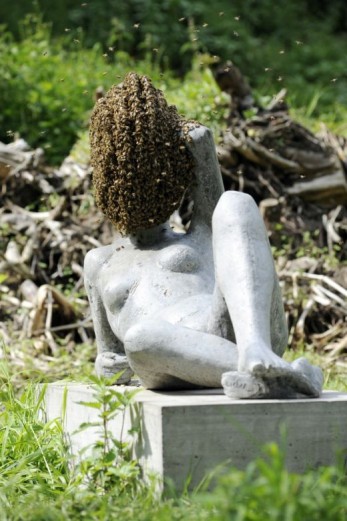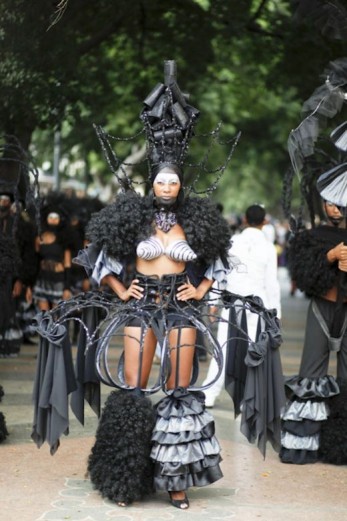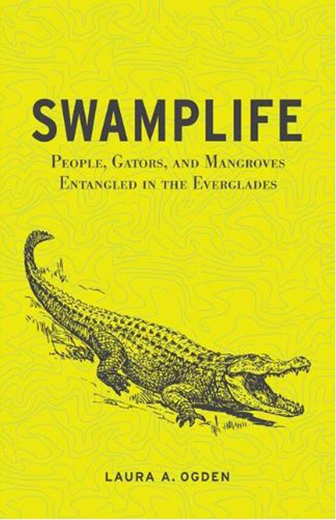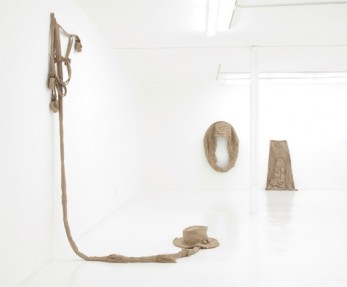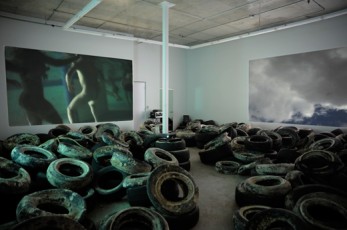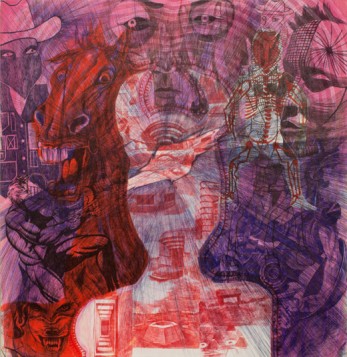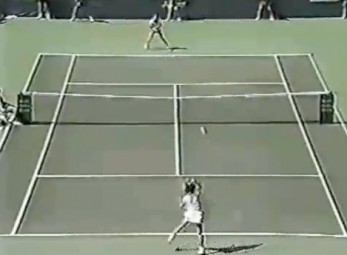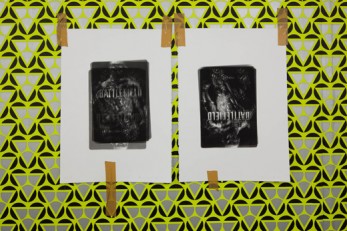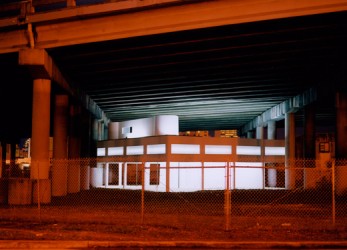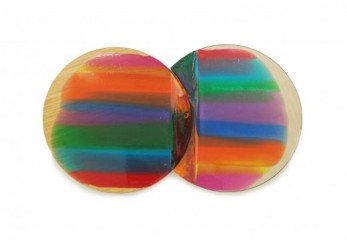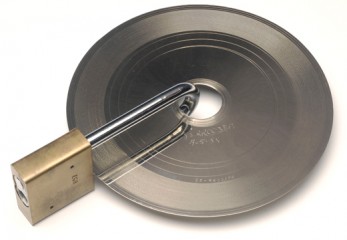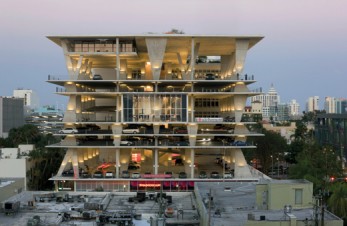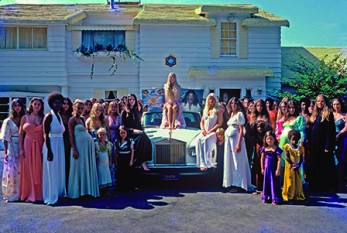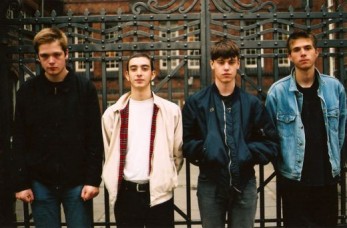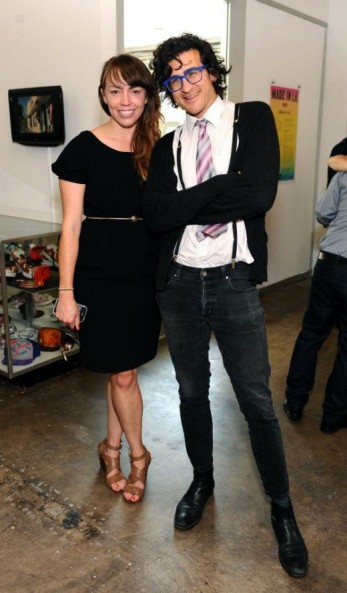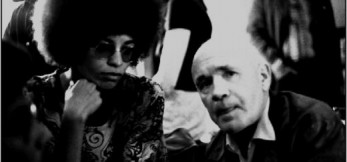Campbell McGrath is the author of ten books of poetry, including Spring Comes to Chicago, Florida Poems, Seven Notebooks, and most recently XX: Poems for the Twentieth Century (Ecco Press, 2016), a Finalist for the Pulitzer Prize. He has received many of America’s major literary prizes for his work, including the Kingsley Tufts Award, a Continue Reading »
ON RECALIBRATING COLLABORATION
Emer Grant, Nora Khan & the Fellows of Recalibrated Institute at ArtCenter South Florida, Fall of 2017
BEST SHOW: CATHERINE INCE ON ARCADES PROJECT: CONTEMPORARY ART AND WALTER BENJAMIN AT THE JEWISH MUSEUM, NEW YORK, 2017
Workshop for Potential Design
Best Show: BRENDAN CORMIER on RAGNAR KJARTANSSON AT BARBICAN, LONDON, 2016
Workshop for Potential Design
Best Show: Sam Jacob on Thorne Miniature Rooms at the Art Institute of Chicago
Workshop for Potential Design
Sam Jacob is the principal of Sam Jacob Studio for Architecture and Design.
BEST SHOW: Vicky Richardson on GEGO. LINE as Object at The Henry Moore Foundation Leeds, 2014
Workshop for Potential Design
BEST SHOW: Alice Rawsthorn on 5 Weeks, 25 Days, 175 Hours by Maria Eichhorn at Chisenhale Gallery, London
Workshop for Potential Design
WFPD: Hello Alice, thank you for coming today. Alice Rawsthorn: My pleasure. WFPD: What’s the exhibition you will be talking about today? AR: The exhibition I’ve chosen is a show by the German artist Maria Eichhorn at Chisenhale Gallery in East London in Spring 2016. It was called 5 weeks, 25 days, 175 hours. Maria Continue Reading »
The Justification of Modernist Painting: A Review of Frank Stella: Experiment and Change
Nathan Timpano
Category Is—Family, Love, and Heartbreak: The House of Impossible Beauties by Joseph Cassara
Christopher Alonso
Memories and reminiscences of the late Miami artist from friends, lovers, and collaborators Compiled and edited by Bruce Posner INTRODUCTION – THE OBITUARY Charles Cornelius Recher was a native South Florida artist who created poetical works of short film, multimedia installation and performance, and other visual arts, as well as poetry and prose. Continue Reading »
#1: The Colony His bumper sticker says “Boycott any company that makes you press 1 for English.” The apartment complex is a dying vestige of Hollywood colonialism of faux stucco and golden orange paint. You turn down La Mirada Drive, circling around each cluster of condos. A woman wearing a hijab Continue Reading »
September 21, 2017 | 7:00 PM – 9:00 PM ArtCenter/South Florida – Downtown 1035 N Miami Ave, Miami, FL 33136 A panel discussion with Brandi Reddick, Jason Chandler, Germane Barnes, and Alexandra Cunningham Cameron moderated by Naomi Fisher, hosted by ArtCenter/South Florida. This panel discussion brings together members of Miami’s architecture and cultural affairs community Continue Reading »
August 22, 2017 | 7:00PM – 8:30PM The Lido Lounge @ The Standard Spa 40 Island Avenue Miami Beach, Florida 33139 Join The Standard and The Miami Rail for readings, advice, conversation, and cocktails, of course, with our new writers-in-residence, Alissa Nutting and Dean Dean Bakopoulos. The two lauded writers will be joined in conversation Continue Reading »
A New Day Has Come: A Review of Radical Hope: Letters of Love and Dissent in Dangerous Times
Natalie Lima
NSU Art Museum Fort Lauderdale February 12–June 18, 2017 One of the first photographs in Catherine Opie’s 700 Nimes Road depicts the iconic Andy Warhol screenprint of the actress Elizabeth Taylor. The supersaturated colors of the print dominate the left side of the photograph. An inscription, “to elizabeth with much love Andy Warhol,” along with Continue Reading »
AFTER CHARL LANDVREUGD, MOVT NR. 8: THE QUALITY OF 21 Dream of rooms, forgetting, how to see. As silent as paintings. Space, in which We build houses. For all of us to be. Camera of thought, as if remembering. Tomorrow’s colony naked and faint. His moon is behind me, changing. Come true. Behold our solid Continue Reading »
Between the lines of death: The Art of Death: Writing the Final Story by Edwidge Danticat
Dana De Greff
Ghazals Upon Returning to Hispañiola 1. It was diaspora or death: the oligarchs took everything, the Americans gawked. To think that a small place could fit so much hate; so we left. Carter helped, and for twenty years of Sunday’s the east river was tinfoil our mothers tried to smooth out, the towers on Broadway Continue Reading »
FLORIDA I look out my window to the sea. For fifteen years I’ve wanted an ocean view, and now I finally have one. But on stormy days the white waves seem to crash too close to my window. Everyone agrees South Florida is sinking, the limestone below so porous not even a seawall can save Continue Reading »
Any valuable object, in order to appeal to our sense of beauty must conform to the requirements of beauty and expensiveness both. This cannon of expensiveness also affects our tastes in such a way as inextricably to blend the mark of expensiveness… with the beautiful features of the object and to subsume the resultant effect Continue Reading »
Creating a Platform for Exploration: Four Young Artists Explore Gender Fluidity and Identity
Veronica Mills
Thursday June 22, 2017 @ 7 pm The Lido Lounge @ The Standard Spa 40 Island Avenue Miami Beach, Florida 33139 The Standard & The Miami Rail are pleased to present our first Writer’s Retreat resident, Emily Raboteau. Join us June 22nd at 7PM for a reading, conversation, and cocktail reception with Emily and Alexandra Continue Reading »
EXISTENTIALISM, TRANSCENDENCE, AND OBLIVION AT BORSCHT DIEZ: Three Short Film Reviews
Hans Morgenstern
Sarah Gerard’s second book is a blending of personal essay, deeply researched journalism, and sudden, gutting truths. In the title essay, Gerard writes of a green-cheeked conure she and her husband adopted: “She chewed everything… She sought out our wounds and pulled at them, then groomed open the flesh even wider. She had a taste Continue Reading »
Since first merging onto the Information Highway, I have harbored doubts as to whether scholarship could long survive the digital age. Google makes it so, so easy to skim the surface of a given subject, lighting here for this weighty quote, there for that purloined insight. Who could say whether a work is the product Continue Reading »
MĂIASTRA: A HISTORY OF ROMANIAN SCULPTURE IN TWENTY-FOUR PARTS Part IX: Charybdis
Dr. Igor Gyalakuthy
When I Grow Up is the backdrop to an exhibition of BUREAU SPECTACULAR’s work, entitled insideoutsidebetweenbeyond, currently on view at the San Francisco Museum of Modern Art. BUREAU SPECTACULAR is an operation of architectural affairs founded and led by Jimenez Lai since 2008. It is located in Los Angeles. BUREAU SPECTACULAR imagines other worlds and Continue Reading »
WE ARE A SHIP OF FOOLS: Magickal, Experimental, and Ridiculous Ideas to Save Miami from Sea Level Rise
Nathaniel Sandler
At the start of the 1954 season, a new amusement park opened up across the road from Aquafair. Aquafair’s owner, Mr. Rooks, has been trying week after week to sabotage the new park with the help of his right-hand man Lafe. A family emergency calls Rooks away, and Lafe is left to tend the park Continue Reading »
We show up, years beyond the animus, in the places that managed to keep them adrift or away from home— the pubs and hash-‘n’-eggs counters in other cities that answered our mothers’ where the hell is he before we learned and before where worked itself into why. Maybe we show up with them, indulging the Continue Reading »
PART VIII: EREBUS AND NYX If there was a man named Constantin Bălănescu, I never knew him. If this man occupied a not insignificant role in the diplomatic services of the Romania People’s Republic and went by the diminutive “Costel,” he and I never met. To me, to his family, and to his friends, the Continue Reading »
Thursday, November 10, 2016 at 7 PM / Free Entry The Little Haiti Cultural Complex 212 NE 59th Terrace Miami, FL 33137 Please RSVP to administrator@miamirail.org to confirm attendance! Ryan N. Dennis is the Public Art Director and Curator at Project Row Houses in Houston, Texas. Her work focuses on African-American contemporary art with a Continue Reading »
___________________________ 1. Peter Murray in Beatriz Colomina and Craig Buckley, Clip/Stamp/Fold: The Radical Architecture of Little Magazines (New York: Actar, 2011), 30. 2. Stefano Boeri in Colomina and Buckley, 49. 3. Gwen Allen, Artists’ Magazines: An Alternative Space for Art (Cambridge: MIT Press, 2011), 3. 4. Stephen Perkins, “Alternative Art Publishing: Artists’ Magazines (1960-1980),” Approaching Continue Reading »
Part A. The Set Up, A Pitch. The 2008 crash forced Contemporary Art (CA) institutions to restructure their financial dependencies and sources; a process that only exaggerated what had started after economic shifts in the 1970’s dried up public funding for the arts and recalibrated those models toward a dependency on corporate sponsorships. In some Continue Reading »
________________________________ 1. See for example the story of “BHAAAD – Boyle Heights Alliance Against Artwashing and Displacement,” in Los Angeles: http://observer.com/2016/07/one-la-hood-is-violently-fighting-gentrification-demanding-art-galleries-leave/ 2. Frederic Jameson, “The Aesthetics of Singularity,” in: New Left Review 92, March-April 2015, pp. 130-131 3. See: Max Kozloff, “American Painting During The Cold War,” Artforum Vol. 11, No. 9, May 1973 and: Continue Reading »
_____________________________________ 1. Marginal Ecologies: accidental habitat; The unintended product of human activity and nature’s unflagging opportunism; a weedy cosmopolitan community in the wastelands and margins of the urban landscape from a central business district to the suburban/rural fringe. (From Kevin Michael Anderson, Marginal Nature: Urban Wastelands and the Geography of Nature, 2009) 2. Tsing, A. Continue Reading »
______________________ This essay was commissioned by the Miami Rail as part of Field Perspectives-a co-publishing initiative with Miami Rail, Temporary Art Review and Common Field for the 2016 Common Field Convening.
______________________________ 1. Rebecca Solnit and Susan Schwartzenberg, Hollow City: The Siege of San Francisco and the Crisis of American Urbanism (London: Verso Press, 2000), p. 138. 2. Madeleine Schwartz, “The Art of Gentrification,” Dissent (Winter 2014). https://www.dissentmagazine.org/article/the-art-of-gentrification 3. Sharon Zukin, Naked City: The Death and Life of Authentic Urban Places (Oxford: Oxford University Press, 2010), Continue Reading »
1. Rhett Herman, “How fast is the Earth moving?” Scientific American. 2. Karen Barad, “Nature’s Queer Performativity,” KVINDER, KØN & FORSKNING NR. 1-2, 2012. 3. For a competent mythography of Castillo, see Goyanes’ “SONGS FEEL LIKE MUSCLE MEMORY, OR, I’M OFF SOCIAL MEDIA, HMU ON YOUTUBE: A Mythography of Domingo Castillo,” The Miami Rail, 2015. Continue Reading »
THE SITWELLS ORGANIZE A ROYAL POETRY BENEFIT FOR THE FREE FRENCH WITH: EDMUND BLUNDEN, GORDON BOTTOMLEY, H.D., WALTER DE LA MARE, T.S. ELIOT, JOHN MASEFIELD, EDITH AND OSBERT SITWELL, WALTER TURNER, ARTHUR WALEY, LADY WELLESLEY, AND VITA SACK-VILLE WEST (Aeolian Hall, April 14, 1943)
George Green
Wednesday, September 28, 2016 at 7 PM // Free Entry ArtCenter/South Florida – Downtown Miami 1035 N Miami Ave #300 Miami, FL 33136 Please join us for our 18th Visiting Writer lecture with Laura McLean-Ferris of the Swiss Institute at ArtCenter/South Florida’s Downtown Location. Laura McLean-Ferris is a writer and curator based in New York. She is Continue Reading »
Saturday, September 24, 2016 at 3 PM // Free Entry – RSVP Only Well of Ancient Mysteries 87 SW 11 Street Miami, FL 33130 Join artist and writer Franky Cruz as he guides us on a tour of the Miami Circle and the cradle of Miami civilization built by the Tequesta natives at least a millennia ago. Continue Reading »
Alan Gutierrez, UNTITLED (rain scene), 2016 Sunday September 11, 2016 at 1PM // Free Entry The talk is directly followed by a Fringe Projects walking tour of nearby sites downtown Miami Center for Architecture & Design Second Floor 100 NE 1st Ave, Miami, FL 33132 Please RSVP to administrator@miamirail.org Please join us for our third Continue Reading »
Thursday August 25, 2016 at 7PM / Free Entry Rec Room @ The Gale South Beach Hotel 1690 Collins Ave, Miami Beach, FL 33139 786-975-2555 Please RSVP to administrator@miamirail.org Join us for our second Block by Block event with Nathaniel Sandler, founder and director of Bookleggers Library and interim Managing Editor of The Miami Rail. Continue Reading »
Thursday July 28, 2016 at 7PM / Free Entry The Little Haiti Cultural Complex 212 NE 59th Terrace Miami, FL 33137 305-960-2969 Please RSVP to administrator@miamirail.org The Miami Rail is pleased to announce the launch of our Block by Block program. Block by Block invites Miami based writers, to engage specific communities and neighborhoods in Continue Reading »
Friday, June 24, 2016 at 7 PM / Free Entry ArtCenter/South Florida – Downtown Miami 1035 N Miami Ave #300 Miami, FL 33136 Please RSVP to administrator@miamirail.org The Miami Rail is pleased to announce our 19th Visiting Writer Rujeko Hockley. Rujeko Hockley is the Assistant Curator of Contemporary Art at the Brooklyn Museum. Her interests Continue Reading »
New Zealander artist Susan Te Kahurangi King’s debut exhibition in North America opens this summer at ICA Miami, curated by Tina Kukielski. Recently appointed to the executive directorship of ART21, an organization specializing in digital media about contemporary art, Kukielski met with Sara Roffino in her New York office to discuss her interest in King’s work, the challenges of curating an exhibition of work by a nonverbal artist, and the next steps for the organization she now leads.
Some Irreverent and True Early Conceptions of Florida As Under-explained Reasons For Why This Part of the World is Consistently and Continually Absurd
Nathaniel Sandler
Palm Tree Like crackling icicles, your brittle sword-branches rattle in the small breezes of thick warm nights . . . —EMIL A. HARTE Maybe even our real names, in a way, are pseudonyms. In 1937, during her final attempt to circumnavigate the world at its equator, Amelia Earhart spent eight days in Miami to repair Continue Reading »
Friday, March 25, 2016 at 6:30PM / Free Entry Institute of Contemporary Art Miami 4040 NE 2nd Avenue, Miami, FL 33137 305-901-5272 Please RSVP to administrator@miamirail.org The Miami Rail is pleased to present Evan Moffitt, our 18th Visiting Writer to date. Moffitt is a New York-based writer and Assistant Editor at frieze. His work has Continue Reading »
Asleep in the sun
of your arms
then cold
when you’re gone.
NO MORE SAND: Thoughts Composed Discursively aboard the SuperFast Gambling Boat Somewhere between Miami and Bimini
Nick County
A JOURNEY BETWEEN THE BOSPHORUS AND THE SEA OF MARMARA: Impressions from the Istanbul Biennial
Ombretta Agro Andruff
Deep in the gated glens of Morningside, Felice Grodin built a temporary outpost of installations, conversations, and interactions.
A very cursory googling of “critiquing children’s art” generates a list of boorish sites such as I Am Better Than Your Kids and Art Critiquing the Life Out of Your Kids, such that could only be the work of dumb, desperate adults.
It seems flight is on Miami’s mind: there’s the history of flight in our summer issue, last night’s Curious Vault Collaboration detailed below, and Michael Namkung’s upcoming show Flying Towards the Ground at Locust Projects in August. Something in the air, perhaps?
“The uneducated use of acrylic…is a disaster,” said Charles Hollis Jones.
The Miami Rail is pleased to present Courtney Malick, our 15th Visiting Writer to date. Malick is a regular contributor to Artforum, San Francisco Arts Quarterly, and V Magazine, and is a founding member of Dis Magazine.
As we enter the twilight of Barack Obama’s presidency, the star of his icon is only beginning to rise. In office during the ascent of social media and the greatest explosion of images in history, Obama’s image, digitally encoded, will likely morph and proliferate over the coming years, before taking on the relatively stable orbit of history. Perhaps sensing this, the artist Rob Pruitt painted a portrait of Obama once a day, every day, since his inauguration.
I sit one night eating conch fritters at Beau’s Café on Wheels, a Bahamian food truck that stays, for the most part, on Plaza Street between Franklin and Charles Avenues in Coconut Grove. The dining area is a picnic table in Beau’s driveway. The menu variously includes items such as souse (a kind of Bahamian pork stew), conch salad, fried conch, and conch fritters, served with the ethereal “conch sauce,” the ingredients of which will not be revealed to me.
Awash in light, floated on wide pine flooring and white walls, cantilevered out to mega-foot sculpture galleries, and connected umbilically by stairs indoors and out, the art looks terrific. With all its big guns lined up—there’s Bellows! O’Keeffe! Hopper! Bourgeois!—the show could have sunk under the weight of its commitment to be a review of the Whitney’s history, but, billed as a gourmet tasting of more treats to come, it’s as frisky and promising as a pedigreed colt let out for its first full-length run.
“More goat than donkey.” This is how my father described B. P. Hasdeu, with an epithet he reserved for men whose intellects he admired and whose views he loathed. Bogdan Petriceicu Hasdeu was a Romanian writer and linguist, and a prominent figure in the Romanian intellectual community of the late nineteenth century. Hasdeu was the father of Protochronism, the delusional school of revisionist history that exaggerates the feats of the ancient Dacians, a Thracian tribe thought to be the ancestors of modern Romanians. [Note: Protochronism is a historical aggrandizement that was used by Communists to stir up nationalist pride, and is yet another Romanian cultural hemorrhoid, one we will be examining in greater detail in entries to come.] B. P. Hasdeu’s goatlike brilliance had the power to inspire and confound, and the impact of his work can be felt across Europe to this day. To Romanians, however, Hasdeu’s legacy will forever be coupled with that of his only daughter, Iulia.
Los Angeles-based artists Math Bass and Lauren Davis Fisher recently collaborated on the exhibition Math Bass: Off the Clock at MoMA PS1. The nature of the collaboration is interesting, not only because it counteracts the structure of a solo show, but also because the artists are uniquely connected through their simplified and pared down visual language and modes of operation, which incorporate raw materials, identifiable symbols, architectural forms, conditions of space, and shifting spatial perspectives. The artists—who live together in a space that is also shared by Fisher’s studio—discuss here their recent collaboration in the context of the personal and creative relationship it was built on, as well as the physical and theoretical overlaps in their respective practices.
Minutes—or maybe even seconds—into viewing Ryan Sullivan’s paintings at the Institute of Contemporary Art, Miami, the work induced a kind of reflexive mental search algorithm, bringing to mind a succession of names, images, and ideas: Jackson Pollock, Gutai, Robert Smithson, Andrei Tarkovsky, Star Trek, Edward Burtynsky, Paul Virilio, NASA, and global weather imaging.
With Order of Sorcery at Big Pictures Los Angeles, Aramis Gutierrez posits that you can be oppositional by being untimely; punk by being painterly. “Painting is potentially the most embarrassing medium because of its directness and its instinctive connection to skill and taste,” Gutierrez says. “It comes off as a bare-naked avatar of who we think we are, who we want to be, and what we think is going on.”
Intimate Material Systems, a solo show by Miami artist Leyden Rodriguez-Casanova, features a large-scale installation bordered by several recent wall and floor works that, as an ensemble, speak to a characteristic, painstaking inquiry about art, economics, and spirituality consistently present in the artist’s output.
So recently culturally transformed, Miami will likely soon be transformed again, and more profoundly, by avenging nature. If the scientists’ best guesses are true, the rising sea levels ensured by the inexorable advance of global climate change will leave the epicenter of the pop-up hedonism of Art Basel an underwater ruin—sooner rather than later.
Neither art, nor the fitful, fickle affections of the global elite drawn by it, looks likely to staunch this rising tide. Indeed, inasmuch as some of the fortunes on parade each December have been made by dumping carbon into the atmosphere, the fairs play a bit part in the destruction of their own island habitat.
This is what Carol Munder does: she takes pictures, then she prints them.
She shoots black-and-white film with a Diana camera, a cheaply made, medium-format, plastic-lensed device first produced in the 1960s, sold to five-and-dimes by the gross, and often given away as novelties.
Diana cameras are the original fuzzbox of the photography world. They distort, they vignette, they are riddled with light leaks, and their ability to focus is largely theoretical.
The conjuring of monuments and memorial sculpture is the focus of New York- and Cairo-based artist Iman Issa’s series Heritage Studies, which comprises her recent solo exhibition at Pérez Art Museum Miami. Remaking is at the core of Issa’s practice, as is her critique of—or meditation on—cultural transmission, constructions of “the other” through art discourse and museological practices, and the role of art institutions in postcolonialism.
In a letter to his wife Lucy, John James Audubon described his first impression of Florida as “the poorest hole in Creation,” a disheartening observation in light of Audubon’s reputation as a spirited French-American of indefatigable passion.
As I read The Argonauts, a list of questions lengthened in my mind. Who should I share this book with? Who, at least within my immediate family, would best relate to Maggie Nelson’s love, her tendencies toward delaminating names, and other habits of language? My aunt, not by blood, who made me mix-tapes of women rockers to listen to over and over again as a small child?
On March 26, 2015, Miami Beach celebrated its centennial, one hundred years of motley history capped off by the Hard Rock Rising Miami Beach Global Music Festival on 8th Street and Ocean Drive. Millions of dollars were spent on a centennial-themed park in the sand, complete with a Ferris wheel and a Hard Rock go-go dancer looming up above the entrance like a gargoyle Salome. Immediately inside, concertgoers passed through a Hard Rock gift shop and confronted the surreal lineup of Barry Gibb, Gloria Estefan, Andrea Bocelli, and Flo Rida.
Praise may not be the purpose—however we are gendered—but certain secretarial duties definitely have pride of place among the tasks of people who write poetry in 2015.
Satterwhite seems to be the ringleader of the world he makes, which is enriched by icons, objects from QVC, impermanence, form, maternal influences, and popular culture. His work investigates memory and desire, piecing conceptions of both together in a saturated and rendered, geometric plane of existence. Initially a painter who felt the limits of being still and later a video artist who found Adobe After Effects couldn’t perform in a way that matched his concepts, Satterwhite transitioned once again and taught himself Maya, a 3D animation software.
If you go to Andrew Yeomanson a.k.a.DJ Le Spam’s live/work studio in North Miami he will probably make you coffee. He’s got a restaurant-grade espresso machine in the kitchen and firmly believes that if your coffee beans were roasted more than two weeks ago, then they’re stale. The coffee machine is but one of Le Spam’s many prized possessions. Inundated by ceaseless tchotchkes and ephemera, every scrap of available surface area inside the City of Progress—as he calls his studio—is covered with vinyl records, cassette tapes, CDs, 8-tracks, and loads of audio equipment. He estimates there to be around fifteen thousand vinyl records all told, whether they be LPs, 45s, or 78s.
From the perspective of this Northeasterner and Miami novice, the city of Deco and Dolphins cuts a charmingly vexing silhouette. Like for many outsiders, my concept of Miami before I ever came to see it myself was a caricature: excess and tits lit by palm-frond sun shadows and neon hotel signs. And to be sure, those images are here. Caricature is, of course, always based on truths. And that’s one of the things about Miami I came to love—its un-self-conscious willingness to live up to its shit.
The room is walking
into a woman. It’s lying
to you again—hasn’t learned.
The room is walking into a woman
and he claims this time
he has evidence. A telephone
dangles from his white collar neck. Right.
That’s my cue.
Existing between abstraction, graphic art, Adobe CS, and the screen, Jesse Moretti’s work aims for a place where the supposedly discrete states––flatness/dimensionality and analogue/digital––merge. By creating a feedback loop between digital and material space in the studio, she collapses and unifies the pictorial plane. Born in Miami Beach, Moretti received her MFA from Cranbrook Academy of Art, Bloomfield Hills, Michigan, in 2013. She has received residencies at MANA Contemporary ESKFF, Jersey City, and Pioneer Works Center for Arts and Innovation, Brooklyn.
Alternative Contemporaneity is a courageous attempt by director Babacar M’Bow, artist/curator Richard Haden,and educator Adrienne von Lattes to reclaim contemporary art from what M’Bow calls in his catalogue essay the “tiny, economic elite” who consider it (or, rather, its possession) solely as currency in the churning global market. For the MOCA team, contemporary art is nothing less than an exploration of what it means to be human amid the economic, social, and political systems that dehumanize.
Navigating the social and economic structures of the contemporary art world, critic and activist Ben Davis–the Miami Rail’s Visiting Writer for our upcoming Summer 2015 issue–will speak about his acclaimed book, 9.5 Theses on Art and Class, and other recent work.
Tseng Kwong Chi was a prolific photographer who captured and participated in the downtown Manhattan art and club scene of the 1980s. He left behind an enduring archive of images of those well known artists, including Keith Haring, Andy Warhol, Jean-Michel Basquiat, and the many lesser knowns who made up that particular moment in art-historical time. Though most known for this documentarian work, vastly more compelling is the oeuvre of surreal political portraitures of himself.
I saw a sound check version of Martine Syms’s Nite Life, which seems fitting for a work that investigates a raw club recording made in Miami in 1963 by Sam Cooke that wasn’t released until decades after his death. I heard a few comments after the actual performance that mostly dealt with the discussion about which category the work might fall under: is it an artwork? Is it merely a lecture? From where does its merit come? Increasingly, we see artists or cultural producers creating work that exists between boundaries.
Justine Ludwig and I spent a lot of time together during this year’s Dallas Arts Week. Previews, openings, after-parties; galas, auctions, dinners. But we never really had a chance to talk. So on Sunday, April 12, I guilted her into picking me up from my hotel at 1530 Main Street, and driving me to her place of work, Dallas Contemporary, located at 161 Glass Street. Not unlike the movie Speed, the following conversation only took place while we were in motion.
About his upcoming Takeover Tour of the Wolfsonian-FIU, the noise musician Rat Bastard quipped, “I’m going to come off like a guy talking to himself to the people attending this event.”
At Miami Dade College’s Museum of Art and Design—which is housed in the iconic Freedom Tower—artist Odalis Valdiviesco has a show of work titled Arrhythmic Suite. A series of about 70 paintings, photographs, and photocopies, they hang along a linear, horizontal line around the room, and on some of the 9 rectangular pillars in the middle of it.
A functional aesthetics is necessitated, in part, by climate. For hot climes, shorts and chancletas adorn the human form, and slits, slats, and holes dress the built ones.
Paddy Johnson, our Spring 2015 Visiting Writer, will be giving a public lecture at YoungArts on February 4th
Paintings by the artist Purvis Young depict swirled worlds of burning cities, tanks rolling to war, man-sized roaches attacking man-sized men. They’re not on clean canvases — they’re on the warped, chipped, and beautifully assembled wooden flotsam found on the streets of Miami.
One might think it would have been big news in museum circles when Merriam-Webster proclaimed its word of the year in 2014 to be “culture.”
“You can no longer find the original instruments to play Mozart on,” said Janet Eilber, artistic director of the Martha Graham Dance Company.
SONGS FEEL LIKE MUSCLE MEMORY, OR, I’M OFF SOCIAL MEDIA, HMU ON YOUTUBE: A Mythography of Domingo Castillo
Rob Goyanes
How do you write about an artist whose work is about everything but the work itself? This isn’t a fluffy profile of Domingo Castillo. It’s a fluffy profile of conceptualizations of Domingo Castillo.
The journey of the Stalin bronze, sculpted by the infamously outcast Dumitru Demu and torn down in 1962 in a period of De-Stalinization, is equally fascinating, though subject to rumor. The original has by now almost certainly been melted down.
Painting seems to have returned from the dead, again. The frequent pronouncement that painting is dead, followed by the declaration of its eventual resurrection, is an important, but often overlooked part of the modern (and postmodern) artistic tradition.
There are particular states of mind that can be described only as some potential elsewhere, but can’t quite be defined, and that are experienced by creation, particular stimuli, and collaboration. This wording might invite a transcendent, spiritual, or otherwise elevated connotation.
Miami artist Nicolas Lobo is known for giving form to the invisible forces that surround our everyday. Interested in object-oriented thought, his production is both intellectual and process-driven, and his works have revealed interests in a diverse range of phenomena and materials—illegal and informal markets, go-go dancers, and civic infrastructure; concrete, terrazzo, and napalm; and cough syrup, soda, and perfume. For The Leisure Pit, on view at Pérez Art Museum Miami this spring, Lobo used a swimming pool as an outsize tool in an experimental, custom casting process to produce a series of sculptures made from concrete forms submerged underwater and cast inside the pool itself.
Having recently moved away from the beach and come into possession of a cat, I was a little too thrilled to read this novel about moving to the beach and coming into possession of a dog. Daniel Galera’s Blood-Drenched Beard is the story of young man who copes with a familial legacy of murder and suicide by moving to the Brazilian surf town of Garopaba.
The Rubell Family Collection: Highlights and Artists’ Writings, Volume 1 was published to commemorate the Rubells’ fiftieth wedding anniversary and to mark the twentieth year that the collection has been open to the public. The book encapsulates a selection of 880 works from 250 artists represented in the collection. With more than 6,800 works by 832 artists to choose from, I do not envy that editing job.
One of my favorite artworks is Xu Bing’s 1st Class (2011), a rug made from half-a-million cigarettes. They stand leaning against each other on the floor to form a 40-by-15-foot “tiger pelt,” the stripes changing from tobacco-brown to filter-orange as you move around the piece. It is about decadence and death and industry and nature—from the history of the tobacco trade to big game—and it’s a perfect balance of all of these, humorous and serious at the same time.
The lava lamps mold the room. Pumping to the beat almost like a sentient central nervous system, they feed off the spirit of the place. Happiness, sadness, light, darkness, and beautiful hideousness grinding friendships into late nights and turn late nights toward the imaginary. The massive 8-bit Street Fighter paintings remind us it’s all a game. Put a quarter in. HADOUKEN.
Perhaps no one in Mexico City is more fully engaged with the praxis of merchandise display than the street vendors. Stands hawking nearly identical goods—plastic water guns, cigarette packs stamped with cautionary images of fetuses, striped socks packed in crackling cellophane, and the endless assemblages of Mexican candy (Duvalin, Pulparindo, Lucas Muecas)––are distinguished only by the particular dialogue among the objects. What draws you to this vendor and not to that vendor isn’t a certain stick of gum, it’s the gestalt.
It is a hallmark of grandly chaotic spectacles to be quietly defined by tight parameters, which, though seemingly antithetical to the outcome, actually contribute to the madness of it all. The best example of this might be rules that evolve in children’s playground games: this pole is home base, you can’t run past a building of this color, if you barely brush the chased party, he or she isn’t “it” anymore.
Wander through the galleries on the ground floor of Pérez Art Museum Miami (PAMM), and you can’t miss the imposing, six-foot-tall double painting of Barbra Streisand dressed as a male rabbinical student.
With Robert “Meatball” Lorie as your unofficial tour guide, it would be hard not to see Miami through a different lens.
In April of this year a new stadium in Bordeaux, France, is set to be completed, designed by Herzog & de Meuron, the Swiss architectural firm behind, among many others, the Tate Modern in London (and its 2016 extension), the Walker Art Center in Minneapolis, and Miami’s own Pérez Art Museum Miami (PAMM).
During Cecilia Vicuña’s recent busy visit to Santiago, Camila Marambio spoke with her at her childhood home. The relaunching of her 2006 LP “Kuntur Ko” by the independent New York record label Hueso Records brought her home to offer a series of timely performances and rituals composed in response to the destruction of glaciers in Chile.
“Don’t walk. Drive.” I can’t count the number of times I was given these instructions while visiting Miami, regardless of how close I was to my destination. I was offered this advice after having parked just a two-blocks’ walk away from Pérez Art Museum Miami to see a pop-up art project nearby.
Perhaps more than anything else, driving my rental car around the city defined my three-day stay in Miami. This marks a significant departure from my typical visit. Like most art tourists and professionals, I head to Miami Beach in December for the fairs, and if I travel around the city, it’s in a cab or art fair shuttle bus. I don’t rent a car, I don’t expect to get around quickly, and I don’t anticipate spending much time on Biscayne Boulevard. During those trips, I spend most of my days studying the floor plans of fairs and my nights blogging from a perch on my hotel bed.
Amanda + James
BFI
February 20, 2015
James Danner, founding director of New York–based Amanda + James, brought Francis Poulenc’s one-act opera for a soprano soloist, La Voix Humaine, to Miami over an unseasonably cool weekend in February. Before the show began, the audience, seated on the makeshift stage, or near to it, could hear downtown traffic and other nighttime noises just outside the large open doorway to BFI’s exhibition and performance space.
In the Blueshift Project’s brochure for Made in New York, a group show featuring eight New York artists and curated by Robert Dimin, an effort is made to express that the works on view are separate from the “noise” that results from the contemporary art fairs that swarm Miami each December. I visited the gallery on a quiet day soon after the show’s opening and was led through it by co-director Sofia Bastidas and manager Ana Clara Silva. Each had interesting insights to share about the overall concept of the grouping, which brings together many works that address the human and animal body and–—although made in New York—issues close to home in Miami.
At the opening of Michael Jon Gallery’s group show, someone kept turning off the lights. My wife thought this meant we should leave—but no, dimming the lights only makes for better viewing of Laddie John Dill’s celebrated untitled light work, which he first created in 1971 and has since been (laboriously) installed at the Venice Biennale, among other places. Showcased at the center of the gallery, mounds of sand and sediment house angular arrangements of glass panes that—when someone hits the lights—are softly illuminated from within by argon lighting just beneath the surface.
Art Lexïng debuted its new gallery space in Miami Ironside with a solo exhibition by Beijing-based artist Ye Hongxing. Selected in 2004 by the Asian Art Museum of California and Art Cologne as one of China’s twenty top rising artists, her work has been shown at the China Art Museum, Shanghai Museum of Contemporary Art, and Art Cologne, among others.
In connection with its current exhibition Myth and Machine: The First World War in Visual Culture, the Wolfsonian–Florida International University hosted artist Mary Reid Kelley for a screening of two of her WWI-inspired videos: Sadie, the Saddest Sadist (2009) and You Make Me Iliad (2010). Reid Kelley is well known for her forceful intellect, expressed in her extremely clever verse-making, biting and playful wordplay, ethereal screen presence, and her filmmaking itself, which entails meticulously researched production details such as drawn imagery, painstaking stop-motion lettering, and costume and set design digitally enhanced by her collaborator and husband Patrick Kelley.
Organized by Rafael Domenech, Havana-born artist and curator, Binary // Binario features two young artists from Domenech’s alma mater, Havana’s Academia Nacional de Bellas Artes San Alejandro. Ernesto García Sánchez and José Manuel Mesías—both painters—approach their medium in divergent ways: Mesías draws largely on the unique visual quality of an aesthetic rooted in Cuba’s history and its cultural evolution, while Sánchez’s works fall in line with a long tradition of paintings that emphasize the medium itself, revealing the inner workings of the support via delicate cutaways in the canvas.
As the artist Nick Lobo told me over pisco sours at SuViche, Miami is a resort that grew, and grew some more, but it’s still a resort—a place where people come to get away from wherever and whatever they’re from, and whoever they were previously connected to, for a while or forever. The tourist hustle and the short con are as old as the sea and as new as that day’s sunlight. Visitors are welcomed, sized up, and fleeced in endlessly inventive ways that pepper the conversations of locals. Visitors who stay longer begin to welcome, size up, and fleece newcomers, in turn.
While Miami’s art scene is often faulted for lack of depth and conceptual rigor, there is enough intellectual energy here for a group of eight artists (spearheaded by Odalis Valdivieso and Lidija Slavkovic) to organize Fall Semester, a two-day rapid-fire conference where internationally recognized scholars, critics, and theorists came together to consider the city—especially this city, situated on the northern frontier of the global South.
Early on the morning of August 6, 2013, officers of the Miami Beach Police Department spotted REEFA tagging his name on a closed-down McDonald’s. He was adding his tag to a mix of signs and other graffiti that was already plastered on the walls. REEFA, standing at 5’6” and weighing roughly 150 pounds, ran from about six cops until he was cornered a few blocks away. After allegedly resisting arrest, he was knocked to the ground then stunned in the chest with a Taser by officer Jorge Mercado. As the officers celebrated, the suspect went into cardiac arrest. Once delivered to Mt. Sinai Hospital, as stated in the police report, Israel Hernandez “expired.” All he got up on the wall was the ‘R’ in REEFA.
When I tell new acquaintances that I direct Miami’s history museum, invariably they assume I’m making a joke. “Miami?” they gasp. “It doesn’t have any history!”
This fall, the PAMM curatorial staff and I took a museum patron trip to New Orleans for Prospect.3: Notes for Now. This is the third installment in a series of large international contemporary art surveys still labeled “biennial” by the organizers, though four years have passed since Prospect 2. The first Prospect, which opened in November 2008, was organized in the aftermath of Hurricane Katrina, in large part as an engine of economic and community development for the devastated city. This edition was organized by Franklin Sirmans, head of contemporary art at the Los Angeles County Museum of Art. In my opinion one of the most talented curators of his generation, he has built a resume heavy on exhibition and publication projects designed to redress the omissions of the Eurocentric Modernist art-historical canon, telling the stories and presenting the artistic achievements of significant yet lesser-known women artists and artists of color from around the world.
L’avenir (looking forward), the 2014 Montreal Biennale, arises from two perspectives that meet somewhere in the middle. L’avenir is French for what is to come. While that appears to be quite poetic, it could refer to anything between death and the pizza that you just ordered. Looking forward––well, you speak English. We have two conditions of the biennale: the expected object and state, and the expectation itself. Spread out over 14 venues, the biennale comprised 50 artists from 22 countries. Half the artists were from Canada; 16 were from Québec. Although it would be incorrect to reduce the art to a thematic checklist, it seemed that the majority of the pieces held a Janus-faced relationship to both the future and history. This relationship appeared structurally in many of the ongoing research-based projects on display. It also appeared in the content of many pieces explicitly dealing with history.
You say that your work is principally focused on the relationships of power that subjugate an individual within a determined context. Do you think that by positioning yourself as any individual you can obviate the fact that you are black? Did your work emerge from some kind of awareness regarding blackness? What are the origins of your work and what were the initial concerns that led you to art?
Lemon City, Lemon City becoming Little Haiti, Little Haiti becoming Little River. The Haitian-infused Miami neighborhoods present a state of flux, a city within a city encroached upon by new development interest while still establishing itself. A stunning photograph of a bush of fuchsia colored tropical flowers is offset by a road side at 62nd Street and NE 2nd Avenue in Miami, a site Adler Guerrier recognizes as a threshold between neighborhoods heavy with associations.
Fleeting Imaginaries is CIFO’s twelfth exhibition of artists funded through its granting program. The title describes the fluctuating, porous notion of a culturally specific sensibility, fitting for a show that brings together artists from seven different countries across Latin America, and yet the show is striking in its visual and conceptual cohesion. Seemingly chance coincidences of overlapping imagery and ideas occur repeatedly throughout the works in the show. Of course, the idea of a distinct cultural imagination is increasingly sublimated in a globally connected world characterized by diaspora and displacement. The problem with increasing interconnectedness is a reduction of linguistic and symbolic variation and hence a gradual homogenization of possible meaning in the face of creeping hegemonies.
Photographs and videos of the people who shaped Punk were recently on view at Ringling College’s Selby Gallery. Presented as joint exhibitions, Low Fidelity: Still Photographs by Bobby Grossman 1975-1983 recalled the style of a previous generation, and Underground Forces: Target Video 1977-1984 offered a time capsule of musicians and artists trying to establish themselves. Together, the exhibitions revealed how the movement continues to be affected by the way it’s represented.
Curated by José Carlos Diaz for the Bass Museum of Art’s 50th anniversary, GOLD assesses the power, effect, and significance of gold through both literal and abstract approaches. The group show consists of 30 works from 24 multinational artists, all unified by the implementation of the precious metal in their pieces. Ranging from photography to sculpture to video, GOLD strengthens concepts of beautification, power, deception, perfection, ancestry, and divinity by encouraging viewers to question the capability of gold.
I just had show at Jumex with puppets, Permanent Revolution. It was my first production turning the museum into a theatre. The play intertwined art and politics: Diego Rivera invited Trotsky to Mexico and stay in his home, Frida Kahlo falls in love with Trotsky. There is an assassination plot with a Stalinist supporter, against Trotsky. It had romance, murder, art, politics, economics, intrigue, science fiction. Everything. My hope was to create something that wide audiences could follow. It’s going to tour Mexico; I’d like it to circulate in theaters.
Daniel Arsham and I grew up in Miami of the 1980s and 1990s. Our lives have intersected throughout the years, but we only became friends after working together on Snarkitecture’s Drift Pavilion for Design Miami/ in 2012. We recently met for breakfast one fall morning in New York to discuss our lives, new projects and his upcoming show at Locust Projects, Welcome to the Future.
It’s been three and a half decades since Julian Schnabel rocked the art world with an exhibition of paintings made on broken dinner plates. Since then, he’s never shied from reinvention, be it aesthetic, or personal. In one of his trademark expansions, he became known as a singular filmmaker, creating works like “Basquiat,” “Before Night Falls,” and “The Diving Bell and the Butterfly.” This fall, the Museum of Art | Fort Lauderdale presents yet another side of Schnabel—a painter connected in spirit to Francis Picabia and J.F. Willumsen. On the occasion of this exhibition, Café Dolly: Picabia, Schnabel, Willumsen, he spoke to the Miami Rail editor Hunter Braithwaite.
Ornate and extraneous, Robert Winthrop Chanler’s work at the Vizcaya Museum and Gardens can trace part of Miami’s history of wealth, patronage, and aesthetics that developed concurrently with its settlement. It also reminds visitors of South Florida’s almost immediate proclivity towards ostentation and decadence. Chanler was a descendant of some of New York’s most elite families (his mother was an Astor) and his artwork reflected the education he was able to attain, as well as the comfort within which he lived. He’s often characterized as an independent Modernist, someone who blended decorative, international style with fine art. The fantastical, exotic screens, murals, and architectural elements he created were distinct, and have remained unique from his peers. Despite the European avant-garde dominating the memory of the exhibition, Chanler had perhaps the largest American showing at the first Armory Show in 1913, which had particularly sought decorative artists.
John Baldessari is one of the most influential artists of our time. Born in California during the summer of 1931, he has made art for the past six decades, ranging from his early practice as a painter to seminal conceptual artworks made using found photographs and texts. His projects include artist books, videos, films, and billboards. His artwork has been featured in more than 200 solo exhibitions and in over 1000 group exhibitions in the U.S. and Europe. In 2009 he received the Golden Lion for Lifetime Achievement, awarded by La Biennale di Venezia.
By weaving anthropology, sociology, and philosophy, the French thinker Bruno Latour has positioned himself at the frontier of Science Studies, a flexible and searching response to the Anthropocene. This September, he spoke to Miami Rail contributor Camila Marambio about dance, the climate, and the importance of working across disciplines. The conversation occurred on a bench at the Museo do Indio in Rio de Janeiro. The two were taking a break from the colloquium “The Thousand Names of Gaia: from the Anthropocene to the Age of the Earth” organized by Eduardo Viveiros de Castro and Latour himself.
Claudia La Rocco’s The Best Most Useless Dress is not poetry. That is, it’s not poetry exclusively, but an amalgam of writings, including criticism, handwritten notes, musings, and bits of conversation (also, images) with any combination of these at times appearing within a single piece. The result of all this would be disorienting were it not for recurring themes and phrases, and, perhaps more importantly, the earnestness with which she approaches each poem and the general sense that she has eschewed the desire to provide the reader with something polished and perfect. This meandering, this hesitation, this doubling back creates an intimacy with the reader that excuses some of the haphazardness of the work—no, not excuses—justifies.
Memory has been at the core of human existence from time immemorial. Our fleeting presence seems to be at the root of a pressing need to seize life through memory and remembrance—the only way, apparently, to defeat time.
Echos Myron, co-curators Beatriz Monteavaro and Priyadarsini Ray’s exhibition of visual artists and musicians working shoulder to shoulder in South Florida, is a celebration of their scene. It’s a happily crowded show, but I didn’t notice any of the Wynwood-style art that would be a nod to hip-hop’s enormous influence on visual culture. Here, the aesthetic is punk and music is mostly shorthand for rock n’ roll.
Now in its third year, DWNTWN Art Days has grown exponentially with well over a hundred events taking place in downtown Miami on one weekend in September. Fringe Projects has acted as a curated public art exhibition during the weekend, offering a sense of artistic direction over the frantic schedule of activities. While past years have brought interesting projects, the efforts had been a tad scrappy and perhaps underwhelming (likely due to budget constraints). But this year, Fringe Projects has come into its own with a series of ambitious projects that have raised the curatorial stakes. Surprisingly, this is the first year that all of the selected commissions came from Miami artists, something that curator Amanda Sanfilippo mentions was a coincidence. That happy accident has given Fringe Projects a sense of vitality, as not only are many of these artists working outside of their element but are also creating incisive works that address rapidly changing city brimming with dualities.
Stepped up the curb and on beyond the doors of the SculptureCenter, which is housed in an expanded old trolley repair shop in Long Island City, Queens, and I saw an art show called Puddle, pothole, portal, which is thickly about childhood entertainment in the United S of America and, ergo, paradox, poop jokes, and since its art, a didactic treatment of the comic impulse as a socioeconomic response to the ever-changing/ever-malfunctioning of technologies, bodies, systems, selves—and if the latter sounds somewhat trite, it’s intended to, buddy, since everyone and all things do in fact just grow in discrete and sometimes secret ways until their ultimate undoing, a fact which is totally sad but sorta funny, it being both the spring and the void, etc.
The use in useless objects: they make the place feel populated.
People will go to heroic lengths to avoid introspection.
How do I look, by the light of the pale-faced moon?
Nicole Cherubini, a New York-based sculptor with a strong commitment to ceramics, recently opened 500, a solo exhibition at PAMM. Cherubini’s work incorporates a personalized symbolic formalism echoing her interest in utopian craft communities. She spoke with artist Christy Gast about this, as well as feminism, motherhood, and the role of the museum.
“Vanilla Ice was too expensive,” claims Jillian Mayer, through an early morning wry smirk. Apparently Bob Matt Van Winkle of ice-ice-baby-A1A-beach-front-avenue fame quoted his services at $10,000 to be involved in a film for the Borscht Film Festival and then jumped his rate to $50,000 as the deal started coming together. Cold blooded Ice. At the same time as this conversation was happening, Mayer the multimedia artist and filmmaker was serving up coffee and bagels with Publix-brand vanilla-flavored cream cheese at the Borsht Corp. offices. The vanilla-related synergy wasn’t purposeful and the cream cheese was fucking gross.
Agalma begins near the end. In the project gallery, a video called “Elysian Fields” features an elderly woman siting in a chair in the middle of a field, shoulders bare, flowers in her close-cropped hair, singing to Frank Sinatra. She is the artist’s grandmother: former showgirl, current Alzheimer’s patient. Nowadays, she’s only truly herself when she hears the songs of her youth. She emotes, she puckers her lips, she still has beautiful eyes. Sometimes the lyrics flood back. Sometimes she forgets them and you see frustration come across her face like a curtain. Through it all Casey’s camera stays close, shifts in and out of focus, heaving.
My grandfather raced on the beach course at Daytona in the late ’40s and early ’50s. Two miles up the beach sand and two miles back down A1A. He was never seriously injured but bore close witness to a spectator being struck by racers and all parties losing their lives. My father began racing in the early ’60s as pavement tracks took precedent over dirt. As speeds increased so did injuries, and he saw his fair share challenging to be one of America’s best. He learned early that broken bones were merely an inconvenience, rather than a deterrent from doing what he loved. At 12, he ran over his own leg at the now defunct Hialeah Speedway. A month later he cut his cast off with a hacksaw and decided not to return to the doctor.
Caribbean: Crossroads of the World, offering a 200-year survey of visual culture from the Caribbean Basin, results from more than a decade of devoted work by curator Elvis Fuentes. Taking as its point of departure the Haitian Revolution (1791-1804)— a pivotal moment that changed the Caribbean’s dynamics with Europe—in the history of the area, the exhibition rejects the reductionist and extended chronological vision of a place where the coexistence, persistence, and overlap of different historic eras is one of the most outstanding endogenous characteristic.
Held in the city’s dormant summer months since 2012, The Miami Performance International Festival offers artists from the States, Latin America, the Caribbean, and Europe a public platform far from Art Basel. Organized by artist and curator Charo Oquet the festival is unrefined compared to market-driven fairs, allowing artists to express challenging themes that emphasize the pressures of conformity and emotional states of being.
Much has been said about the ways that Art Basel has transformed Miami’s relationship to the international art world. Once a year in December, when it’s cold and gray in New York, London, and Berlin, the art jet set congregates in the waterfront hotels of South Beach to buy art, talk shop, cut deals, and party hard. Over the last 12 years, the number of fairs has grown from one to around 20, attendance numbers have reached six figures and the cash injection into the local economy is now estimated at over $500 million a year. The media hype stresses the benefits of high-profile culture, which, like it or not, spurs gentrification on the one hand, and public and private investment in local cultural institutions on the other.
There are two elements of the work in Yann Gerstberger’s recent show that could warrant attention individually: the imagery recalling Miro or Picasso as much as ’80s graphics or ancient, totemic forms; and the work’s material presence as rugs or textiles. Both elements dominate the viewer’s initial encounter. Large rugs of thick strands of dyed mop-head material host mysterious, simple forms in a palette of pinks, magentas, sky blues, whites, tans, and blacks. The atmosphere is warm and light, and the objects suggest ancient modes of making even as they remain obviously contemporary.
Until 2006 it was still possible for the entire Biennale to be hosted inside the KW Institute as well as in vacant buildings in the Mitte neighborhood. But recent development in the neighborhood has forced Biennale’s curators and organizers to expand to venues outside of the city center. While this may have extended travel times between venues, it introduced the artists and audience to parts of the city outside of the expected cultural hubs that have flourished over the years. Most importantly, as noted by Gabriele Horn, Director of KW Institute, it came to reflect the “diversity, social and spatial heterogeneity, dynamism, mobility, and simultaneity of different urban areas that opens up the varied potential for the city’s future and its multiple publics.”
Efficient and peaceful, the Tallinn airport was a marked improvement upon infernal Miami International. The cab driver’s English was better than those in Miami. Come to think of it, everything here seemed better than Miami, especially the weather, which was worse than Miami’s, but simply by being bad offered a change and, with that, excitement. “Nothing is harder to bear than a succession of fair days,” Goethe says. Luckily, with its near-constant cloud cover and regular showers, I didn’t have to worry about that in Tallinn.
On a rainy day in May, the Miami-based artist Christy Gast and I decided to distract ourselves from working on the exhibition project that had brought us to Paris by going to check out Thomas Hirschhorn’s latest installation Flamme Éternelle at the Palais de Tokyo. It was a welcome surprise, upon entry, to discover that Hirschhorn had chosen to make his exhibition free of charge and had built a structure and a communication/signage system that bypassed the admissions desk and descend directly into the massive sub-floors of the art palace. Steered, as we were, by Hirschhorn’s usual language of cardboard, packing tape, and philosophical slogans, we soon found ourselves in what felt like a jerry-built city constructed almost entirely of tires and where the reigning feeling was “anything goes.”
Three Belgian artists, represented by a gallery in Berlin, stage an exhibition in London concerning life in Florida. Chew on that. Chew slowly and hope it stays down. Lieven Deconinck, Gaëtan Begerem, and Robin De Vooght are three multidisciplinary artists who have meshed their names together to form Leo Gabin. For their recent solo exhibition, part of the alternative Inside the White Cube series at White Cube (Mason’s Yard) in London, Leo Gabin addressed Florida as a modern Limbo: where those occupying it lie in wait, in longing but with little hope, for a future above and beyond their current circumstances.
If any city is poised to invent its own idiom, it is here.
In this sprawled out, inconclusive phrasing of a city.
If Miami were punctuation it would be a colon: porous and prophetic.
In the spring of 2013, Miami artists Loriel Beltran, Domingo Castillo, and Aramis Gutierrez started a gallery in Little Haiti called GUCCIVUITTON. I didn’t fully get the irony of the name until I attended an almost empty “collectors night” there, hosted by the Museum of Contemporary Art, North Miami. When I asked a museum staff person why it was so sparsely attended, she said “we think a lot of our members drove up, looked at the neighborhood, and kept driving—I mean we’ve had members not come to events because there wasn’t valet, so you can imagine they aren’t ready to stop in Little Haiti!” Despite such collector trepidation, GUCCIVUITTON has mounted some of the most interesting and eclectic exhibitions anywhere, with a sensibility that could only come out of Miami—in fact, that is their stated mission: to explore a colloquial South Florida aesthetic in its many forms. One sweltering afternoon during their Chayo Frank exhibition Gutierrez and Beltran walked me through an oral history of GUCCIVUITTON.
The first time I saw Beach Day perform was from the periphery of a sweaty mosh pit at Gramps Bar in Wynwood, where the band opened up for pop-punk icons the Thermals. Skate videos showing epic, painful wipeouts ran continuously on loop, projected against the side of an adjacent building. A haze of pink lighting enveloped the trio, tempered only by a few Christmas lights slung sparsely and haphazardly inside the small performance tent. When slender lead singer Kimmy Drake introduced herself as “just a Kendall girl,” referring to the blasé Miami suburb known mostly for its Barnes & Noble, audience members stirred restlessly. But then she froze the crowd with vocals that would’ve made Jack White, Kim Deal, and Phil Spector each nod their heads in tacit, rhythmic, hypothetical approval.
Thanks to growing up in Britain, my knowledge of the American West is largely based on The Lone Ranger television show and John Wayne movies. Luckily, these unimpressive credentials did not impede my ability to make sense of, and appreciate, Cara Despain’s exhibition Cast Set, presented in the project room at Emerson Dorsch. Like most viewers, I was able to access the popular tropes associated with the American West utilized by Despain, which the gallery text describes as being “embedded in our collective psyche.” The idea of a collective psyche strikes me as somewhat suspect, since it assumes a degree of exposure to Western culture (in the global sense) that is by no means universal.
Miami’s artists who have been around long enough to have seen and inhabited the city’s waysides—those places just beyond the reaches of gentrification and development, but whose fate will likely meet both—know a familiar narrative. It goes like this: We jump from ruin to ruin and ride out the final stages of spaces bound to meet a very different future, lingering in the dingy moments that comprise its past before it is razed, renovated, or beautified in anticipation of a soon-to-be-changed neighborhood. In the dead of summer, with the hustle of the art fairs and the perfume-soaked, diamond-crusted upper level affairs on holiday, the artists can assemble themselves in their sweaty lair in true form. In this instance, it takes the shape of an exhibition of artists who are working, or have worked, in Little Haiti.
Urbes Mutantes: Latin American Photography 1944-2013 announces itself first as an exhibition of street photography. The mobility of the photograph, the viewer is told, lends itself synchronically to the rhythms and transient excesses that compose the chaos of city life. This evocative intimacy between photography and the frenetic charge of the urban strike a particular resonance in Latin American cities. Such is the curatorial premise of the exhibition, organized by Alexis Fabry, curator of the Poniatowski collection; and María Wills, a curator at the Museo de Arte del Banco de la República in Bogotá; currently presented at the International Center of Photography in New York. Consisting of more than 300 images selected from the private collection of Stanislas and Leticia Poniatowski, Urbes Mutantes offers an incredible survey of photography across 10 Latin American countries.
There is dignity in emerging from the gym, curved from glass, ripe
in the valet wait, all of us, together, breaking under the super moon,
mid-career Drake on the satellite radio, all of us, listening, leather,
fake leather, whatever. There is dignity in the way the wind moves
through the palms like a venetian shade in a rented room.
In 1994, when I was Chief Curator for Architecture and Design at the Museum of Modern Art, I testified before the Commission on Chicago Landmarks in favor of protecting the 1951 Arts Club of Chicago designed by Mies van der Rohe. For my troubles I got called a carpetbagger in the city’s newspaper of record. Since then, I have come to realize that name-calling is standard practice in preservation “debates.”
I’ve been involved in a few other efforts to protect landmarks, but I don’t consider myself a preservationist. Why? Because the “ist” in preservationist implies an “ism,” an ideology. And the ideology of preservation—or how it is should operate in practice—is never very clear, at least not to me. Perhaps that is why name-calling is so prevalent as the typical preservation debate plays out like a media smackdown between private property owners and preservation activists, generating more heat than light.
Saturday September 13, 2014 7-10 PM
Locust Projects 3852 N Miami Ave, Miami, FL 33127
Please join us as we celebrate our tenth issue including a special print-only Miami insert!
For her curatorial debút, Kathryn Mikesell of the Fountainhead Residency and Studios selected 115 pieces by local artists influenced by “Miami’s palette, luminosity, and texture.” Seems like a softball pitch, but light and texture is a lot to take on. Down here, it’s up there with Sein und Zeit (right Haden?). That golden hour when the buildings swell, when the light melts flesh like Häagen-Dazs, the grit and rub of stucco and oolite, you know the deal. Calling this city superficial isn’t insulting, it’s taxonomic. But you gotta back it up. To live inside cliché you must be honest.
Handscrawled in pencil near the front windows of the new Swampspace on North Miami (next to Harry’s pizza), Poor Happy is perhaps not the best signage DACRA could have hoped for as the Design District gets thoroughly Bal Harboured. Really, though, this summer group show is less impoverished (and less jovial) than the title belies. All three of the artists are pathetic maximalists, digging through the couch cushions as Saturday morning cartoons blare in the background, coming up with a hoard of cheap or deranged materials that evince a fractured type of American youth.
The story behind Opa-locka is the lore of lore. Like Scheherazade’s stories within stories, it is a nesting doll of myth and fantasy. Sure, the community in Northwest Dade has the most Moorish architecture this side of Tangiers, but it’s also home to scores of nondescript warehouses and commercial buildings. Jorge Sánchez photographs these buildings—the architectural “common denominator,” as he puts it.
For whatever reason, Miami’s art world (and its world world) creaks to a halt in the summer. People flee, or they stay at home and juice. Which makes Meta Gallery all the more frustrating. The curatorial project by Andrew Horton has been clogging my inbox for weeks. Housed in the Locust Projects project room, Horton’s gallery is a rapid-fire assault on our sluggish social calendar. For all of those who want more programing, he’s brought more programing. For those who didn’t, you’re getting the emails anyway.
On the back wall of Freshly Squeezed, a trio of pictures of buildings taken by Ivan Santiago are quite similar. Each features the same light: that engorged crepuscular glow that so luridly floods our evenings down here. Each features the same architecture: that drab coral bunker look that speaks of suburban dentistry and hurricane season. And each features the same composition: building slightly cropped, photographed from across a stretch of parking lot, as if the photographer merely pulled over and stepped from his idling car. But there is one difference. The first two include signs (Adult Video Connection XXX and Erotic Boutique of Kendall) that explicitly advertise the salacious qualities of the businesses, but the third does not; there’s just a lone car in the parking lot. Even so, it feels just as sleazy. We wonder, is there something in the architecture itself, in the quality of light, that causes this, or does the feeling just leak in from the other works?
As a high school student flipping around in my AP art history textbook, I would return to group of several thumbnail-size paintings of trees by a young Mondrian. In his affected geometric handling of the branches and leaves, you saw where he was headed. The series of paintings represent less the Modernist program than an artist developing his style, slowly paring away of the inessential. Karen Rifas has done a lot of paring as well.
I have limited experience with songbirds. When I lived in Munich as a small child, we went to visit four distant aunts who shared a small apartment in Kettwig. They had never married because all of the men had been killed. For company, they kept a little bird. This was the first time I saw a bird up close, teetering on a metal tube above a bramble of newspapers, and it was quite memorable, in more ways than one. See, years prior, this bird had been let out of his cage. It might have been the first time, or just one of many regular excursions. But that day, the first thing he did was stretch his wings, flutter up to the ceiling, and then swoop down across the room, right into a full pot of simmering stew. “Ploop” was how one of the sisters described it, her jowls ashuffle. So they scooped him out with a slotted spoon, set him on a paper towel, and waited. The bird survived, but the stew kept his feathers. When I saw him that day, he was completely bald, nothing more than a little kaiserscrotum.
You first see a machete hacked into a row of seven polaroids. Each image is yellowed and distorted by bubbles, which is fine because everyone knows that polaroids are never just about image quality, but about image physicality: the weight and feel, the thing of the image. To take a polaroid isn’t just to preserve a moment, but to listen to that coital grind as the exposed film spews from the camera mouth like Gene Simmons’ tongue.
On the evening that I saw this exhibition, the spiritual and sonic vibrations of Haiti pulsed through the gallery, emanating not from the work on display—a pared down yet far-reaching multigenerational survey of Haitian art in a variety of contexts—but from the church next door. The Look is self-aware on many levels. The art simultaneously basks in and skirts the pale gaze. The gallery, which has been open on 83rd and Ne 2nd for a few years now, is also aware of its conspicuous presence in the neighborhood. To break down those white cube walls, they’ve commissioned a mural from Serge Toissant, the only Miami street artist I’d like to see more of, and hosted concerts and get-togethers over the exhibition’s run. Had they planned it, the chants coming through the wall would have been a nice touch.
Flat Rock at the Museum of Contemporary Art, North Miami, is Virginia Overton’s first solo exhibition in an American museum. The new freestanding sculptures that Overton created for the show are tenuous yet forceful assemblages of materials the artist encountered around Miami and on site at the museum. The exhibition begins with a large-scale fountain that Overton created for the museum’s pond. In the gallery, she addressed the existing architecture by arranging long planks of lumber to create two parallel lean-to walls; this rudimentary architectural device carves out a long passageway that viewers must navigate before entering a diagonally warped exhibition space.
The exhibition is strewn about the Museum of Art Fort Lauderdale. “Scattered… as stepping stones for the viewer’s passage through time and space” says the museum’s materials. The videos’ peppered arrangement falls quickly into place, acting as nodes of cultural critique, autonomously growing in the rubbed joints of the museum’s authority. Fabri’s “Me and Them” (2005) is one of the first pieces you encounter upon entering the museum’s expansive lobby.
It all begins with a proposal that no one, barring roughnecks lacking any degree of sensitivity, would disagree with: the world is moving too fast. This is also unfortunately becoming a bit of an alibi to not have to think too hard. As the distribution of information accelerates and the hierarchies that once determined the value of its units vanish, experience is impoverished.
The Insomnia Crisis that permeates Karen Russell’s Sleep Donation is already pumping vigorously through the story in the opening pages, but it quickly begins to spread. Insomnia is akin to a zombie plague, but for those readers who are too familiar with endless hours of restless sleep or have experienced jet lag that sucks melatonin to abysmally low levels will find similarities to the horror in Russell’s new traipse
Approximately one fifth of all elephants in North America are in the Sunshine State. A hundred out of 475.
African or Asian—a mix—and like many people and beasts, they mostly came south for the weather.
According to John Lehnhardt, Executive Director of the National Elephant Center (NEC) outside of Vero Beach, it is easier to keep the animals in a warmer locale because they do not have to be brought inside when the temperature approaches freezing. The elephants adjust because Florida more closely parallels their native tropical climates. And it doesn’t hurt that they have acquired a healthy taste for the Florida Valencia oranges that grow on the former citrus grove where the facility is located.
Writer and curator Sarah Sulistio talks to L.A.-based artist Harriet “Harry” Dodge about his video practice and participation in the upcoming biennial Made in L.A. 2014 (June 15 – September 7, 2014) at the Hammer Museum in Los Angeles. Harry Dodge’s video Unkillable (2011) is featured in Video Container: Touch Cinema at the Museum of Contemporary Art, North Miami (May 15 – July 6, 2014), organized by Sulistio. This interview was conducted over email.
If you maintain even a slight interest in humanity or, at least, have a keen set of eyes, you might’ve stumbled upon notes or photos or objects set adrift from their rightful owners. Grocery lists, unsent notes, half-torn documents, withered and aged photographs: in thrift stores or on the Metrorail, they are abound—floating, fragmented pieces of the human fabric. Writer and founder of Found Magazine Davy Rothbart has shared these pieces of strangers’ lives for the past fifteen years.
Florida drives always take longer than they are supposed to. We took the back roads to Venus from Miami and paid two hundred dollars for what Jacque Fresco refers to as a brain enema. At the end of the drive there were two guys from Toronto wearing yoga pants, a Pittsburgh pair, one with a furry beard, the other with fur boots, one milky white youngster from Copenhagen, and a statuesque couple with hardly identifiable accents. We were greeted by a man with a ponytail who opened a large gate that read The Venus Project. Suddenly, a compound of dome-homes (perfect for withstanding hurricanes), lush non-native greenery, hungry raccoons, and one sleepy alligator surrounded us as we made awkward introductions.
Richard Hamilton famously claimed that for him, Braun’s industrial design was as inspirational as Mont Sainte-Victoire was for Paul Cézanne. The sleek modern lines of Braun’s eponymous toasters were his phenomenological muses. This analogy provides great insight into Hamilton’s eclectic body of work.
Gravity and Grace holds satisfying contradictions: huge, humble; shimmer, trash; detail, big picture; spectacle, substance; industrial, craft. The scale of the monumental wall works is impressive, and the recycled materials they are constructed out of, curious. Like a magpie or a family of raccoons, we indulge in the multitudes of flattened metal scraps—bottle caps, tin-can lids—that comprise the works, and marvel at the mind-numbing labor required to produce them.
The tumble of first impressions went something like this: Street photographs. Striking colors. Not that large. In-your-face portraits—faces that looked as worn-out as old rugs, others full of confidence and a beauty rendered more intense by the way that what they were confident of was that the beauty wouldn’t last, so that the confidence too was touched by resignation.
The title of the group exhibition at David Castillo Gallery, Metabolic Bodies, implies that the strategy of using manipulated readymades is a corporeal action, a chemical change that transforms a substance (in this case found images or objects) into energy.
Reflecting television’s ability to both mirror and influence America’s middle class, in 1957 Lucy and Ricky Ricardo moved from Manhattan, where they had lived since 1951, to the suburbs. Rob and Laurie Petrie arrived in 1961, Samantha and Darren Stevens in 1964, Michael and Carol Brady in 1969. Helen and Morty Seinfeld moved there in 1989, but its unlikely their son Jerry or his pals are leaving the city anytime soon.
For all its regular crowd of artists and writers and creative hangers-on, the porch still isn’t Soho, or Greenwich Village, or even Coconut Grove. But it isn’t Hialeah, either.
The high-fives break out instantaneously like a saloon brawl.
Five dollar bill in front of the Kwik-Stop.
Surprise party patrons in paper hats crouching
underneath the dinette set. Spider web.
Bubble wrap. Kick-ass. Apollo pulling the stink of the night away
from his V-8 supercharged chariot. The stimulus check
comes in the mail! The stimulus check is cashed!
The work of Russell Maltz hovers in the fragile beats between two frequencies. One is the mark-making impulse of the human, while the other is the homogenous system of distribution of the inhuman. In his assemblages of generic building materials—concrete masonry units (cmu), metal studs, PVC pipes, and plywood—there are actions and operations rather than conceptual compositions. Thus the show title situates Maltz’s work as neither self-consciously elevated nor counterproductive.
In 1909 the Italian poet (and consummate self-publicist) Filippo Tommaso Marinetti introduced Italian Futurism to an international audience, through the publication of his first Futurist manifesto on the front page of leading Parisian newspaper La Figaro. Launched into the heart of the art world, Marinetti’s manifesto promoted Futurism as a new art borne of violent struggle, explicitly rejecting Italy’s status as the center for art of the past, with phrases such as “Set fire to the library shelves!”
Jenelle Porter is the Mannion Family Senior Curator at the Institute of Contemporary Art/Boston, where she is currently organizing Fiber: Sculpture 1960 – present (October 1, 2014 – January 4, 2015). She spoke at Locust Projects on April 23rd. Soon after, she sat down with The Miami Rail to discuss craft, curating, and Boston.
If museums are places where art goes to die, then Churchill’s is the place where art goes to get sloppy drunk, make a loud, hostile scene, and end up akimbo under a table, staring into its dark, gum-ridden underside. Then die.
A marking moment in art history, Biennial 2014 is the Whitney Museum of Art’s 77th and final showcase of American art in the storied Marcel Breuer building before surrendering it to the Metropolitan Museum and relocating to the Meatpacking district downtown. Essentially a last hurrah, this effortful production manifests the exuberance of a party girl; with a few quiet exceptions, the overall presentation is in your face, dressed to kill, and having a very good time.
Dawn Kasper is an American bricoleur: comic, aleatoric composer, environment sculptor, nomad. Since 2008, her mobile art practice has taken residence in a series of contemporary art spaces, from L.A.’s Honor Fraser gallery, to the 2012 Whitney Museum Biennial, where she could be found, making art, amidst the entire contents of her studio, installed into the third floor. Most recently, she built a temporary studio for the duration of a month at downtown Miami’s Cannonball Residency, which culminated in a performance on March 1st.
This text could not start in any other way than by emphasizing how the following words are produced by my own subjectivity and built upon a single trip to Miami. Beyond the metaphorical aspect of the cities we visit being islands in an unknown sea, the map (pg. 37) gives the reader, who is likely to know Miami in a much better way than I do, an overview of the neighborhoods that I experienced when I was there.
The Love Song of R. Buckminster Fuller: Review + Interviews with Sam Green and Ira Kaplan
Kevin Arrow
I was raised in the optimistic yet dark 1960s. I still have early memories of Buckminster Fuller and his counterculture-endorsed idealistic worldview. I remember my older brother’s first edition copy of the Whole Earth Catalog; I remember the radical “back to the land” advertisements for Mongolian Yurts, homemade yogurt recipes and essays on the I Ching.
Christian and I dropped acid
at beautiful Scott’s wedding, all eyes
taking in light and shadow of bride and groom,
entwined tongues reaping applause from Old World grandmothers,
Christian teetering, red-browed
as he slid the garter up a 16-year-old’s thigh (more applause).
There are over 700 pieces in the collection of Francie Bishop Good and David Horvitz. At Girls’ Club, they get rotated in a yearly batch of 40 to 50 by visiting curators. This year, the TM Sisters stepped up to select pieces that “exuded sympathetic vibrations, vivid metaphysics, transformation of all varieties, elements of the supernatural and explosions of psychic power.” That’s quite a checklist. Wouldn’t you like to see the pieces that got left behind? Those whose vibrations were quite unsympathetic, whose metaphysics were dull and drab? It’s a wide, loosely knotted net. Yet, simply because of the quality of the work, it still manages to snare.
The only commercial contemporary art gallery in Tallinn is located in the boiler room of a large Stalinist-era apartment building located a ten minute walk from the Medieval city center. It’s not one of those brutalist apartment blocks that one finds wherever the sun is apt to be covered by clouds. Rather, it is an ornate cake of a building: stately in every way except for the peeling paint, topped by a Soviet star. Walk into the courtyard and enter under the wind-lapped red flag that reads Stallinnism. The doubling of interior consonants in both the flag and the exhibition title puns on the location of the gallery, emerging from twentieth-century ideology.
The gallery has three drawings, with the largest, “The Terrible Knowing & Not Knowing” stretching across four sheets of paper to form a composition thirteen feet high and twenty-eight feet wide. It’s as large as a Hollywood backdrop. Think Gone with the Wind, Tara in flames. Tomorrow is another day. Except it’s not. All of the action that happened on this sweeping southern stage happened long ago.
The works in We float above to spit and sing all have the feeling of some ancient future, as witnessed from far away. McKean, who teaches sculpture at Virginia Commonwealth University, is in part concerned with the New Materialist idea of how an object can maintain a life of its own—an independence from our consciousness. And like children off on their own, or the newly divorced, nothing provides independence like distance. This distance is spatial and chronological and negated to thrilling ends. The scale of the universe competes with that of the flophouse, as works reference sandals and drug culture, as well as meteorites and recently discovered habitable planets. Pizzas and tacos share compositions with bits of ancient pottery and classical masks.
Through in-depth research and the works of other artists, Haitian-born, Miami-based artist Edouard Duval-Carrié creates a glittery, yet subtly grim, tropical environment in his Imagined Landscapes exhibition at the Pérez Art Museum Miami (PAMM). Consisting of eleven paintings and two chandelier-sculptures, the exhibit alludes to the 19th century works of artists such as Martin Johnson Heade, Frederic Edwin Church, and Albert Bierstadt who were commissioned to portray the Caribbean and Florida as picturesque paradises. Although the elaborate decoration of Imagined Landscapes is evocative of a Rococo palace, the concepts the paintings convey are anything but.
Water had long pooled in the worn crevasses in the floor. The front door, touched with clouds of paint from earlier vandals, took several solid kicks before it opened. Inside the air was dense and mineral. Floods had lapped against the walls, depositing the particle waste of the city before soaking back into the spongy ground. The floors, it seemed, were white at one time.
It’s not an accident that the first syllable of bildungsroman—the type of book focused on the maturation of some kid like Goethe’s Young Werther or Joyce’s Stephen Daedalus as a formative process: one of construction, of making—sounds like “building.” Here, Tatiana Vahan presents two narratives—the formation of the artist, and the formation of a series of objects—through the warped lens of contemporary life and capitalism, suggesting perhaps that they are made in similar fashions.
In between his Coachella weekend performances, Flume, the 22-year-old Aussie electronic music producer, made his way to Miami to play to a fully packed Grand Central in Downtown. The artist, also known as Harley Edward Streten, has had an action packed 2013—touring globally, collaborating with famous DJs and even winning four ARIA Music Awards, including Producer of the Year. Flume spoke with The Rail before his two-hour set, discussing his current endeavors, new fame, EDM recognition and future tour plans.
An inholding is a piece of private land completely surrounded by publicly owned, protected land. That is ostensibly what this show is about—a chunk of land in the Everglades called the Hole in the Donut and the struggles of power and aggression that have happened there over the past half-century or so—but it is also a metaphor for Christy Gast’s way of working, and for how myths get started and spread and, in the end, believed. See, the centers of our most-told tales are always off limits, hidden somehow, private. Yet Gast gets to them.
In a small front gallery with exposed ductwork, Pavel Acosta (b. 1980, Cuba) presents a meticulous and nimble series of six old masters displayed on drywall. The drywall is itself mounted on four 2×4 studs and suspended from the ceiling by wire. Acosta paints the sheets white, then peels the paint of off, and then, with the dexterity of a conservator (or a counterfeiter) assembles the paint chips to recreate icons of Western art history, frame and all.
A question we should probably ask ourselves in this community is “what is art for?” Can it do more than generate tourist dollars, gentrify neighborhoods, and validate socialites? Is asking anything at all asking too much? Could art be considered therapeutic? If so, what are its consolations? What about as a pedagogical tool? Ok, well what does it teach us? Hidden in a nondescript compound of art and novacaine run by orthodontist Arturo Mosquera, the context and content of two exhibitions allows the viewer to consider what art can and cannot do.
Sunday, April 13th
7:00 PM
986 NE 84th St
Miami FL 33138
$40 tax deductible donation gets you tunes and beer!
These cyanotypes by John Opera are smart. They cover all their bases. The relationship between window/lens and scene beyond is addressed, as is the codependency of the image and the frame. The exhibition proceeds like an indigo essay, securely scaffolded and footnoted. Like something deeply considered before the act of writing.
The Funambulist:
Design, Bodies, and Politics
with Léopold Lambert
Friday, April 4th
6:00 PM
Locust Projects
3852 North Miami Avenue
Miami, FL 33127
Formally and conceptually, these photographs work by flattening space. That space is physical—the background and the foreground are collapsed in a disorienting manner—and it is historical. They take a history as messy and loose as sand and blast through it with an aesthetic shockwave—fusing the particles into something like scarred desert glass, a beautiful witness to violence.
Over the past few years, Jenny Brillhart has spent a lot of time in her studio, watching Miami’s light dredge its way through dust and bits of drywall. Her art moves from sculpture with painting to painting with sculpture to one or the other completely, and is both large and small, but certain constants remain. She renders our diffuse interiors—generic, nondescript spaces of work and life—in a way that draws attention to how the room mirrors the mind, how it can become the mind. Brillhart’s painting exists in the American lineage of Charles Sheeler’s eggshell blues and robin-egg whites, Edward Hopper’s emotive drafts, and Richard Diebenkorn’s fractured suburban vistas. But before we get carried away, they speak also to Miami’s temporary architecture—to all those low ceilings and sheets of drywall—and the subjectivities dwelling within.
Story goes: Joseriberto Perez grows up in Miami, goes to school at SAIC, moves back home, and paints paints paints for the next several years. In his small studio, finished canvases are stacked like pizza boxes in the bedrooms of the hikikomori, those young Japanese who fear the outside world, finding refuge in the abstractions of their computer screens. Yet here, in Guccivuitton’s Little Haiti storefront, we have an elegant and slim selection of 13 paintings.
Take the opulent elevator up to the seventh floor of the Wolfsonian, and as the doors clink open, you first encounter a Futurist bust of Mussolini. It’s all profile, all of the way around, a panoptic visage that sees and controls all, but strangely dodges the gaze of the viewer, a peculiar denial of dictatorial hero worship. The bust is bronze, emphasizing the connections between modern man and the missile, but closer examination reveals that it is actually painted ceramic, an unexpected allegory for the exhibition (and period) in toto.
Between 2005 and 2008 I started by exploring the loose, gestural, and expressive idea of abstraction that I saw in the work of German painters like Albert Oehlen and Gerhard Richter, and which I found really appealing. I wanted to use some of the formal things that I saw in their work to try to talk about the content and mythologies that they had painted out of abstraction. Mainly what they got rid of was New Age-y spiritual crap, but I grew up on that stuff because my folks were hippies.
Standing amidst a sea of people at Churchill’s Pub during the International Noise Conference (INC), a man resembling GG Allin but referring to himself as Elmer Fudd told me, “It’s like The Matrix, except you only have one choice.” As those who have attended know very well, the music festival is a tornadic carnival of sound and performance that sucks you in with its motley range of human experience: from the quiet and contemplative to those turgid displays of sex and violence.
On Sunday, January 9th, I sat down with writer and curator Paola Santoscoy in the VIP room of the Hilton Reforma in Mexico City, the hotel which hosted the first edition of the Material Art Fair. We spoke about the relationship between writing and curating, and the evolution of Mexico City’s contemporary art world.
The dumbing down of language. People who stop at the top of escalators. Congress. Global warming. Suspiciously happy individuals. War. Certainty. Smokers. Work. These are a few of the many topics griped about in the 70 or so posters by contemporary artists and designers in the exhibition “Complaints! An Inalienable Right,” curated by noted design critic and ridiculously prolific author Steven Heller (160 books and counting). Heller teaches at the School of Visual Arts, so we took this occasion to quiz him on the poster show, hoping to be taught something about complaints and their purpose.
Public Art In Miami: PortMiami and Beyond
Bhakti Baxter, Jim Drain, Brandi Reddick and Michael Spring
On the occasion of their new public installations at PortMiami, The Rail sat down with artists Bhakti Baxter and Jim Drain, along with Miami-Dade County Department of Cultural Affairs Director Michael Spring, and Art in Public Places Curator Brandi Reddick. The conversation moved from the port to the rest of the city to the ideas surrounding public art in general.
El Juego de la Viola has been rendered by Kushner into Leapfrog—a flowing and graceful Spanish phrase appropriately wedged into an Anglo-Saxon spondee. (The difference tells you everything you need to know about the art of Spanish-to-English translation.) But it’s worth noting that El Juego de la Viola had already been published in the United States—in 1994 by Miami publishing house Ediciones Universal, which tells you everything you need to know about Miami’s relation to the rest of the United States.
The KWLS is similar to the Miami Book Fair in that it attracts a lot of high-wattage writers. With about two dozen writers per session, the Key West event is smaller than the seemingly-infinite Miami event. At Book Fair, the writers usually have one fifteen to forty-five minute session on stage. At the seminar they tend to go up three or four times over the weekend, and you get to know the writers. Or at least feel you do.
NOW, the survey of artworks by R. Luke DuBois currently on view at The Ringling Museum of Art, is a collection of portraits created from crowd-sourced information. Each originates as data aggregated from sources like Billboard charts, music videos, Manhattan traffic, and the circus. Some portraits consist of complex systems, including his newest, which involves motion-triggered video, and others take on a more traditional identity as flat works recalling the history of the genre. By placing them side by side, curator Matthew McLendon emphasizes transitions both in social ideology and artistic representation.
In BOG-MIA, New York-based sculptor Virginia Poundstone cross-pollinates sculpture, video installation, and photography to explore the transformation of flowers from living things to commodities within the global system of trade. The installation is rich in matter and material, incorporating vinyl, granite, aluminum, and chemically altered roses into her work. At the core of Poundstone’s installation is an inherently complicated species, one that yields a complex world beyond its natural state.
Carol Jazzar Contemporary has been slyly nestled in suburbia for six years, offering respite to the white box-weary, art-fair exhausted public. In the semi-plein air environs of a converted garage, one side fully open to the garden, the works are dually lit by sunshine and conventional gallery fluorescence. Neither fully indoors nor outdoors, both physically and metaphysically, the space operates in the liminal present. For the gallery’s winter show, Present Tense Future Perfect, curator Teka Selman has staged a nowhere zone—between unspecified past and insinuated future.
Americana brings together works from the museum’s early-stage collection and loans from area collectors in an attempt to create a legible co-history between the continental Americas, using its location in Miami as a framework. The city itself rolls together peoples and histories from the Caribbean and the Americas; here, the resulting cultural intersections and chasms are reflected in this exhibition in six parts.
Of course nothing could be more out of fashion these days than considering the class perspective that a piece of writing may embody. It’s like flipping open a Razr in the Apple store. Dissecting an article to see whose interests it upholds gives off a whiff of a stodgy old exercise that has been exhausted and has undergone the terrible fate of becoming an academic practice, dead and dry and slightly embarrassing. And it’s taken to be this, when it is lucky enough to not just come off as the pure resentment of entrenched lefties—defeated curmudgeons always suspicious of everything anyway.
The latent doubleness of everything, often waiting for the future to unearth it, spreads under all that Gibson writes, and it works because it seems to mimic the ways in which we can respond to and map the world we currently move in. I went to interview Gibson about his new book of essays, Distrust that Particular Flavor, at the Key West Literary Seminar in January. We met, but he felt a little too out of it for a sit-down talk. Instead, we decided on an email exchange.
For her new exhibition, Xaviera Simmons splits her practice, roughly, between two physical and intellectual states. Periods of fevered bursts of cultural mining—excavating small truths resident in objects and images found throughout the global landscape—are immediately followed by periods of rest. Specific to the layout at David Castillo’s Wynwood space, Simmon’s Open abandons her comfort zone in terms of curatorial choices and orientation. As every work hangs on the wall, the space morphs into a traditional portrait hall. Large-scale photographs of vaguely human torsos are hung at eye level.
Miami and Los Angeles were both self-invented in the sense that today they would, respectively, be a swamp and a desert without the benefits of major hydrological engineering. Both live under the shadow of cataclysmic events—hurricanes and earthquakes. Even so, their generally benign climates have historically outweighed the threat of natural disaster for generations of newcomers. Particularly for people from the northern sectors of Europe and the Americas, life in Miami and in Los Angeles evokes images of paradise. Perhaps an even greater attraction for migration, both cities offered new lifestyles and fresh chances. They were places to start over.
Permission to be Global: Latin American Art from the Ella Fontanals-Cisneros Collection
Heather Diack
The exhibition consists of an impressive selection of works created between the 1960s and the present, by more than 61 artists from over a dozen Latin American nations, striking a balance between historic precedents and more contemporary manifestations. Divided by four convincing thematic sections, including “Power Parodied,” “Borders Redefined,” “Occupied Geometries,” and “Absence Accumulated,” the exhibition establishes specific points of reference for individual works while flowing compellingly between contexts.
The end of the world arrived in my neighborhood
without it mattering to anyone.
My parents put on CNN
and waited for the breaking news.
A cosmopolitan city at the tip of a continent, Hong Kong has long been a cultural center. And while the contemporary art scene there is by no means new, Art Basel’s recent takeover of the Art HK fair has cast the city once again into the global eye. Writer and curator Sarah Sulistio visited the city this winter.
The Miami art scene is charged with a palpable tension. At stake is nothing less than the defining qualities of the developing aesthetic gestalt. This tension can best be conceptualized as a battle of different versions of the “simulacrum,” a term that is as old as Plato and has been contested nearly as long. Though a simulacrum can be described as, roughly, an insubstantial semblance, there is also a possibility of dissimulation that lingers about it, for it replicates a particle of reality not as it is but as it might be. Far from a matter of sterile academic debate, how the Miami art community defines itself in relation to the idea of the simulacrum (and perhaps even as a simulacrum itself) will help define an identity still inchoate.
John G. Hanhardt, one of the country’s foremost experts on the moving image, curated a show of the Cricket Taplin Collection in the Sagamore Hotel during Art Basel Miami. The Miami Rail’s Hunter Braithwaite spoke to him during its run.
Stepping into the coral-like trove of Solid Single Burner, the LA-based artist JPW3’s solo at Michael Jon Gallery, is like entering a process grotto. There is strong physical and poetic cohesiveness throughout—a transfer of imagery, materials and ideas coupled with literal changes of state as elements dematerialize and incorporate into one another in a self-referential cycle.
Peter Eleey is Curator and Associate Director of Exhibition and Programs at MoMA PS1 in New York, where he has organized 20 exhibitions, including an expanded version the Mike Kelley retrospective originally organized by the Stedelijk Museum, Amsterdam. Eleey’s much-lauded installation of this exhibition marked the first time that the entirety of PS1’s vast gallery spaces were dedicated to the work of a single artist. Eleey’s current survey of the work of the Austrian painter Maria Lassnig runs through May 25th. Prior to joining MoMA PS1 in 2010, he was Visual Arts Curator at the Walker Art Center in Minneapolis, and Curator and Producer for Creative Time in New York. In town for his talk at Locust Projects on January 16, 2014, Eleey visited artists’ studios and toured the new Pérez Art Museum Miami with René Morales, PAMM Curator. The following interview was conducted on the heels of this visit via email.
In 1980, Leonard Abess started Marquee magazine on Miami Beach because, on his own admission, he “wasn’t really doing anything.” A friend of his, named Bill Bucola, had inked an agreement with many of the local arts organizations to merge their newsletter. The main ingredients of an artistic-city stew were all in place and yearning for collective growth—the ballet, the symphony, the opera, the playhouse. Some are even still named the same today.
The added f derails the title’s cliché, sending it tumbling into a hidden space a good deal off the tracks. This exhibition, a collaboration between two artists, is grounded visually in the language of the homestead—stained glass, stained wood, stained fabric. Thematically, it is equal parts transcendental and trance occult.
Cristina García Rodero, a Magnum photographer and winner of the W. Eugene Smith Prize in 1989, is one of the great photojournalists—an artist/explorer who uses the camera’s democratic potential to reveal the hidden workings of the world, or to cast the visible in a new light. She has long been concerned with ritual, that physical manifestation of belief, and has such documented many facets of contemporary spirituality, be it a body of work about Spanish cults, or one about Burning Man.
Into the Rainbow Vein, the debut solo exhibition of Magnus Sodamin, features a series of paintings monumental and psychedelic. Reaching up to 15 feet in height, they appear on the barren floating walls of Primary Project’s new space like totems from a gigantic pipedream. The bright and varied palette that Sodamin brings to these compositions—acrylic mainly, and house paint—ramrods the eye, creating a retinal buzz that seeps into the inner ear. An impressive debut, but with paintings this big, how could it not be?
Here, Guillaume Désanges, who was PAMM’s first Researcher-in-Residence, teamed up with the Barcelona-based Dora García to create a temporary curatorial experiment, “an exhibition, or a diagram for an exhibition, something between the actual show, its catalogue, and its working notes.” At least that’s how the wall text has it.
It’s been twelve long years since James Spader bent Maggie Gyllenhaal over a desk in Secretary, but bureaucracy still has the power to titillate. Artists are out, curators and registrars in. Last October was that sexy panel at the Bass Museum accompanied by Cultured Magazine’s photospread “Curator Culture.” Before that, both Documenta and Venice ran sleek white-gloved fingers through the archive’s dust, as did CIFO’s recent Deferred Archive. Now there is this traveling exhibition, which presents an enthralling assortment of strategies for nomadic, extra-institutional art- and exhibition-making. Man, look at those hyphens.
ODESZA is Harrison Mills and Clayton Knight, an experimental electronic duo from Seattle, the kind that doesn’t consider itself an EDM act. Maybe that’s fair: the acronym (Electronic Dance Music) has been stigmatized by artless knuckle-draggers only interested in their next hasty bass drop. A more nuanced, creatively ambitious act like ODESZA does not deserve this company: their music flickers and lurches in unexpected ways, the voices they coat across their fields of pecking noises sound protohuman as they howl in the throes of a kind of pre-speech, words chopped into loops of a single, manic concern that evades the comfort of language.
A few nights before opening night, Alan Gutierrez took me to Locust Projects storage room to mix up a batch of his newly invented Locustinis. The drink depends on LP’s drink sponsors at the time. On that cool January evening, it was a creamy brown swamp of Vita Coco coconut water, Tito’s vodka, and iced tea.
Beatriz Monteavaro is a visual artist and plays drum in the local drone metal band Holly Hunt, and as much as it is possible, her art looks like her music sounds. Those are the two ends of that hungry snake, and this, her first Miami exhibition in five years, is their salivating fusion.
Betty Woodman—CONTRO VERSIES CONTRO VERSIA: An inaccurate history of painting and ceramics
Hunter Braithwaite
Flat or round, round or flat? At times, Betty Woodman seems like Magellan, sailing toward the edge, but sure that a curve will appear soon. For over half a century, the artist has explored ceramics’ boundaries and borders, not just the formal ones—as in how could this also be a painting?, but how the vessel reappears around the globe, from Italy to the Yucatan to Japan. The vase is the starting point, the destinations far flung.
There is a scene in Midnight Cowboy where wannabe cockslinger Joe Buck finds himself at a big city party. The hallucinatory shindig, obviously inspired by Warhol’s Factory, alienates the young hayseed who isn’t sure he wants to be part of this scene. But he is, his ranch-hand manners now branded as camp. I bring this up not only because the party looks similar to Overhead, but because it shows how wholesomeness and deviation are one in the same, because Midnight Cowboy is the only x-rated movie in history to win Best Picture, and because Ratso Rizzo dies on the bus somewhere between Hollywood, Florida and Miami. Kevin Arrow told me that.
Math Bass’s work mostly occurs as one-night-only theatrical performances populated by elements like dogs, fog, cement pants, ladders, blankets, and plants. Long after the actors have exited the stage, latent sculptural objects lie about in repose, still charged with the energy of performance. Michael Jon Gallery offers us a lean and quiet grouping of Bass’s sculptural idioms: a powder-coated fence and a ladder, concrete legs cast in now-absent denim, and an abstract painting.
When you visit Bogotá, they tell you to go to the Gold Museum. They tell you to go to the Botero Museum, which is around the corner and shares a courtyard with the Museo del Banco de la República. They tell you to take the funicular up to the church on Monserrate, but you mustn’t move too quickly, because the city itself is 8,661 feet above sea level; in the mountains it’s over 10,000. Yes, many suffer from altitude sickness, which shares its symptoms with the flu, carbon monoxide poisoning, or hangover. While you’re here, you need to drink aguardiente, you need to eat chicharrón, have you visited the Gold Museum? Oh, and don’t get into a cab, or you’ll be kidnapped.
In this intimate exhibition of California-based Catherine Czacki and April Street, sculptures and wall-hangings are connected by their common link to the human body, albeit not in a literal sense. In each, the body is an inferred presence and deferred absence. The artists highlight how things are never simply objects, which leads the viewers/lives to begin an analysis of the place of objects in their own life.
Manuela Moscoso is an independent curator living in Rio de Janeiro. Together with Sarah Demeuse she runs the curatorial office Rivet. Here, The Miami Rail asked SculptureCenter Curator Ruba Katrib to speak to her about conditions surrounding curating in South America.
Ali Baba Avenue crisscrosses Sinbad Avenue around the corner from Aladdin and Sesame Streets. Marketers shortened the Seminole name of the area, Opa-tisha-wocka-locka, to an appellation heard as vaguely eastern sounding to those buying and selling exotic make-believe. Similarly concerned that prospects crossing Scheherazade Street might stumble over too many letters, they convinced Curtiss to name it Sharazad Blvd.
Tracey Emin’s career and life are inextricably conjoined. Her installations, sculptures, drawings and notorious neons from the last two decades are unmediated, honest accounts of her own life. Writing, in many forms, is central to her work and often appears as her own handwriting, the immediacy of which is captured and made permanent in her neons. These are the focus of her solo exhibition Angel Without You (December 4,2013 – March 9, 2014) at the Museum of Contemporary Art, North Miami.
The Miami Rail asked artist and frequent contributor Nicolas Lobo to speak to McKenzie Wark. He teaches at the New School and has published several books including Gamer Theory, The Beach Beneath the Street and most recently, The Spectacle of Disintegration. Here, they discuss the military, technology, and videogames.
In his solo exhibition Rococo Chanel, on view at the aptly titled gallery Guccivuitton, Loriel Beltran examines the visual language of taste and luxury. The show features a series of paintings that directly engage with the photographs one finds littered in the pages of fashion magazines. Beltran appropriates images from highly sexual advertisements and fashion shoots and presents them in a jumble of tan body parts.
Miami sits near the southern tip of the Floridian peninsula, a city built atop a slab of limestone after water was rerouted and cleared from the Everglades, largely over the course of the last century. Residents have braved growing pains, real-estate busts, a political exile, and crime waves of Cocaine Cowboys lore. But apart from hurricanes, which haven’t been on the area’s radar much since Katrina, Rita and Wilma left parts of the city resembling a bar-side Jenga game in late 2005, the only attention local government pays to climate is the amount of sunny days a year it can market to tourists.
On the occasion of Ai Weiwei: According to What? at the Pérez Art Museum Miami (December 4, 2013 – March 16, 2014), the artist sat down in his Beijing studio with Patrick Rhine of the Ullens Center for Contemporary Art in November 2013. They spoke about the exhibition, immaturity and nihilism, and China’s current sociopolitical climate.
in the bolted dusk of imagination, this bridge uncurls its busted
lugs & screws in a fishhook shape—just like the keys on the last
saxophone Sonny Rollins stashed up here for his bridge practices.
Those keys—a hexagon for rust’s trail of exhaust pipes & slowfooted
battleships. Always, oxidation over a convoy of striped
bass & trash barges built up with old stoves, empty canteens,
& tire shavings—a heap taller than the barge pilots themselves.
As you enter the gallery you encounter the name of the exhibition, Chlorophyll Bluess, painted directly on the wall in neon pink and blue. You create a narrative around this seemingly sudden inner impulse to paint, imagining the artist up on a ladder or on a chair with a can of spray paint and the lace placemat she used for a stencil. This is the same type of sequence of actions that is pictured when you look at assemblage art. A narrative is formulated around the artist building the object.
It is potential energy, buzzing with doubt and hope, that describes the imagery of End Game Aesthetics, the new solo exhibition from Aramis Gutierrez. But while he maintains a comfortable distance from many of the historical events which inspired his works, he allows for painting itself to steer its viewer towards a reincarnation of the energies prior to, during, and directly following a ballet dance. These paintings convey a desire to move politically difficult and historically messy events to the forefront; the artist’s hand is still moved by the romance of dance, but it is not without the gravity of how the world of dance operates: commanded by borders, contracts, rivalries, and state secrets.
As Far As I Could Get is John Divola’s long overdue, first museum survey. With an unusual twist, the presentation splits four decades of Divola’s practice across three Southern California institutions. The show runs concurrently at the Santa Barbara Museum of Art (SBMA), Los Angeles County Museum of Art (LACMA) and Pomona College Museum of Art.
Approaching from a distance, Nathlie Provosty’s “Doubleu (Dark)” (2013)’s first surprise is the discovery, upon getting near enough, that pictorial space in the work is not as resolutely flat as it initially appears, despite the apparent reductivism of her monochromatic palette. The painting’s central heraldic “U” form pushes forward with a slight pulsation, especially depending on the quality of the light that illuminates it, while the painted field as a whole seems to rotate slightly to the left and right depending on where one is standing.
Even those not haunted by dystopian technological nightmares may well have experienced the commonplace urge to both embrace and reject new technologies, and this exhibition encourages us to examine our relationship with technology by addressing both our enthusiasm for new advances and fears that technology will replace us.
It was a simple performance by the troupe [ce n’est pas nous]. As composer Matthew Evan Taylor played first a saxophone and then a toy piano, dancer Priscilla Marrero moved across the floor and began interacting with a modular wooden box built by sculptor Ferrán Martín, dressed as either a magician or a petit-bourgeois architect.
Long time observers of local real estate development might surely ask, “What has gotten into the masters of the universe that control the Miami skyline?” During the last boom, most projects relied on a highly refined economic model. The “vision” was frequently provided by the developer working with zoning lawyers to maximize the allowable square footage and height.
Paul Kwiatkowski’s illustrated novel And Every Day Was Overcast is a series of Erik Persoff stories. Here are bright kids who might have turned out fine in another state but are doomed by the fact that they were born here: two sisters who live behind a biker’s tavern, a kid obsessed with his transistor radio, the daughter of a single mom who believes her kids should do drugs at home “because it’s safer.”
The Sackner Archive of Concrete and Visual Poetry is one of Miami’s greatest hidden treasures. Tucked away in a two-story penthouse that used to belong to El Puma, the Venezuelan pop star, the archive is the largest collection of word-image works in the country, if not the world. On the occasion of A Human Document at the Pérez Art Museum Miami, The Miami Rail’s Nathaniel Sandler spoke to Ruth and Marvin Sackner about their collection.
The actual content presented via the gallery booths and the related curatorial scenarios was of an elite, cerebral grade. While there were elements of commercial ambition towards private buyers (interior décor-friendly works from Julian Opie, Martin Creed, Gilbert & George and Anish Kapoor were available), the fair’s primary focus appeared to rest on the critical dialogue between artists, artists and curators, and curators and viewers.
Since art is primarily experienced as something that’s been completed—with all of the source material, labor, ideas and time compressed and locked into an object on display—the weirder appendices of its production are rarely seen. The talismans that artists collect and keep in their studios may be enigmatic, banal and functional.
Alex Bacon will be writing on abstraction in our upcoming December 2013 issue. His lecture will focus on the exhibition he is curating this year, Correspondences: Ad Reinhardt at 100. The discussion will move from the story behind the exhibition to the more conceptual/formal/historical issues at stake in such an exhibition, and the larger issue he is currently tackling: the current resurgence of abstraction.
We’re working on new music, but it hasn’t formed into a cohesive album yet. To be honest, as self-navigating, digital-breathing weirdos who like to release work into the aether as soon as it’s finished, to be viewed, shared, and remixed by the greater public, we’re a little bit disillusioned with the “album” as a form—namely the ponderous pace of its production.
The compositional systems are built up through a series of hunches and dissatisfactions. If something feels familiar I obstruct part of it —or all of it—until it doesn’t anymore. The obstructions add to the buildup. They are as complex in physicality and pattern as the arrangement of images they obstruct. Paradoxically, they amplify what they make invisible.
Dark Nights of the Universe
Daniel Colucciello Barber, Alexander Galloway, Nicola Masciandaro, and Eugene Thacker
The occasion for this text was a four-night gathering in which each contributor gave a talk about hermeticism and Laruelle’s work. A version of each lecture is published here. But it is perhaps another, more tangential occasion that equally colors this work: that of the original text’s translation. “Du Noir Univers” was first translated for an exhibition catalogue for Hyun Soo Choi’s black paintings in 1991. So while the true concerns of “On the Black Universe: In the Human Foundations of Color” are ontological, it is perhaps forgivable to approach it aesthetically. The cover is printed black on black, and the text interspersed with stills from Aaron Metté’s 2012 video which shares the same title as Laruelle’s essay. It looks at home on Mayhem’s merch table.
Just as a language has different dialects that reflect regional variations, slang, or the influence of neighboring languages, art too has a location-specific vocabulary. This is not a new idea—art has been intoned by its surroundings since we killed bears in caves and crossed the plains. Painting landscape became a way to fantasize about territory and chronicle expansion and settlement—a way to stake an aesthetic claim on a place.
For many, the world has always been too much, but the impulse to pluck form, meaning, and understanding from the abyss has persisted with varying levels of belief in possibility and impossibility—both of perfection and imperfection and of subjectivity and objectivity—that makes knowledge at turns an instrument of power, a means to transformative change, and a fleeting game of dizzying fascination.
There is this illusion, this facade of Miami being the next thing, but very rarely do people examine the fact that Miami is a place that exists in the perpetual idea of the next thing. There is no resolution. With this line of thinking, we can compare the city to a hype man backing up a rapper. I don’t know who or what force the rapper might be, so I’ll leave it with that.
Writing Google bait means conquering the listicle in all of its glory and parsing through spreadsheet-data puke until your brain feels like a nickel slot machine. City rankings in particular—worst traffic, largest percentage of beautiful people, most likely to get you laid—capitalize on residents’ pride and our collective obsession with list making.
The Hamburger Bahnhof, a former railway station that now houses the Museum für Gegenwart, or Museum for the Present, is intimidatingly large. Seeing so few works of Kippenberger’s on its clinically austere walls is like viewing an eruption through a peephole, but the exhibition still manages to convey that he was a master of many styles—from abstraction to impressionism to realism—as much as a playful, sloppy interlocutor of conceptual games and unceasing appropriation. He was a man of highs and lows who dragged from the spectrum of his own experience.
The Lost Boys of J.M. Barrie’s Peter Pan are something of a misnomer. As the story goes, they were misplaced by their mothers and, having gone unclaimed for several days, were taken to Neverland. The Lost Boys barely had time to feel lost before being thrust into an environment that would inevitably shape their personal narratives. The sentiment is the same in Doğan Arslanoğlu’s and Johnny Laderer’s show at the David Castillo Gallery. Here, the story’s protagonists are not lost; instead, they are carving out a home, a narrative composed of intimate experience, nostalgia, the effect of place on a boy’s self-actualization.
I am at the Frieze Art Fair
on May 18, 2013 and it’s
raining on the inflatable
Paul McCarthy sculpture
of Jeff Koons’ balloon dog.
I’m looking at a painting
by Monica Majoli,
at complex forms rendered
in shadow and the geometry
of available flesh,
dissolution of youth in the dark,
this opening in me like a wound
without recourse to a mend
is totally Frieze…
Jonas Mekas is a leading figure of 20th-century avant-garde film and one of the founders of the Anthology Film Archives in Manhattan. Arriving in New York in 1949 after escaping a Nazi work camp in Hamburg, Mekas has worked as a writer, filmmaker and artist. In 2009, Mekas began a long and arduous court battle with his former dealer Harry Stendhal. As of this writing the litigation continues.
In a city whose elevation averages only six feet, Apollonian verticality in architecture is confronted with the horizontal or the Dionysian. Stillness and timelessness are lacerated by accelerated gasps in movements of goods and services.
In July of the year 1900, fisherman John “Old Man” Gomez succumbed to the Florida swamp under mysterious circumstances. He had claimed to be born in 1778 which would have made him 122. The circumstances surrounding his death and his purported age were both indicative of the way Old Man Gomez lived his life. No one really knew the truth about anything he said. As the unofficial patron saint of the Everglades, Marjory Stoneman Douglas said in her landmark tome, River of Grass, that Gomez was known for “tales impossible to substantiate.”
In 1987 T.D. Allman published one of the definitive accounts of modern Miami. Miami: City of the Future was as unapologetic as it was prescient. Since then, he has written on many different topics, including another book on the history of Florida. Published this spring—Finding Florida: The True History of the Sunshine State has received full-page reviews in The New York Times and The Wall Street Journal. Both Finding Florida and Miami: City of the Future will be featured books at this year’s Miami Book Fair International.
Alfred Hitchcock explains what a McGuffin is to Francois Truffaut with a story: It might be a Scottish name, taken from a story about two men on a train. One man says “What’s that package up there in the baggage rack?”, and the other answers, “Oh, that’s a McGuffin.” The first one asks “What’s a McGuffin?” “Well,” the other man says, “It’s an apparatus for trapping lions in the Scottish Highlands.” The first man says, “But there are no lions in the Scottish Highlands,” and the other one answers, “Well, then that’s no McGuffin!” You see, a McGuffin is nothing at all.
Sussman’s “Rape of the Sabine Women” is a break up of her 80-minute operatic film now projecting simultaneously in five acts at the Bass Museum. Her version of the tale transports Rome’s mythical history to an era loosely set in the 1960s with scenes that recall the neoclassical formula of Jacques-Louis David.
Two velvet club chairs nestle around a table and lamp. Books on shelves are punctuated by objects: an amp, a polaroid camera, etc. Set dressing includes botanical and entomological prints of moths or butterflies. Unremarkable enough not to draw attention to where they lean above the bookshelves, the prints make quiet reference to man’s taxonomic drive to arrange and classify. When Linnaeus named the order Lepidoptera, Samuel Johnson was making his Dictionary of the English Language and Diderot the Encyclopédie, a very different time for the book.
Doris Wishman was an American “sexploitation” director who started her career in the early 1960s and ended it in the early 2000’s in South Florida. Much of her late period work included the assistance of denizens and supporters of the Alliance Cinema and the Alliance Film/Video Co-operative on Lincoln Road in the mid- to late- ’90s. She passed away in 2002.
The performance-artist duo’s work is well outside the typical realm of the safe and sensible, crossbreeding pirated Mexico City cumbia and Argentine disco with obscure musings of Pérez Prado and Miami Booty Bass. Eamon spun the soundtrack as DJ Lengua, while Julio ran the visuals: strange, often violent video trips projected onto a white screen and distorted with a Kaos Pad.
Thursday, September 12, 7 – 9 pm
Lester’s, 2519 NW 2nd Avenue
Please join us to celebrate the release of our Fall 2013 issue. Daniel Milewski and Hunter Braithwaite will DJ.
Celebrating The Miami Rail’s success as a significant new voice in arts and culture criticism.
Gianni Versace, the lauded Italian fashion designer, was shot and killed outside of his home by Andrew Cunanan for no apparent reason. Eight days later, Cunanan committed suicide on a boat. Harry Pussy was a band that broke many rules of decorum, primarily those regarding music. They’ve been hailed as the most abrasive band America’s ever known.
I was thinking of my life back in Guyana because I’ve just come back from there—this is me re-examining my past, thinking about what it was like to grow up in Guyana when the country became a socialist co-opera-tive republic. Being in Miami I am very conscious of the predicament of Cuban Americans in relation to the piece, “For Those in Peril on the Sea.” Last time I was here I took a cab ride and the driver had come over from Cuba and he was telling me how he got here.
On the verge of spring, two Miami museums opened shows that went past the normal role of the museum exhibition—that of the public face of the institution. Romans à clefs to the museums themselves, they gave coded insight into how new acquisitions, permanent collections, recent achievements, and aspirations for the future come together to create the institutions of today.
I am constantly on the search for people of my generation who are pushing forward —not irreverently but fearlessly. This describes Alex. He possesses a strong understanding of the past, a drive to explore the present and anticipation for the future. And so, the conversations between us began and continued. The below is a conversation from a lovely Monday morning in my office on Canal Street.
In the 1980s, Tyson was seen as both an animal and as a machine—the tenaciousness with which he trained, combined with the savage clockwork of his fights, produced a truly liminal man. Yet it was in the 1990s, when a series of controversies calcified to create a type of death mask of noble public figure. In other words—a celebrity. This extent of this evolution shown in the light of the screen, which featured his trademarked (this isn’t a figure of speech, ask the producers of The Hangover II) facial tattoo, looking like a decorative ninja knife mounted above some drug dealer’s flat screen.
Donald Chauncey has been a cultural mover and shaker in South Florida since you were in short pants. He was born in Clearwater, Florida and has spent most of his time in Miami as a film librarian and retired as director of a moving image archive. He relishes being labeled “Dade County’s official pornographer” by a local pastor protesting his series of banned films shown at a Miami-Dade Public Library.
BFI is in a warren-like, artist-run building on NE 11th street in Downtown Miami. Here are a few things you can see from the sidewalk: the color-saturated façade, its rich blooms of color marked here and there by delicate graffiti commentary; an exotic dancers club; various high-rises, some of them attended to by the city’s ubiquitous construction cranes; mostly empty parking lots, the asphalt fighting a losing battle with vegetation; a lot of down-and-out people, some of them apparently homeless, some of them apparently in the throes of addiction; big, gorgeous sky.
Where does a retrospective begin? Is it with the most recent piece in the show, as retrospection literally means to begin at the present moment and then retreat into the past, or does it begin with the earliest pieces—the scribbles and student work, those made before the artist hit his stride? Or, should one look through the pieces on display to find an exemplary work through which the entire career and life shines crystalline? When choosing a path to enter Arnold Mesches’s endlessly American oeuvre, one finds that the earliest work (1945) is an augury of all of the paintings to come, up until the last was picked up from the artist’s studio, still wet to the touch, in December 2012.
Since 2008, the wulf. has been one of the pre-eminent venues for experimental music in Los Angeles. It’s housed, along with its two founders and directors Eric KM Clark and Michael Winter, in a downtown loft, which means that attending performances is a close-knit affair: the audience sits on dining room chairs, or couches, or on the floor, and there’s always a bottle of whiskey and bags of snacks on a table next to the bowl for cash donations. The wulf. is both a space and a community.
It requires thousands of computers performing the same task to force a “take down,” footnoted in the exhibition’s press release as a “denial-of-service attack,” i.e, unavailable page. Yet, rather than an empty threat, the disintegration witnessed in the hallway was a partial re-staging of an artwork already present in the exhibition, “Anonymous vs Art” (2012-2013). A digital print on stretchers, the piece depicts screen shots as simple proof of successful momentary attacks performed against corporate art world websites, including tate.org.uk and davidzwirner.com.
The following conversation took place poolside at the Soho Beach House on Friday, April 19th. As LAXART Director Lauri Firstenberg and Miami Art Museum Chief Curator Tobias Ostrander spoke about Los Angeles, evolving audiences, and the viability of the non-profit model…
The navigability of a space is crucial to your experience in it. The way light enters and exits, how sound travels and how visitors are guided through all play into the functionality and aesthetics of a building designed around the sensory experience. The newly renamed and remodeled Emerson Dorsch Gallery’s co-owners and architectural collaborators clearly considered these factors and articulated a thoughtful, sleek new home inside the Wynwood warehouse they have occupied for over a decade.
Charlie Smith has published seven novels and seven books of poems, has received countless awards, and has no Wikipedia page. If you Google him, you’re more likely to come across tales of another Charlie Smith—a man who claimed to be 137 years old when he died in 1979 (incidentally in central Florida). That Charlie Smith spent his later years telling his life story, all the while researchers tried to debunk it. This Charlie Smith is the 65-year-old author of the new novel Men in Miami Hotels, set primarily in Key West. In the early ‘90s, George Plimpton called him “a young William Faulkner.”
Hernan Bas has characters—boys. How he places these young men in their landscape is his conceptual project. A method of reusing and repurposing historical systems is devised to create a blueprint for the work, with identity politics, medium specificity, studio labor poetics, and market dependency all functioning as proof of its own language.
When I recite Hopkins, hydrogen, helium, lithium, beryllium bubble up instead of…
Artists have always had a funny relationship to this kind of neighborhood change. There is the way that they relate to the neighborhood’s history, their political practice, their values—these things seem to vary from case to case, with different stories coming out of San Francisco and SoHo, etc.. Miami has its own very peculiar history as a city, never mind who these artists are and who the people in Wynwood are.
It was a utopian scene. More than 80 folding chairs faced a chalkboard adorned with multihued verses as coworking campus The LAB Miami hosted a Friday night poetry and ballet commission as part of the O, Miami Poetry Festival. Tables of complimentary wine and desserts flanked Minerva Cueva’s égalité mural, a defaced Evian ad profiling the archetypal French revolutionary adage, the peer-progressive slant of which mirrors The LAB’s goal: to provide an urban home for a very mobile creative class.
A range of factors explain the ebbs and flow of attendance at art museums. General interest exhibits or renowned artworks on display can generate enthusiasm,but perhaps one of the most exciting events is the unveiling of a new museum itself. On April 13, 2013, following 10 grueling years of unpredictable delays, the Rijksmuseum opened its doors to an anxious crowd of nearly 20,000 visitors.
Fly into Dubai and even post-recession 2008 the glitz and the gold are still there as billed. The red-bull energy that shot up the tallest building in the world, an all-missions-possible airport, and a mall that has made shopping a natural resource, is still filling five-star hotels, stocking three-star restaurants and erecting corporate verticals.
A quarter-century ago, Joan Didion wrote about the peculiarity and the warp of Miami, describing what we, as Miamians, find unique and amazing, yet sometimes ugly and despicable about our city. Much has changed since she published that line in 1987, but the peculiarity and the warp are still here, and O, Miami was here to remind us.
With her Paper Folding Series, Odalis Valdivieso uses the relatively new and quickly-evolving trajectory of digital photography against itself. The self-destruction is, however, in a well-composed guise. It is difficult to view these pieces as self-destructive because Valdivieso creates moments of nostalgia for Modernist aesthetics through a combination of image capturing, printing, cutting, painting, re-scanning, and digital manipulation.
“I come from reckless, unsentimental people.” Thatʼs Reno, 22-year-old motorcycle-racing art-school graduate and heroine of The Flamethrowers, Rachel Kushnerʼs brainy, provocative, and bristling follow-up to her National Book Award-finalist debut, Telex from Cuba. The year is 1976.
For two weeks this January, Chicago-based painter Tyson Reeder took his practice en plein air to South Florida. The carefree, playful act of painting on Miami’s beaches contained just the sort of atypical ingredients you would expect from an artist who has orchestrated art fairs in bowling alleys and in the dark.
Though steeped in similar conceptual concerns, McElheny’s film, The Light Club of Vizcaya: A Women’s Picture, lacks the aesthetic and seduction central to his widely-recognized installations. Incorporating meticulously hand-blown glass, the sculptures appropriate Modernist design and art objects, fraught and progressive at once, that propose a new world using often-impossible models.
For his new show, Daniel Milewski takes the down-home objecthood of Americana and launches it into the nebulousness of pop cultural trivia, art historical references, and the artist’s own sentimental education. If there was ever a time to imagine some kind of union between Ted Nugent and Sophie Calle, as filmed by Cameron Crowe, it would be now.
The first thing one has to ask is whether personal selection isn’t the most reactionary form of engagement with the concept of labor and the complexity of its descriptions. In the video, the invited parties justify their choices by alluding to family history, by comparing railway workers to 9/11 first responders, by reading religious and mythological references in the poses of the laborers depicted, by relating stories of provenance, and by drawing art historical correspondences.
Another part of the enjoyable puzzle of spending time with Price’s sculptures is wondering how the artist worked his fingers, hands, and even arms inside them. “Sourpuss” (2002), for instance, one of the sculptures on loan from Gehry’s own collection, is a mold- and rust-colored ghost of sweeping, bulbous forms.
The Miami Art Museum, en route to a better home and hanging gardens, has staged a love letter to the city as its final show in the old place, an epistle both endearing and sly. Meet the Miami we all know—its flashy environment, natural and built; its hidden narratives, historical and current; its backstories, real and imagined; its ready-mades, and its artifice.
Magical times have perhaps waned, and hopes for a real dragon would be absurd, but the children need some sort of payoff. The circus is in town. Specifically, Ringling Bros. and Barnum & Bailey presents “Dragons.”
Xuxa is considered the most popular beautiful superstar woman in Brazil to have her own line of children’s shoes. Some believe she made a satanic pact to appear on TV in giraffe suits and pink spaceships. Today, her special musical guest from Liberty City is the Bass Mechanic. She is Shoo-sha. He is A.D.E. She once declined an offer to be the mother of Michael Jackson’s baby. He once threw a cheeseburger at a bus. She had a breakfast song called “Who Wants A Bread Roll?” He could do the “Tootsie Roll” but probably wouldn’t admit it. She was nearly kidnapped in Rio. He was nearly killed in Rio. We could go on. The tape is still rolling.
Olvido García Valdes has published a number of books of poems. An anthology of her work, Racines d’ombre, has been translated into French by Jean Yves Bériou and Martine Joulia and published in 2010. Poesía reunida (1982-2008) brings together her collected poems.
With last year’s publication of Zona, his book on Andrei Tarkovsky’s Stalker, Geoff Dyer has further established himself as someone who can write about just anything. His subjects have included the Venice Biennale, Jacques Henri Lartigue, Burning Man, and World War I statuary. Here, he talks to Hunter Braithwaite about boredom, a writer’s youth, and “inhaling the dead.”
Jillian Mayer is a real estate agent on Second Life—she manages the sales of online parcels of land you can’t touch, a daunting task. And like the Internet at large, her work is similarly ethereal, straddling the line between the physical and a vast unconsciousness, best understood by a member of a generation that lived through Brian Eno’s Windows 95 theme and Oregon Trail on boxy IBMs.
Creative Time President and Artistic Director Anne Pasternak and Bass Museum of Art Executive Director and Chief Curator Silvia Cubiñá discuss issues and implications of public art.
The idea came from a very selfish position to empower artists in a remarkable literal sense, by inviting them to take a day to curate an exhibition. The opportunity would allow artists to perform and create projects they could not do in another architectural space.
In kissing, the action is really on the inside—felt rather than seen—experienced only by the two engaged in it. One could even say then that kissing structurally resists visual representation, making the story of kissing in art particularly interesting.
There’s a large two-story house just north of 36th Street on the borders of Little Haiti and the Design District painted Port-Au-Prince baby blue and surrounded by unruly bougainvillea, morning glory vines, and empty cognac bottles. The downstairs has been claustrophobic since the windows were covered with concrete; the wood floors have gone scuffed and scratched and a steep, groaning staircase leads to the rooms on the second floor.
But on Duval Street, the pulsing artery of the tourist’s Key West, slantwise across the street from an open-air bar where not a minute of the day passes without the accompaniment of live acoustic guitar, are the towering wooden doors of the San Carlos Institute.
There is a particular guttural feeling that develops when you recognize the importance of one thing against another—a silver moon against a starless sky, its brightness recognizable only by the surrounding darkness. It’s the feeling you have when one arbitrary color suddenly renders another arbitrary color magnificent; an acidic, engineered pink against a lush tropical green. TASTE is born out of these dichotomies. The bare skin of a dancer’s foot meets the gray, dusty concrete of a warehouse, traces of darkness are left on the pressure points: the pads, the large toe, the heel—each highlighted in a multitude of colors.
Traversing the rest of the booths, I couldn’t help but hear visitors questioning gallerists on how exactly this whole “curated fair” works. It seemed to be a common topic of conversation. I was walking around with artist Brookhart Jonquil, who said that having a lead curator “shifts the priority towards showing and the viewing experience, rather than just marketability.”
If we’re to interpret Trading Spaces 2 as taste demands, that is, the sequel to the 1983 John Landis movie, it would go like this: When we last saw our friends Randolph and Mortimer Duke (played by Onajide Shabaka and Rick Ulysse), they were struggling and snuggling for warmth in Philadelphia, the city they once ruled. For the first time ever there is a seat without a Duke at the Commodities Exchange. Meanwhile, Winthorpe and Ophelia (Dona Altemus and Antonia Wright) cruised the Caribbean in their ketch, while Billy Ray (Magnus Sigurdarson) enjoyed his new wealth with a piña colada.
Lured by both the book’s title and an image of a hotel hallway, luxurious and empty, I entered the graveyard frame story of Santiago Gamboa’s newest novel, Necropolis. The Colombian author composes a polyphonic narrative from an unnamed author invited to the International Congress of Biography and Memory in Jerusalem.
This illusion in the paintings is the work, and through this illusion she performs an exit to the game. The basis for this is a very sensitive, refined and assertive gesture.In a simultaneously natural and forced manner, she covers the entire canvas with textural brush marks that look more like the residue of a glue stick than paint.
Interested in sculptural problem solving, function, and fabrication, Moore reduces tables, hanging lights, and wall tiles to smart and basic forms. Computer rendering programs can allow for a certain level of fantasy: you can skew the perspective, apply surface treatments, select and perfect, just by sending commands.
Invested in what we might call vernacularism, Adler Guerrier’s most recent solo exhibition, Here, Place the Lever at David Castillo Gallery, is a semiotic investigation and poetic rendering of the urban landscape of Miami.
A central feature of many of his recent works, Johnson’s use of mirrors functions on multiple levels: reflecting the viewer, reflecting other works across the gallery, and offering windows of space inside which viewers can participate in alternate, duplicate, and distorted realities.
I first met Tom Wolfe at a table I had booked for lunch in London’s West End. I hadn’t known about the white suit, but there it was, already trademarked, the shoulders filled out then, and the tie a closer match to those electric blue eyes. I don’t remember what we talked about (who used a tape recorder in the Sixties?), just that I was in the presence of a reverse Hemingway paradigm, on literary ground that, if not exactly cracked open, as with Anthony Burgess’s A Clockwork Orange, had at least shifted tectonically. Wolfe’s new journalism pioneered sentences that flung punctuation in the air, printing the dashes and ellipses where they landed and piling electric verbs on kandy-kolored adjectives to catch the zeitgeist of a generation that had moved from baseball and crinolines to racing cars and rags.
The pleasure of cratered statues. Flowers of fractured cubes and mannequin bouquets. Creams, Latin grammar manuals and the seams of torn fabrics. Yarn from childish dolls and little brittle hairs. An aisle lost in aisles of aisles and aisles alone. Rafters, ice-skating bandages and shattered ceiling candles. Taboo of wax grapes and petit-bourgeois artichoke convolutions. Panels of copper-piping virgins. Post-it-notes and sprained-ankle pamphlets. The coverlet of your pillow. Unfathomed wheels and hearty transcriptions of Public Discourse. Pearl-eyed banisters and sandwiches wrought in iron. Letter-press monographs on widgets, inflated mistresses and elbow assembly lines.
Andy came in to work on his sculpture. Andy’s hair is nonstop bright orange and the orange bursts in every direction. He said I looked sick and I told him I’m not so bad but I could not really move from where I am still laying now. He chipped away at the clump of 2×4’s he’s glued together and now that chipped clump is painted bright orange and is drying. Now I am sweating and I cannot move and everything hurts.
Cat Power emerged from the Grand Central Miami green room around 10 p.m. on the evening of October 11 sporting a bleached-blonde mohawk, balancing a lit candle in one hand and a plastic cup half-full of an unidentifiable, clear liquid in the other, and looking particularly distressed. (Little did I know, she had been hospitalized for unspecified reasons at Miami Beach’s Mt. Sinai Medical Center just a couple of weeks earlier).
“I am sitting in a room different from the one you are in now. I am recording the sound of my speaking voice and I am going to play it
back into the room again and again until the resonant frequencies of the room reinforce themselves so that any semblance of my
speech, with perhaps the exception of rhythm, is destroyed. What you will hear, then, are the natural resonant frequencies of the
room articulated by speech. I regard this activity not so much as a demonstration of a physical fact, but more as a way to smooth out
any irregularities my speech might have.”
You smell the paintings in the back of your throat and try to take shallow breaths. The three 16-foot-tall oils strive upwards to the ideal of unsullied negative space. On average, the paintings weigh half a ton. The canvas at the top of the frames is stretched gale-taught. At the bottom, the weight of the paint has distended the surface to a slack edema. And while the triptych has the undeniable outline of a 山 (shan), the simplified character for mountain, the artist insists that it be displayed 3-2-1, with the peak still centered and the slopes switched. This choice, coupled with a palate of broad swathes of green littered with more muted industrial hues, evokes the cities surrounding the Yangtze that were abandoned and submerged during the earth-moving Three Gorges Dam project.
Chicago-based artist Theaster Gates opened his first solo exhibition in Miami at Locust Projects this November. Soul Manufacturing Corporation transforms the gallery space into a site for the actual production of goods, making the labor of the artists who will work in the space available for public consumption. This project is the outgrowth of a practice that encompasses sculpture, painting, performance, singing, ceramics, and installation, alongside urban planning, construction, and community engagement. In anticipation, Gates and Diana Nawi, Associate Curator at the Miami Art Museum, exchanged emails and phone calls in late October of this year.
While he and she consciously adhered to constructed systems of thought and representation, inevitably others emerged, making themselves self-evident within the texts and their structures. As she often points out, “This emergence is comparable to the regular process that underlies those dry conversations who goals become apparent over the course of what appears to be an idle exchange.”
But there were also a series of contingent factors. At the beginning, there was an apartment, a really shitty apartment, inside the space. There was no money for car rentals, so basically when artists came to work they were inside our lives. If there was a party we were going to, that’s where they were going. They just became grafted into your world and to the local scene. And so if you were going to play poker at someone’s house, he or she was going to go play poker, too. That was not a formal-artworld-dinner-with-a-board-member kind of thing.
I walked twenty blocks from Wynwood to Downtown Miami before I took a car back along the same route an hour later. At a foot pace, the garages and open lots showed me their garbage, their tired weeds, their trucks parked at extravagant angles. The limp X where the train tracks meet North Miami Avenue was a real no-man’s land: left without a curb or a zebra, I scurried across to the safety of the shady sidewalk beside the cemetery. On the return drive, the street-level entropies receded from my sped-up gaze, which took in the horizons of high-rises, the persuasive lines of the city in its totality.
Shanghai has, in the past few decades, transformed from a vast, grubby warehouse of poverty into one of the premier spaces for finance capital, with the accompanying luxury apartments, nightclubs, gyms, and lifestyle paraphernalia that that entails; the neighborhood in which the biennale is held hasn’t yet been hit by this wave, and it is unclear whether the “Reactivation” theme is intended to bring back the ghosts of the past, or clear them away more quickly.
South Floridians already know what recent census data tells us: increasingly, urban living is actually suburban living. Today’s American cities continue to spread well beyond their traditional urban cores, transforming former farm fields, forests, and wetlands in the process. In South Florida, the suburbs connect and subvert the boundaries of once distinct cities. They are patchy landscapes where residential developments, strip malls, and autorepair shops intermingle. The suburbs are also the place most of us call home. Perhaps it is this very intimacy we have with the suburbs that accounts for the widespread anxieties they seem to produce.
The objects in the room subtly inhabit the enormous space by mimicking the confusion of hasty evacuation and abandonment: strewn business envelopes, some jaggedly ripped open, have unceremoniously fallen to the floor lie in listless mounds and form gentle sweeping piles, the edges of the multiple envelopes ruffling out like the folds of an Elizabethan collar.
The orchestra is not formally dressed, but in jeans. People mill about; the audience is gone. The scene is most likely not even that of a rehearsal, but of a class in session. This reflects New World itself, as a symphony and an orchestral academy in one, and a very public place.
Feelings is the fourth exhibition at the Michael Jon Gallery, a small space in the Design District run by recent Chicago transplant Michael Radziewicz. Consisting of three emerging LA artists, the exhibition shares variations of conceptual and aesthetic ties rooted in the appropriation techniques of the Pictures Generation among others, and an interest in materiality.
Quiet and deadpan, Sparks’s photographic collages/assemblages, sculptural installations and first-ever animation are fixated on the etymological origins and contemporary application of extraction. Though elements of the pieces felt precious, whether by craft or by pattern, together they coolly examined how interior space and décor are often viewed as functions of gender and form.
Printing (and, in one case, projecting) digital images of building façades on the reflective acrylic surfaces of variously shaped, smallish geometric wood objects, Carlisle installed these in the gallery space, where they perched nervously, tenuously—folded in the seam between two walls, as if poured down the side of a white wooden table, fluttering jaggedly at eye-level.
Full disclosure number one: I’ve been a Frank Gehry groupie from the day I called Vogue to request a full page for a house that a young architect had built himself in Santa Monica. “Spelled G-e-a-r-e-y?” my editor asked, and the request was denied. (I wrote it up some months later for British Vogue.)
If all the strawberries in the world made up only 100 strawberries, then each of those strawberries would weigh 44,092.452 U.S. tons.
Given that the total world production of strawberries for one year is around 4,409,245.243 U.S. tons.
And the average weight of a single strawberry is 2.59 x 10-5 U.S. tons.
So each of the 100 big strawberries would be the equivalent of 1.70 x 1011 average strawberries.
Trapped in these mutable surfaces are the traces left behind by an imaginary track meet that has taken place in another domain. We are prompted to question the manifestation of the ergonomic trace in daily life.
The four artists discussed here who navigate within this port of call have unique approaches to addressing cultural logistics. This is visualized in several contexts including boating, illegal radio, the gray areas of global capitalism, and the relationship between fetish objects of vastly different cultures.
“But first, we must relearn how to read an image, not in the commercial way, but in the human way, and only then we can put it to good use. Much of the task for the practicing artist today in the creation of his or her work has far less to do with theory or technology, than it does with simply keeping the rational, deductive, self-conscious, reasoning processes at bay in the mind.”
On the occasion of the upcoming exhibition, UNNATURAL, on view at the Bass Museum of Art, curator Tami Katz-Freiman spoke to the Miami Rail about the power of artificiality, the unnatural qualities of nature, and why Miami is the perfect place to think about the dissolvable edge between the human-made and the naturally-generated.
The six foot five inch tall designer from Hackney, England has developed a reputation for engineering structures that demonstrate complex phenomena through simple gestures, choreographing moments for his viewers to see what is otherwise invisible.
Ours is a period of dislocation. Not of absence, not of presence, but a period of time characterized by the dull sucking thwohk of a ball joint being pulled from its socket. It is in the vacant space that trauma has opened up that we can function. We are in excruciating pain, sure, but the dislocating moment is one of supreme flexibility.
I think it is good idea to understand the current Havana Biennial according to cold war jargon. Our paranoid society, with the public sphere almost under complete control by an ever-diversified surveillance system, is a direct consequence of the Cold War and all its infinite gadgets. So maybe art has the ability to explain why, if ideology is dead, all of its byproducts are still very alive.
Riding high on the endless potentiality of beloved book communities, I am ushered into the rare book room. It is a sparkling treasury of retinal stimulation. Standing in the midst of the collection is overwhelming. The books sit in temperature-controlled glass cabinets, a full rainbow spectrum of discoloring aged leather.
LAURA A. OGDEN’S SWAMPLIFE: PEOPLE, GATORS, AND MANGROVES ENTANGLED IN THE EVERGLADES
Melissa Memory
The Everglades are wild. Designated a Wilderness Area in 1978, the Marjory Stoneman Douglas Wilderness Area comprises the vast majority of Everglades National Park and is by far the largest Wilderness Area east of the Mississippi.
Out of Place features ten sculptural wall works constructed almost entirely out of burlap. As a distinct shift in practice for Gast, this new body of work was conceived through an intuitive process of exchanges, meditations, and transformations in and around the artist’s studio.
As part of Hannes Bend’s first solo exhibition in Miami, he dredged up nearly a hundred tires from the failed Osborne Artificial Reef off the coast of Fort Lauderdale. Begun in 1972, the Osborne Reef is composed of between one and two million discarded car tires that were supposed to foster aquatic life that sport fishing was decimating, but this never happened.
Although this sprawling show treads close to self-parodying the avant-garde, underground, and their attendant deviances, it ultimately succeeds in unraveling something in the viewer’s sensibility untouched since the excesses of the late New York school.
On March 10, 1990, my mother was in the stands at the Polo Club of Boca Raton for the semifinals of the Virginia Slims of Florida Women’s Tennis Tournament. Sitting directly behind her was the New Age composer Yanni and his girlfriend at the time, Dynasty actress Linda Evans.
In Sweden, amidst a right wing government and budget cuts in cultural sectors, Tensta Konsthall Director and Curator Maria Lind launched an exhibition that brought heated debates about art and the economy to the fore. Like many European countries, especially those in Scandinavia, Sweden has had a fairly well-sponsored cultural sector powered by economic prosperity and social democratic politics.
Out my window, another one bites the dust, another surrender to spring. It’s the new moon, and according to all the art people who are into astrology lately it’s gonna be a good one.
In George Sánchez-Calderón’s version of history, the conquistadors, hitherto pleased with the trade winds pulling them across the Atlantic, would be caught in an inexplicable yet suicidal traffic jam somewhere off the coast of Miami. The ships would still be there today.
Upstairs the mood changes significantly with a new take at critiquing minimalism. A wall-mounted color field diptych, mirroring its colors at the intersection of a shape Ellsworth Kelly may have never used shadows a pour painting trapped forever in a state of process. The pour painting shares a large dimple with another duo of stretched raw canvas that remain the most minimalist yet.
On the occasion of The Record: Contemporary Art and Vinyl, a traveling exhibition originating at the Nasher Museum of Art and currently on view at the Miami Art Museum, where it was organized by Rene Morales, artist Nicolas Lobo discusses the intersection of objects, sound and history with artist and audiophile Jay Hines, fictitious funk and soul recording artist Mingering Mike and the show’s curator Trevor Schoonmaker.
Since objectivity so embarrassingly often gives the slip to those who speak in its name, I’m happy to propose the following as fantasy: there was a moment in which Miami visual artists had an opportunity to participate in giving form to that subterranean, amorphous, slippery Thing that makes a city distinct. Some would call this Thing a city’s identity.
My several earlier visits to Miami were more motivated by sunlight than art, so any prior perspectives on the city were built upon a platform of ignorance mixed with objectivity. As such, these thoughts of a Northern visiting writer emerged from three cloudlessly enjoyable days in late April — an enlightening opportunity to sample (in very affable and erudite company) the city’s thriving cultural scene.
While I was in Wynwood, Miami for the opening reception of a friend’s one-person exhibit at Nina Johnson’s Gallery Diet, Nina’s husband, the artist Daniel Milewski, invited me to give a reading at his venue Lester’s (the neighborhood’s equivalent of fin-de-siècle Paris’s Deux Magot or, for that matter, mid-’90s Williamsburg’s L Train Café).
There is only one thing that was off limits in presenting the family’s story, which we agreed to: the family did not want the specifics of their foundational sex magic ritual they practiced to be detailed in the film. We agreed to this, as it’s a pretty wild ritual, and we wanted the audience not to be distracted by sacred rituals that could be easily misinterpreted.
Iceage made landfall in the States as a veritable blitzkrieg—whirling guitars and angst and proto-punk vocals, all wrapped up in an aural haze that was equal parts romantic and gritty. With their first album, New Brigade (2011) composed almost entirely of two-minute songs, the Danish foursome were young, unassuming, and lethal. The blogosphere and fans asserted once again that punk wasn’t dead. It had just been temporarily comatose, only to be revived by four pouty teenagers from Copenhagen.
Sarah Williams runs The Art Book Review alongside Andrew Berardini. On Friday, they will team up with Bookleggers to offer free art books to those willing to review them. The event starts at 7pm at Locust Projects.
On July 10th, poet and Miami Rail contributor P. Scott Cunningham will give a marathon reading of Jean Genet’s What Remains of a Rembrandt Torn into Little Squares All the Same Size and Shot Down the Toilet. Artist Nathlie Provosty will introduce the work. The reading begins at 7pm at Gallery Diet.
Yesterday, Museum of Contemporary Art, North Miami Director and Chief Curator Bonnie Clearwater announced that she was leaving the museum to lead Nova Southeastern University’s Museum of Art | Fort Lauderdale. She spoke to Miami Rail Editor Hunter Braithwaite this afternoon.

